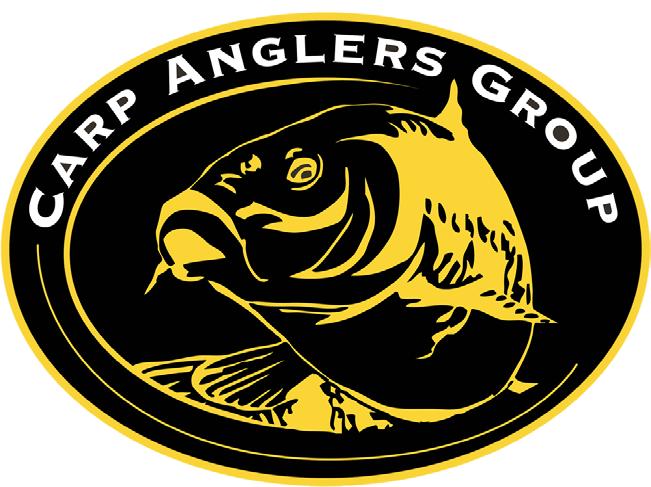

CARP ANGLER
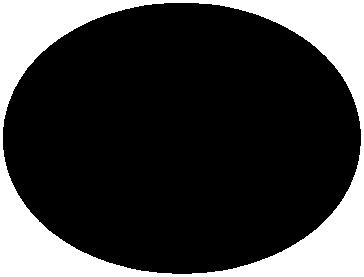


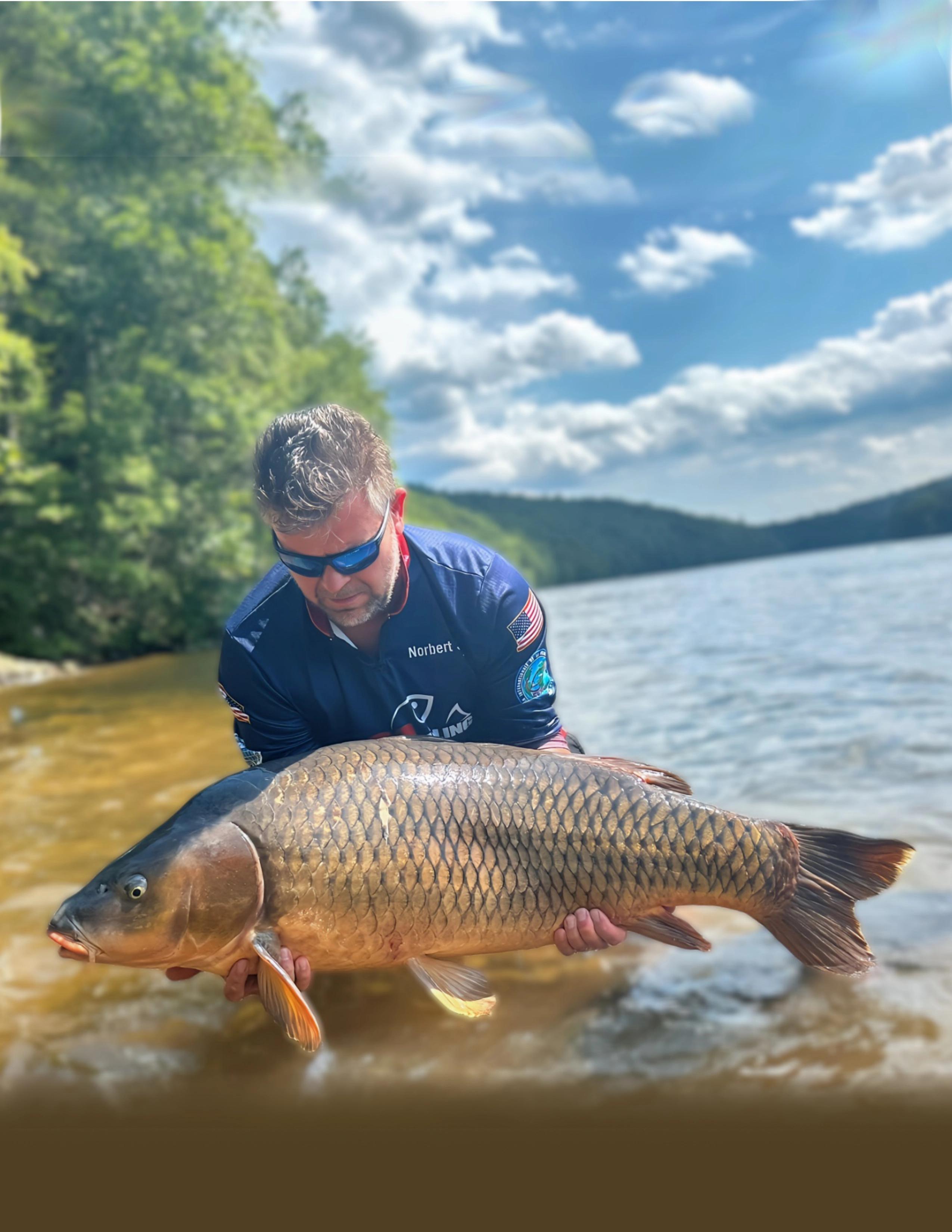

Editor In-Chief Address

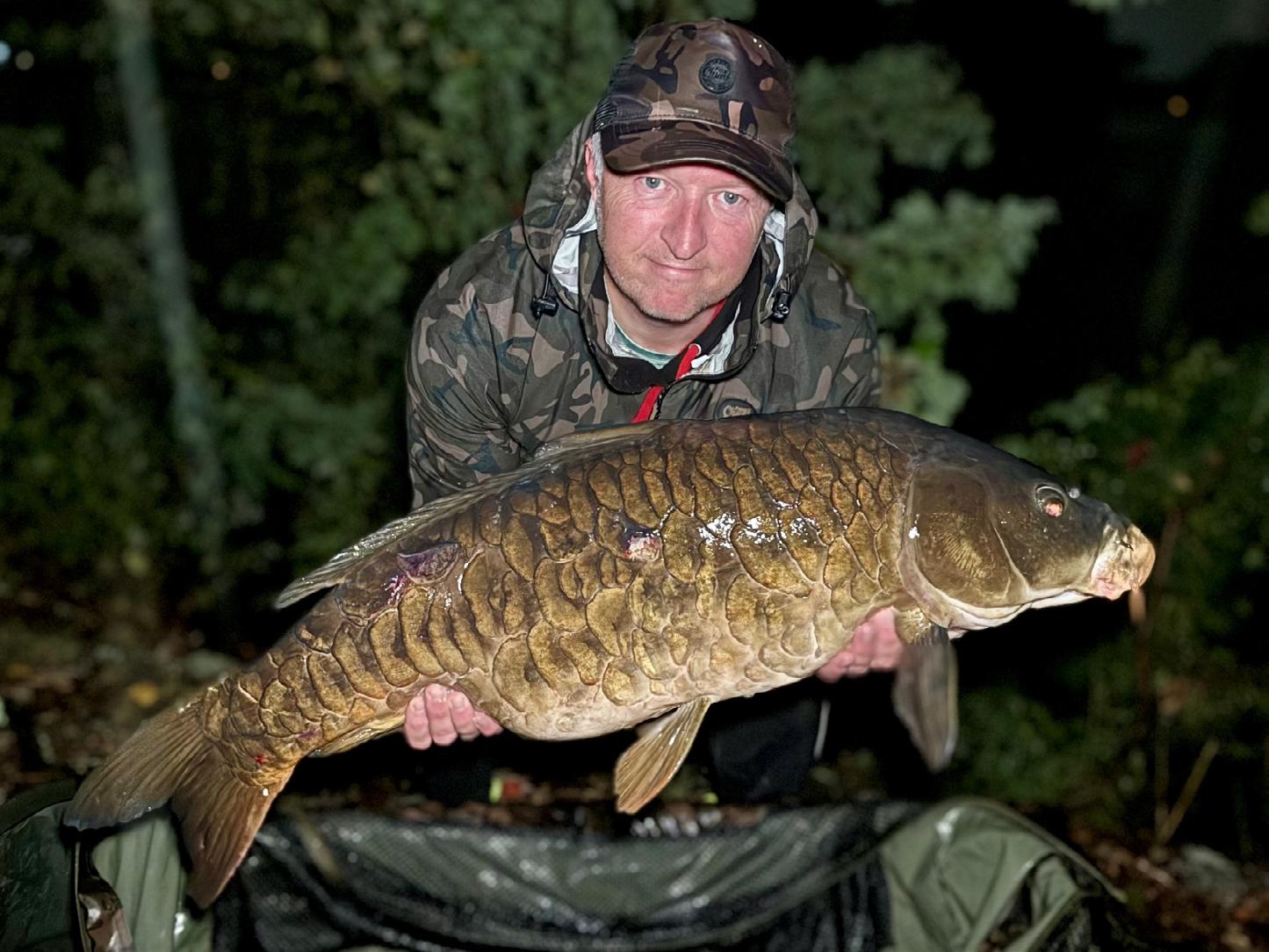
Summer is underway and with that typically brings a halt to my own carp fishing as I am not a fan of the warm, humid weather. However, this year I’ll be starting my Fall campaign much earlier as one of my favorite lakes to fish is fairly productive during the summer nights and there’s always’ the chance of a very special fish paying a visit. Last year I managed quite a few scaley mirrors with a couple of bigger fish amongst them, so I’ll be hoping for similar results.
This spring we’ve seen Connecticut become the center of attention with record carp submissions on three occasions, topped by a massive fish, featured on this editions cover page. One thing this really highlights is the untapped potential of our wild waters. We truly do have some of the best carp fishing in the world if you take into account the fact that with the purchase of a state license you can fish 99% of the waters and rarely see another carp angler on the bank. It’s you versus the carp, which is one of the things I appreciate the most.
We do have to navigate other challenges, such as bank access, recreational boaters, bass anglers casting over your lines, bow enthusiasts etc. but for the most part we are fishing for wild, uncaught carp that can grown in excess of 50lb.
In this edition we have CAG news, Essence of Carping and the Big 4 Spring results. We also have guest articles from a number of contributors. Thanks to everyone who contributed.
As always we rely on our members contributions and I want to thank everyone; both past and present who has contributed to this magazine over the years. Without your input the magazine would cease to exist.
Hope you all enjoy this edition and as always, if anyone would like to contribute; please send any communications or materials to:
naca@carpanglersgroup.com
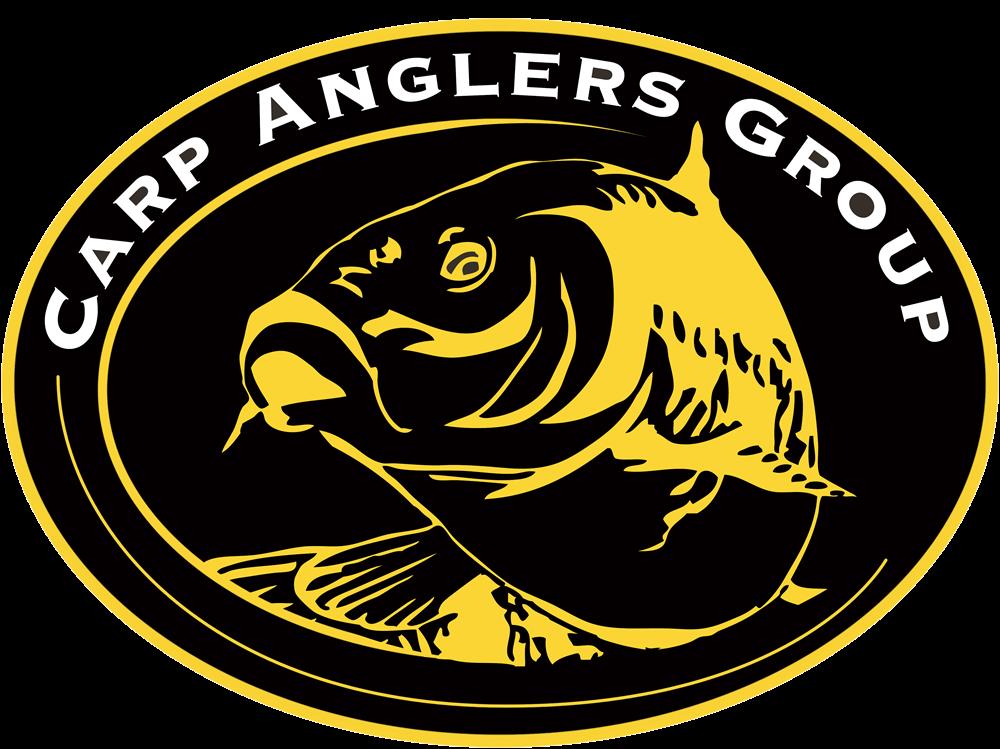
Editor in Chief
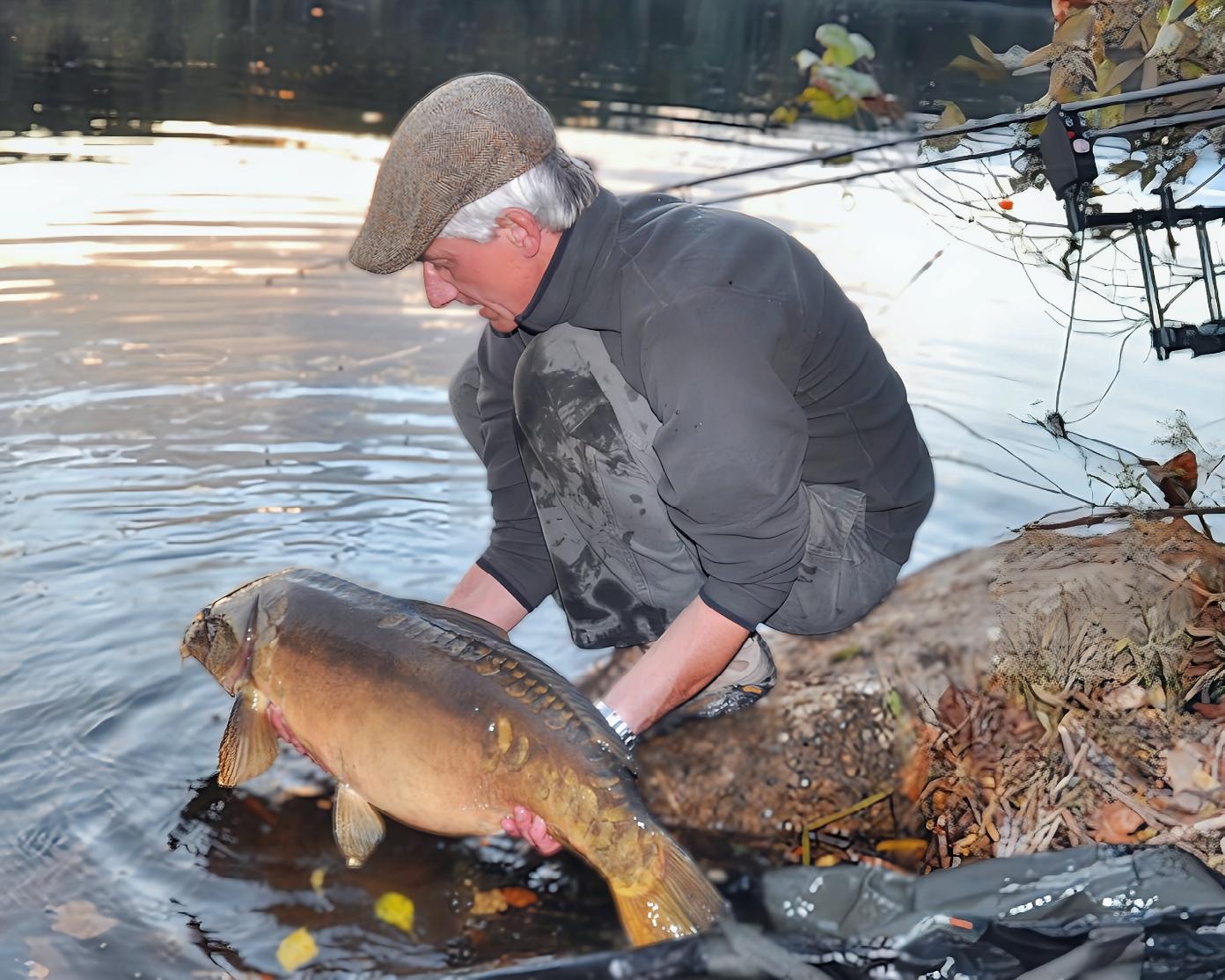
Since the last NACA edition we’ve seen some great catches across the USA. The Spring Big 4 included several notable fish including a new Connecticut record of 45lb 8oz for Rafal Wlazlo. A record which was then promptly obliterated by Norbert Samok with a massive 58lb 2oz common!
President Address


These incredible captures only serve to highlight the importance of catch and release and especially the protection of trophy sized fish. Unlike the wellfed, fast-growing fish in most European waters the carp in North America must depend on natural food sources and not anglers’ baits.
As a result our trophy carp, based on well documented captures over many years, are often decades old.
Unregulated movement of trophy fish, often across state boundaries, to paylakes results in a significant loss of big carp, catfish and buffalo from wild waters.
Bowfishing still continues to pose very significant threats, especially when social media posts highlight big fish captures and bring unwanted attention with, in extreme cases, fish being shot & killed over anglers baited areas.
In this issue the Connecticut Carp Records article highlights the Carp Creel Limits created in Connecticut and the significant outcomes that can be achieved when positive relationships are built with State Fishery management. CAG is at the forefront of bringing about these regulations that protect trophy sized carp. Your support and membership are vital to help us bring about such changes in your state.
Iain Sorrell CAG President
A 30lb mirror that was caught several times over a twenty year period.



CARP AND THE WEATHER?
By Iain Sorrell

I was chatting to my good friend and carp legend Frank Warwick who strangely enough was fishing at the time. ‘We’ve just had some rain after a prolonged dry spell and that’s why I’m out fishing right now. The carp always respond to a change in the weather’ said Frank. As we spoke he got a knock on his left-hand rod and an hour later he sent me a picture of a lovely 31lb common he’d just landed. Weather can often be a key factor for when and where carp will feed. In this article I’m going to look at one of the most influential weather affects – an approaching warm front.
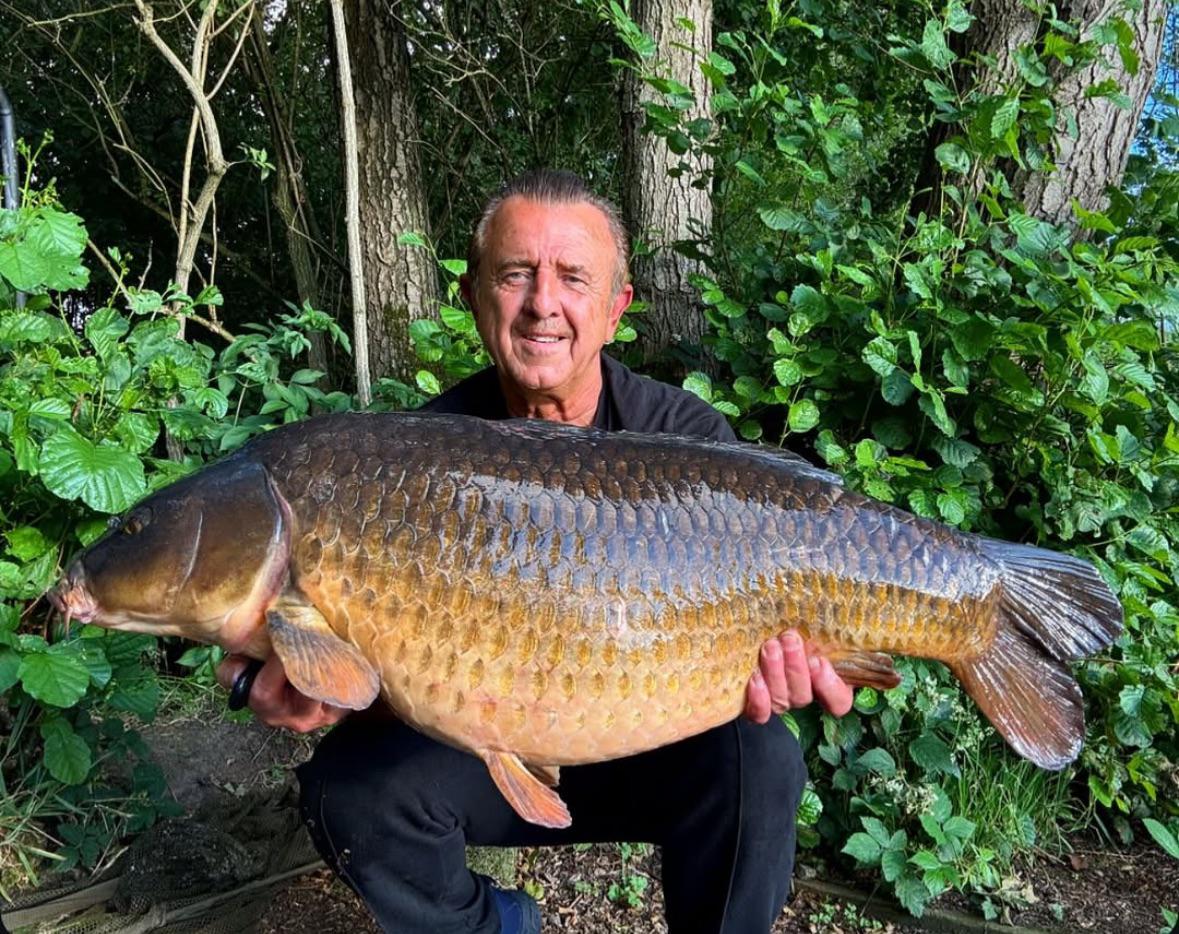
Frank Warwick with a stunning 31lb common

WHAT IS A WARM FRONT?
A warm front typically approaches from the South or Southwest in a northerly direction. It brings with it warmer air temperatures and a slow drop in barometric pressure. It usually heralds unsettled or stormy weather with periods of rain and winds of 10-15mph along with some stronger gusts.
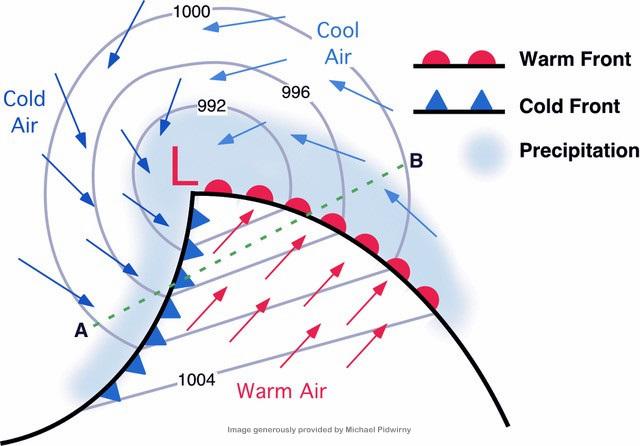
A warm front as it would appear on a weather map (pressure shown in millibars).
As the front approaches the warmer less dense air begins to rise over the cold air still in place and this creates an increasing level of cloud cover. As the clouds build the chances of rain increase as the water vapor condenses leading to persistent rain with periods of higher or lower intensity and a sudden increase in temperature as the front passes through. The passage of a warm front might take several hours to even a couple of days and can be felt over a significant distance.
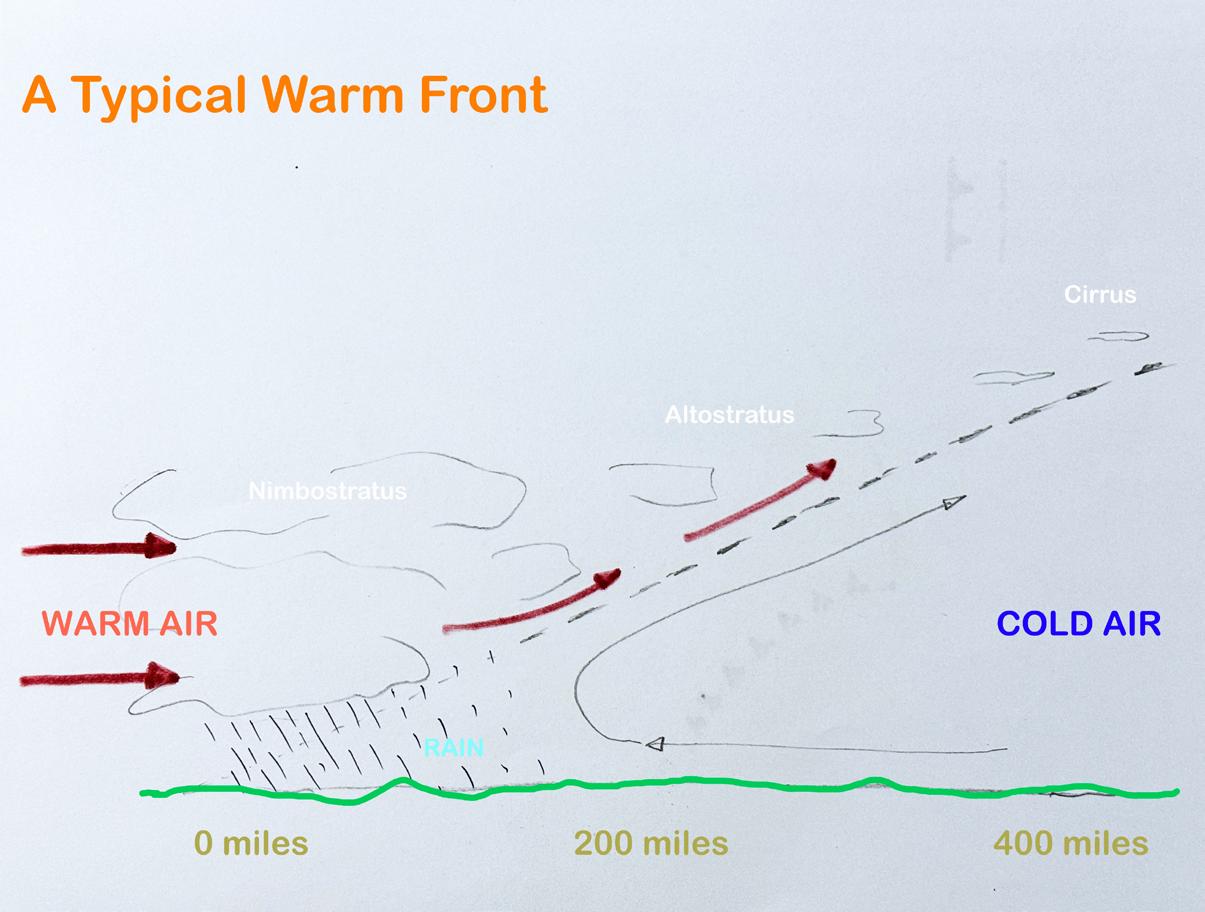
DOES BAROMETRIC PRESSURE AFFECT
FISH?

One of the greatest angling myths is the commonly held belief that fish can detect changes in barometric pressure. But when you search the internet you would be forgiven for thinking otherwise.
Almost 80% of search related content says fish and especially carp can detect these subtle changes in pressure on their swim bladder. The reality is that changes in barometric pressure bring a host of weather-related changes such as wind strength and direction, increased cloud cover, temperature and so on. It is these weather changes and not barometric pressure to which fish and certainly carp respond.
Richard Walker the captor of Clarissa the 44lb record common from Redmire, England in 1952 was considered to be one the most successful and innovative anglers of his time. He created the first bite alarms, distance casting leads and was also instrumental in developing carbon fibre rods. He wrote many thought provoking articles in the British weekly angling newspapers in the 1970’s, one of which dispelled the idea of fish reacting to barometric pressure.
As Walker pointed out, and science confirms, a warm front bringing wind and rain might typically show a change in barometric from perhaps 30.2 down to 29.7 (a change of 0.5 inches/Hg) over a 12 to 24 hour time period.
If it was a slow-moving storm the drop might be 0.02 inches of mercury per hour, while a fast-moving storm could drop 0.05 inches per hour. Since 1 inch of Hg (mercury) or 13 inches of water we can determine that the overall pressure change in this instance as the storm passed through is equivalent to 6” of water. However, and more importantly, the rate of change is a mere ¼” to just over ½” per hour! I’m sure you would agree that a fish routinely moves up and down in the water column so will easily experience that level of pressure change and potentially much more in just seconds rather than over a period of several hours.
HOW DOES A CARP RESPOND?
As explained a gradual drop in barometric pressures indicates an approaching warm front and the potential for stormy conditions. While the air pressure effect on fish is negligible the changes in wind direction, wind strength and increased air temperature are significant.
The wind will help move surface water towards a windward shoreline as well as help increase the water temperature and levels of oxygen as the surface layers are disturbed by wave action and rainfall. That’s why experienced carp anglers will typically fish ‘into the wind’ on a warm front as the wind blows food items and warmer water towards their swim.
As cold-blooded creatures fish will become more active as the water temperature increases and their digestion also becomes more efficient allowing them to eat and process more food.

The same activity increase equally applies to potential natural food sources such as clams, crayfish and insect larvae (bloodworms). If you combine this with other food items that might be washed into the water due to runoff from the rainfall you have a veritable feast. Lastly an increase in cloud cover also helps encourage fish to feed, especially in shallower water, than they might otherwise do in brighter conditions.
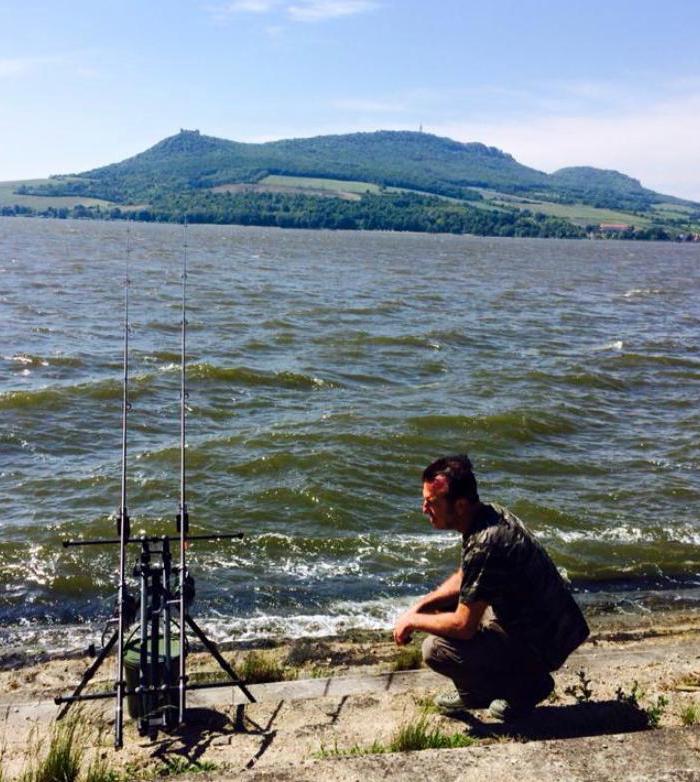
Fishing into the wind… Photo courtesy of Frank Warwick
A CLASSIC EXAMPLE
Late November in New England usually heralds the end of the carp fishing season especially if there has been a string of cold nights and the water temps have fallen below 40F. But it is important to keep your gear and some bait ready to go just in case there is a steady fall in the barometer. Dean’s phone call was all I needed to load up the car and get on the road. After almost 2 weeks with lows of 30 – 34F and air pressure steady at around 30.10 it slowly began to drop and with winds forecast to blow from the South there seemed a good chance for the fish to get their heads down. It was now late afternoon and as Dean and I began to set up the wind was already blowing steadily at around 15 mph.
As the clouds rolled in the air temperature quickly hit the mid 50’s and spots of rain began to fall. The stage was set and all we needed were the carp to respond.
We were fishing over areas with soft sand and depths of just 3-5’ that in the summer would be heavily weeded. From past experience these shallow areas would warm up quickly especially when a warm front came through. These were ideal conditions to encourage the carp to move out of the nearby deeper water to feed.
We both had our lines in just before dark and shortly after at 6pm I had my first run. It felt like a decent fish and it wasn’t long before I netted a nice 28lb mirror. The rain was now falling steadily and at 7pm I had another run resulting in a 20lb common and before I had a chance to recast the other rod was away resulting in another solid common.

A 28lb mirror in the pouring rain.

Dean then got in on the action with a 35lb mirror around 9:30pm after which it went quiet. Around 5am the rain finally stopped leaving a dense, warm fog on the water.

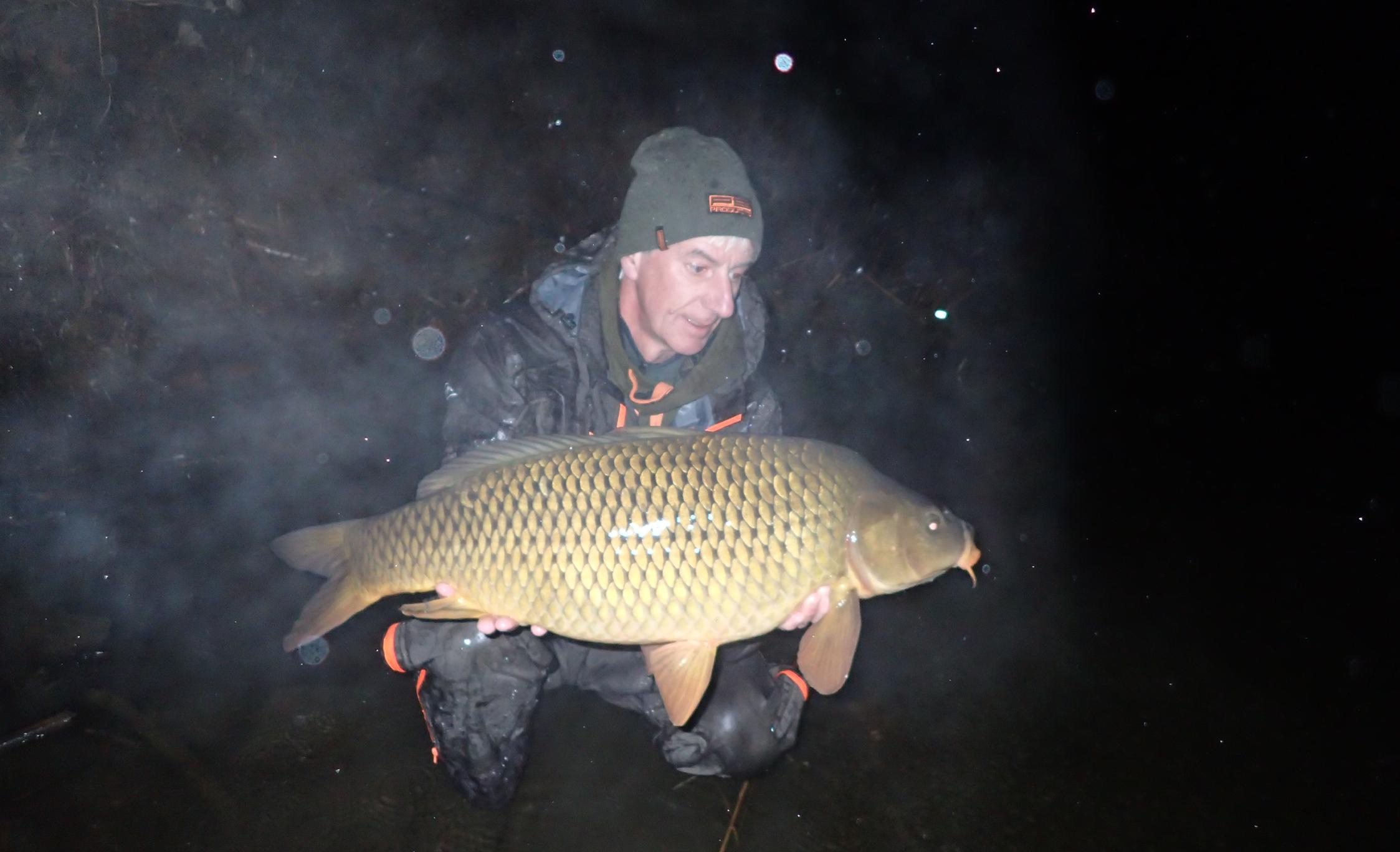
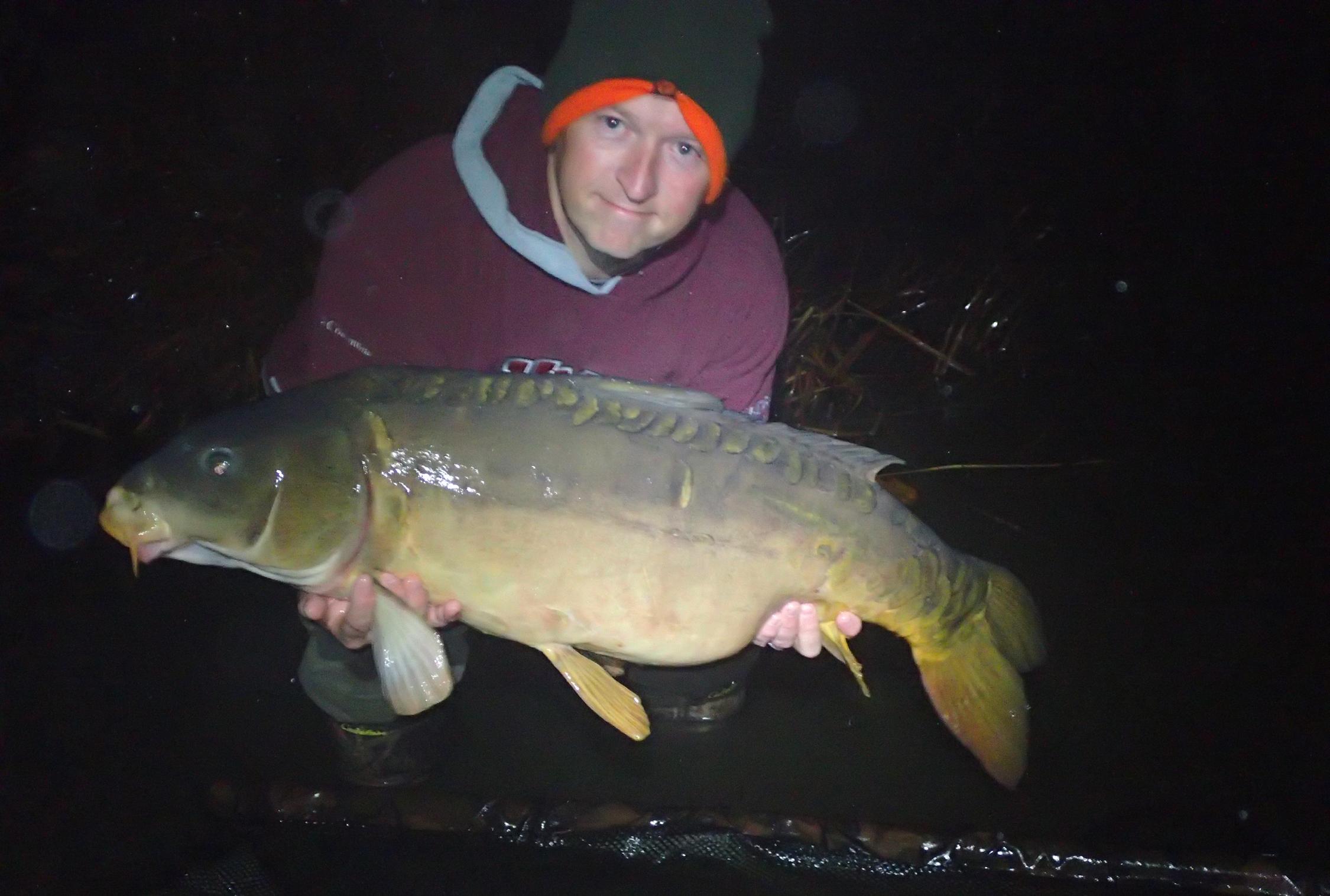
One of two commons back to back…
Dean with a solid 35lb mirror
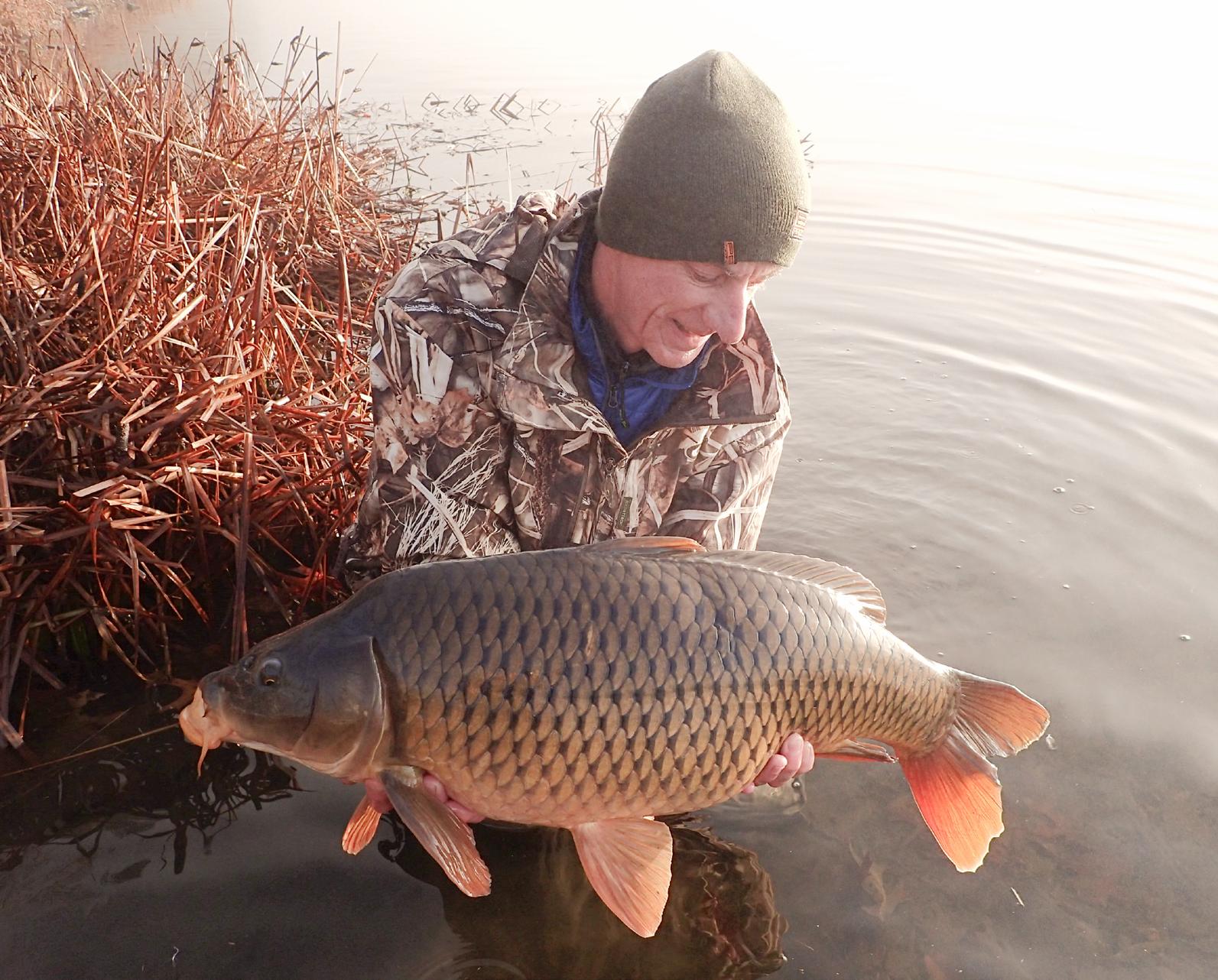
As dawn broke we each had another couple of fish including a 34.09 plus mirror for myself and another common for Dean. By 10am the fog had lifted and the skies brightened bringing an end to the fun.

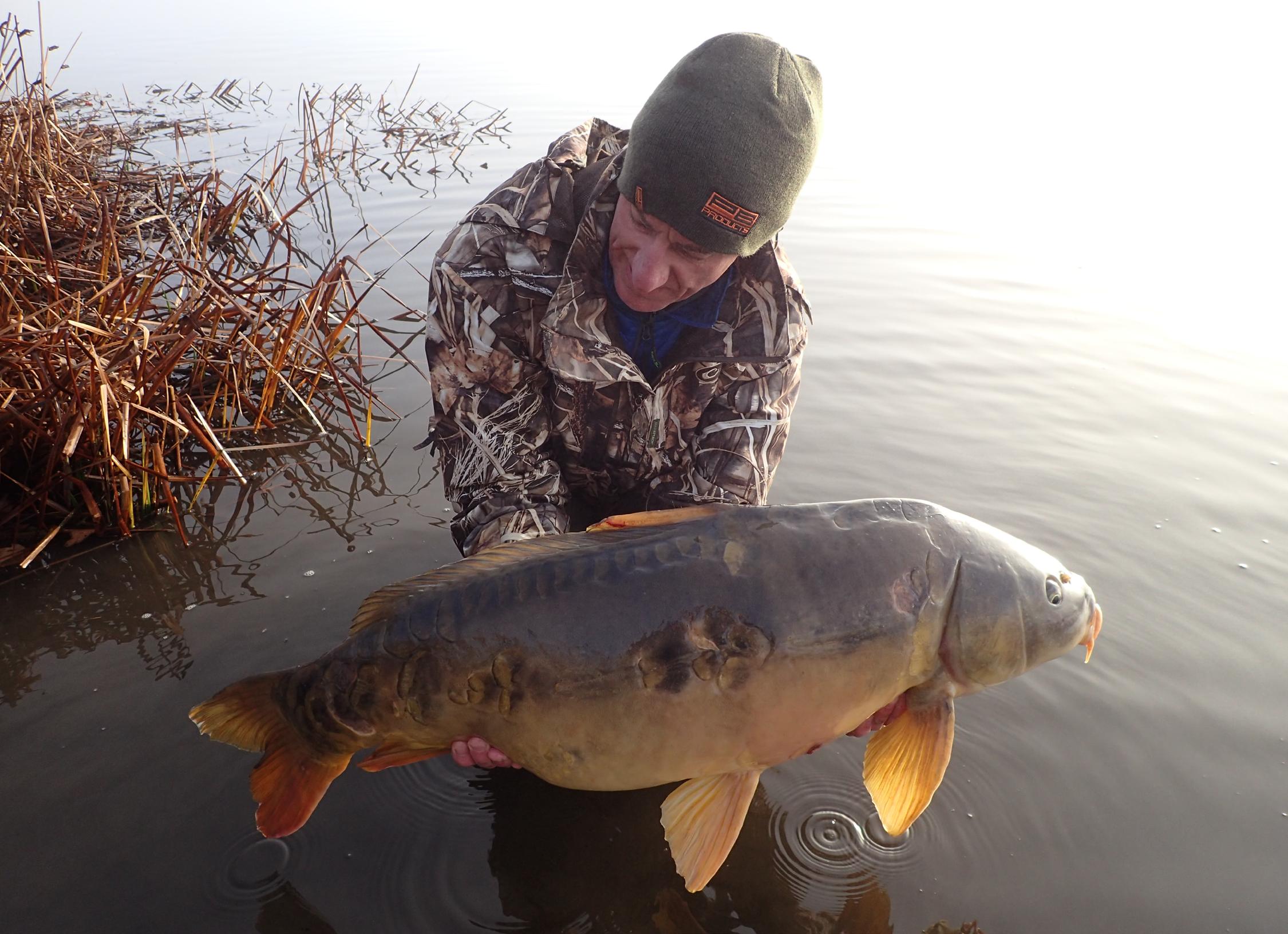
Iain with a 34lb 9oz mirror to mark the end of a memorable session.

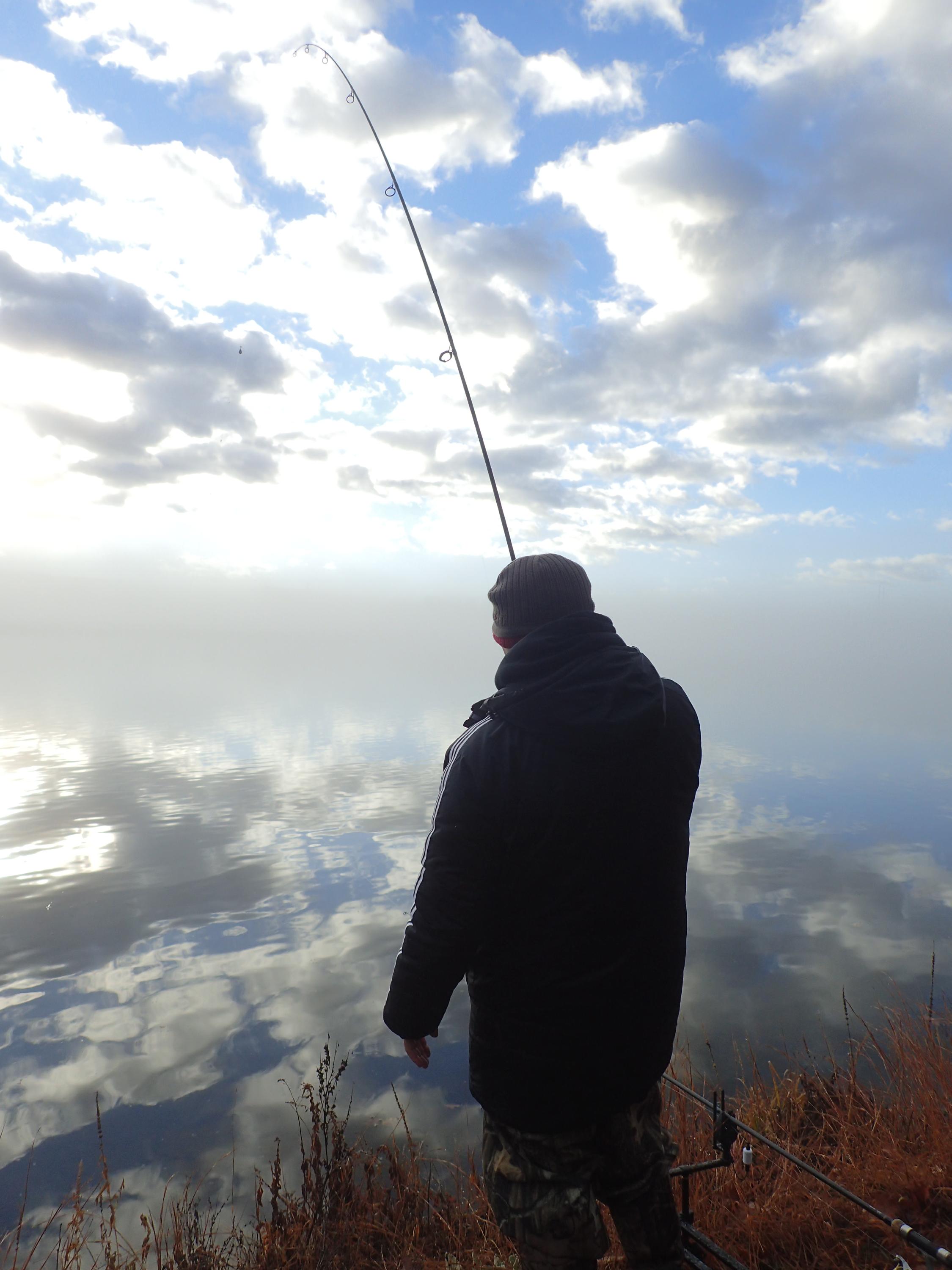
Dean wraps up the session playing a nice fish as the skies clear and the fog lifts.
It is well worth taking some time to follow the weather patterns and see how they apply to your local waters. A National Weather Map from NOAA https://www.wpc.ncep.noaa.gov/dailywxmap/ can show you approaching warm fronts and changing weather patterns.
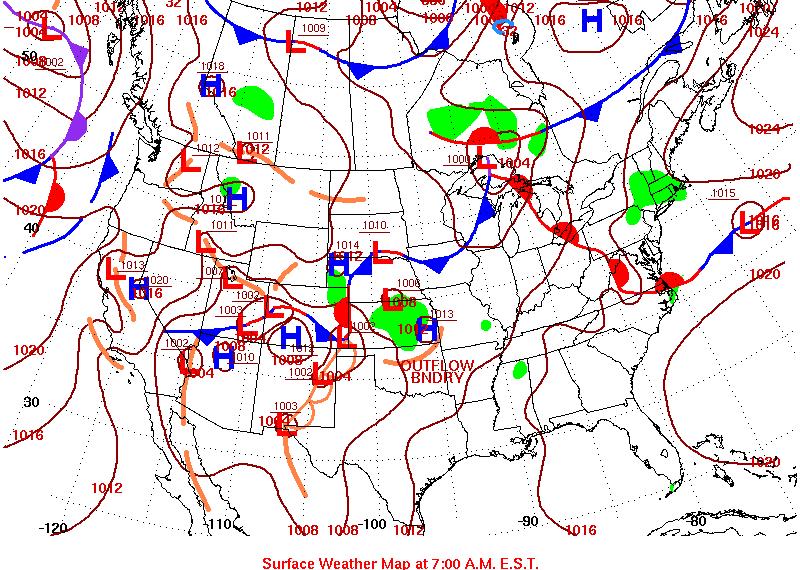
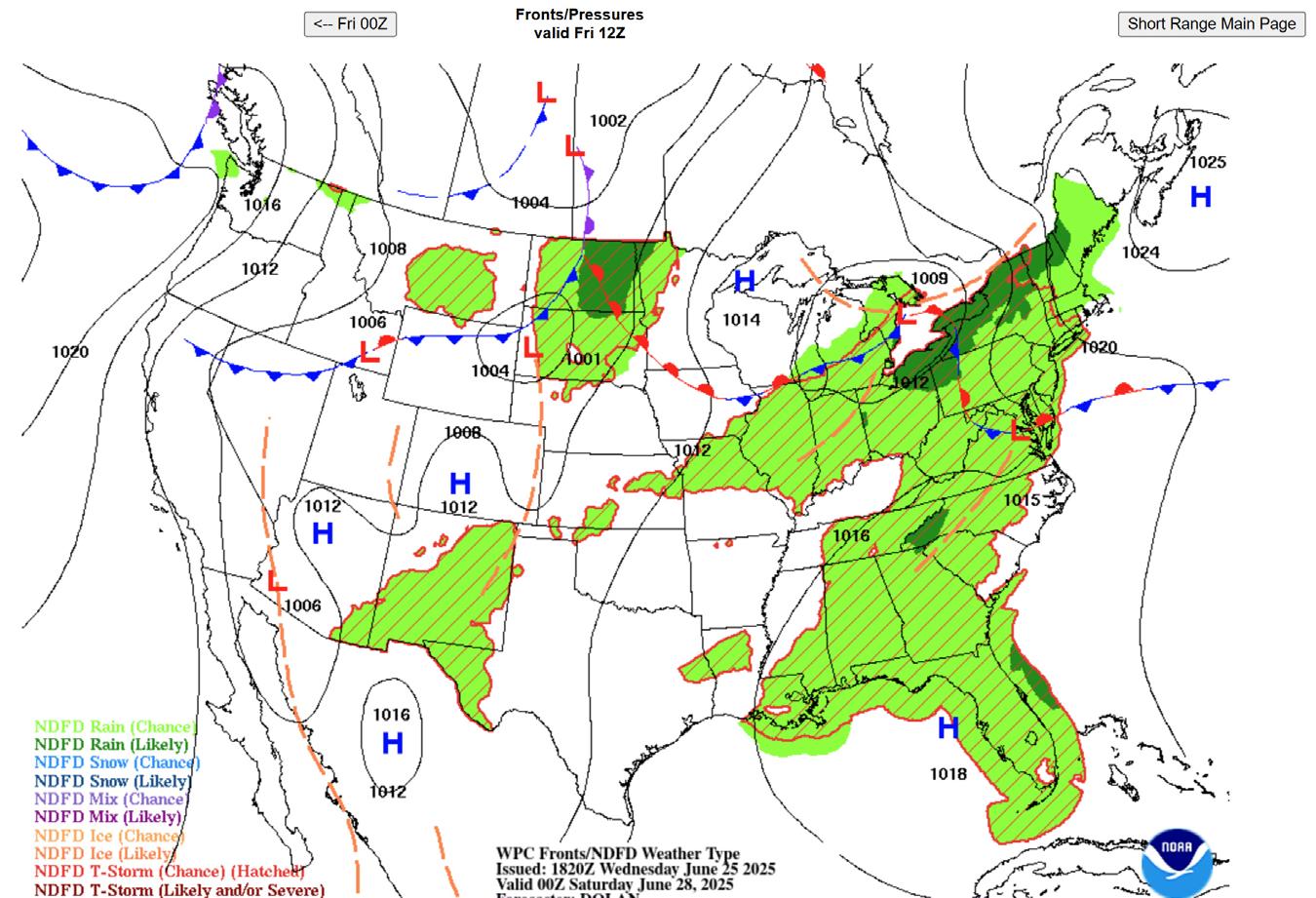

If you combine this with a weather app (Weather Underground or WeatherBug) you can follow local forecasts along with changes in barometric pressure, wind strength and direction etc.
A fishing log that keeps track of weather conditions along with the details of your catches, or blanks, can help build a wealth of information. Then if the conditions look promising you can be ready to drop everything and go fishing!
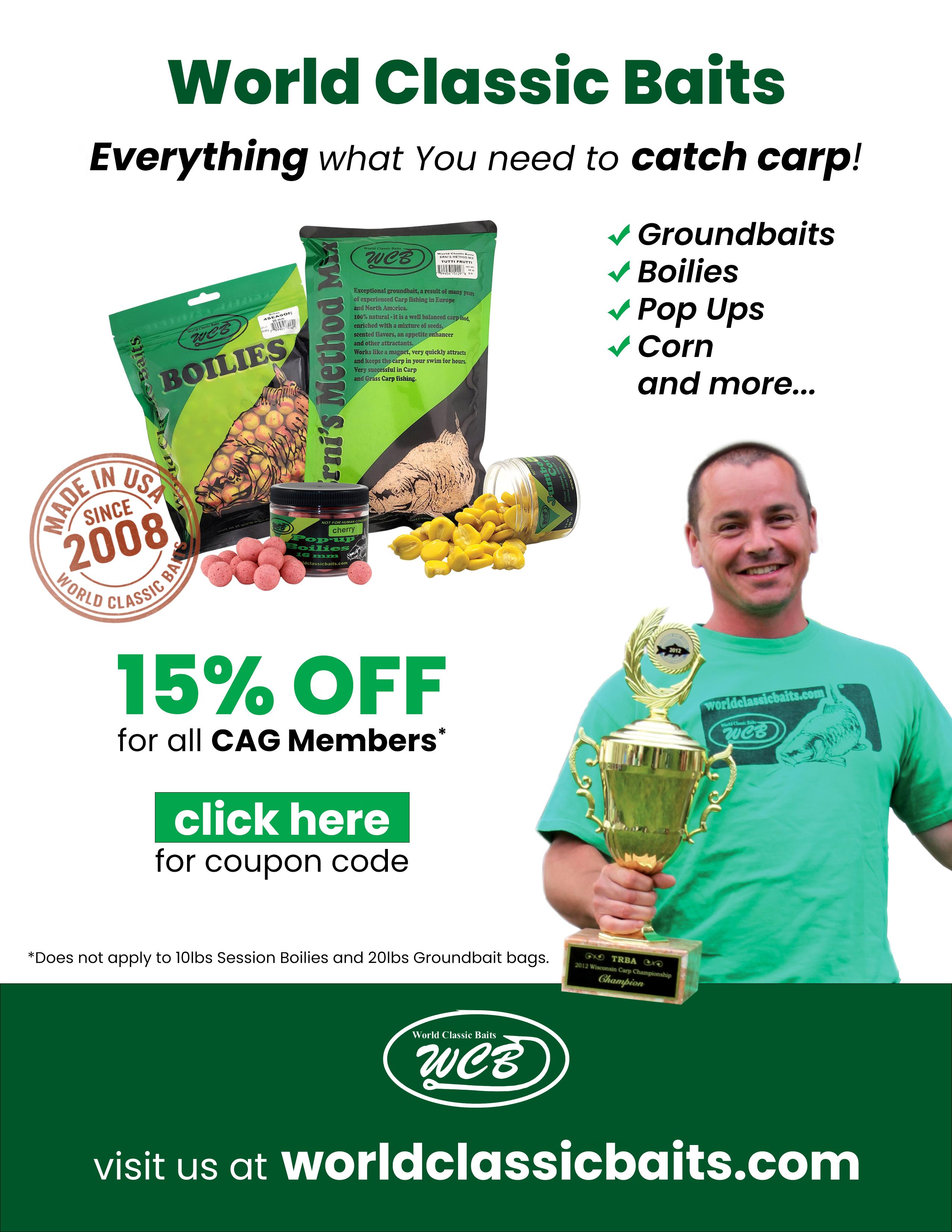
Of Carp and Koi

By Jerome Moisand

This write-up was inspired by an idea from Kodama Koi Farm
Background
I was born in France (where carp fishing is as popular as bass fishing in the US). I fished for carp for 25+ years and I used to be the vice-president and treasurer of the Carp Anglers Group, which promotes carp fishing in the US. My wife and I now live north of New York City and I fulfilled a lifelong dream of having a large koi pond.
The Mid-Atlantic Koi Club was extremely helpful in the process. Our pond is a little peculiar because we have koi, goldfish AND a few wild common carp and even two grass carp.
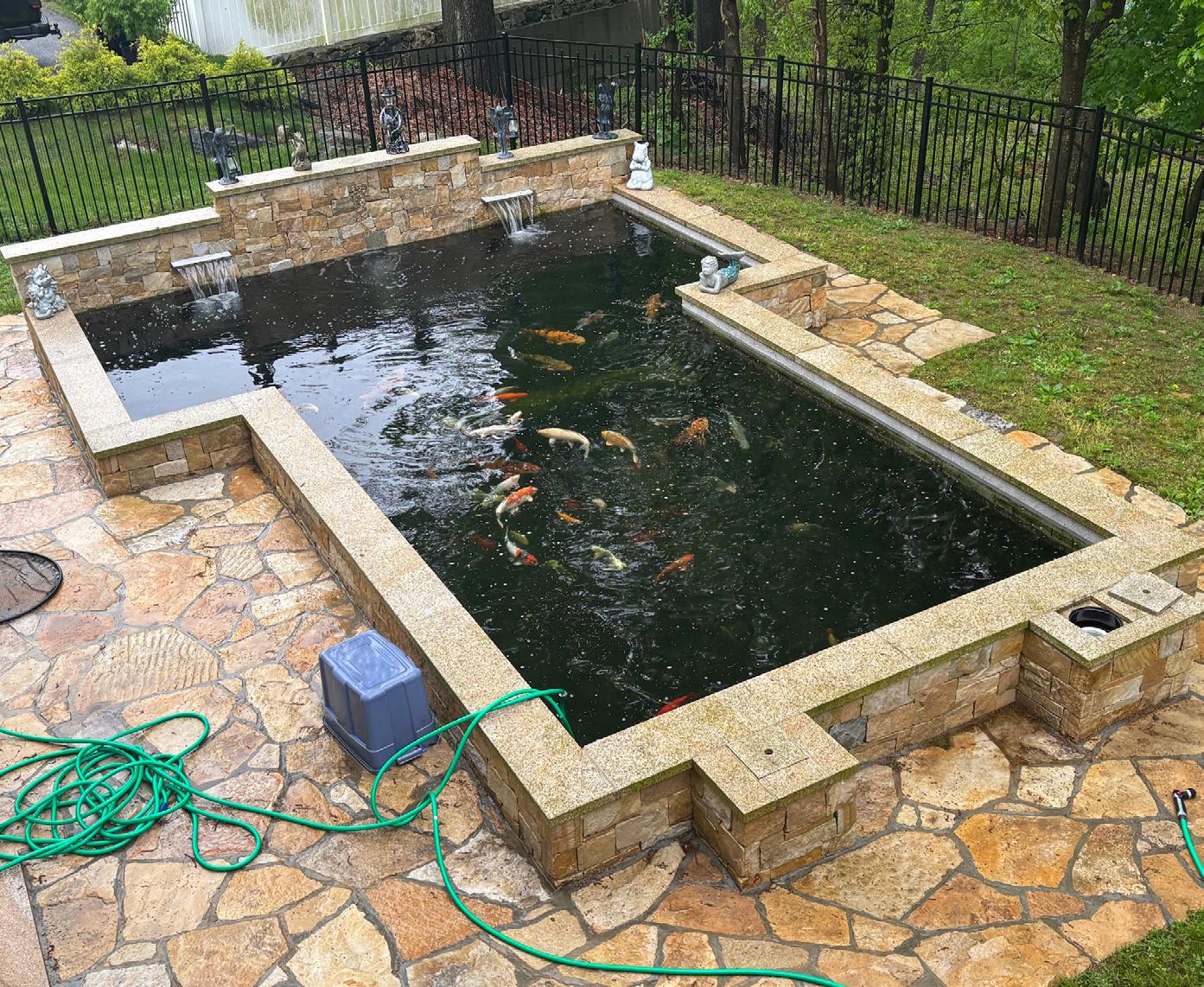
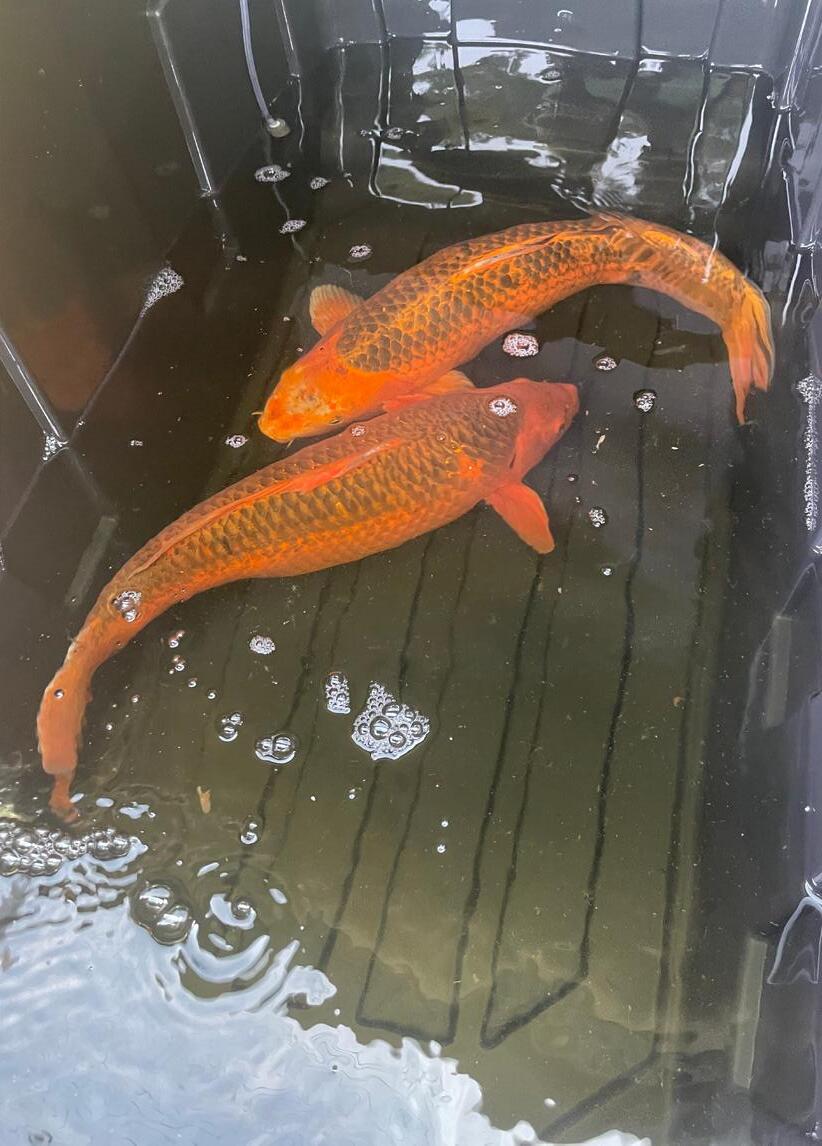
My koi pond (~13,000 gallons)
Oompa and Loompa, my koi twins

A common carp in its natural environment
Carp in the US: short history
By the end of the 19th century, waves of immigrants were seeking an easy food source. The US government selected common carp (Cyprinus Carpio) as a potential answer, as carp are highly adaptive and sturdy fish, which can grow fast. Common carp were imported from Germany and a very well organized effort soon led to carp being introduced in most states of the US. Europe (notably eastern Europe) and Asia (notably China) had for centuries a culture of eating carp. Carp remains a traditional dish for Christmas in eastern Germany to this day.
Carp aren’t terribly tasty though and as freezing and transportation systems developed, allowing

seawater fish to be available beyond the coasts, the use of carp as a food source was quickly forgotten by most communities.
The industrial period and its increasing levels of pollution then led to a negative perception of carp in the US which lasts to this day. Carp are bottom feeders and highly tolerant of murky or polluted waters—more so than trout or bass.
Over time, people wrongly assumed this meant carp caused the poor conditions, and they became labeled as ‘trash fish’. If carp could speak, they would ask who created such pollution in the first place! Nowadays, wild carp are very widespread all over North America in ponds, lakes and rivers. I have caught (and released) them in 45 states at this point. Some of those waters remain highly polluted, others are crystal clear and carp just adapt.

Many people call common carp invasive, but they often overlook that most fish species in the US -including brown trout, salmon, and muskies- were also introduced by humans. These introductions aimed to recreate European ecosystems, where carp coexisted peacefully with other species for thousands of years. Serious biologists now refer to “adapted species” to speak of non-native species which found a balance in a new environment and both common carp and trouts are a good example. The primary issue actually comes from confusion with other (unrelated) species, which we’ll discuss later. Bass anglers often complain about carp, thinking they destroy bass nests (which I have never seen), but I sure did see bass and muskies feasting on carp eggs and small carp fry. Nature is a little harsh, but it finds a balance (when human beings don’t overly interfere, that is). If you’re not convinced, just travel to Europe, take a boat trip and speak with local anglers!
Carp and Koi: patterns and history
Common carp have been bred in Europe and Asia (notably China) for more than a millennium, essentially as a food source. Carp have this interesting characteristic of having occasional minor mutations. Every koi enthusiast knows about mirror koi (“Doitsu” in Japanese terminology) with bare skin and oversize scales. In the Middle Ages, monks in Europe got into the habit of selectively breed common carp to get more mirror carp because they were much easier to scale before cooking them!
A rarer mutation lead to some colorful fish, which didn’t seem terribly useful until Japanese breeders honed in on it in the early 19th century, for aesthetic pleasure as well as symbolism (carp leisurely swimming made them a symbol of wisdom, and some viewed them as a semi-divine creature). After a couple of centuries of selective breeding, we now enjoy incredible color and scaling varieties of koi. And this all started from the lowly common carp and its rather dull brown colors! Unsurprisingly, koi actually means ‘carp’ in Japanese (as well as ‘joy’ and ‘love’).
Coming back to common carp, there are three main varieties in the wild, due to recurring genetic mutations (which do not prevent interbreeding), regular common carp with small scales covering their entire bodies, mirror carp with large scales and patches of bare skin, and leather carp with a small row of tiny scales on top and bare skin bodies. In the US, leathers do not seem to exist, while they are quite common in Europe. Fin colors are typically similar to their body, but sometimes display shades of orange or red, depending on what they eat. Fantails (long fin) carp are quite rare, but can be found in some areas.
Koi enthusiasts will of course recognize such patterns which are often sought for their visual beauty.
I have caught a few colorful koi in the wild, but it was usually in a pretty urban environment where somebody might have released a Japanese koi which overgrew their aquarium. Check the last picture below though, this is a regular common carp with one small spot of orange, a a subtle reminder that the genetic roots of koi beauty still exist in wild populations.
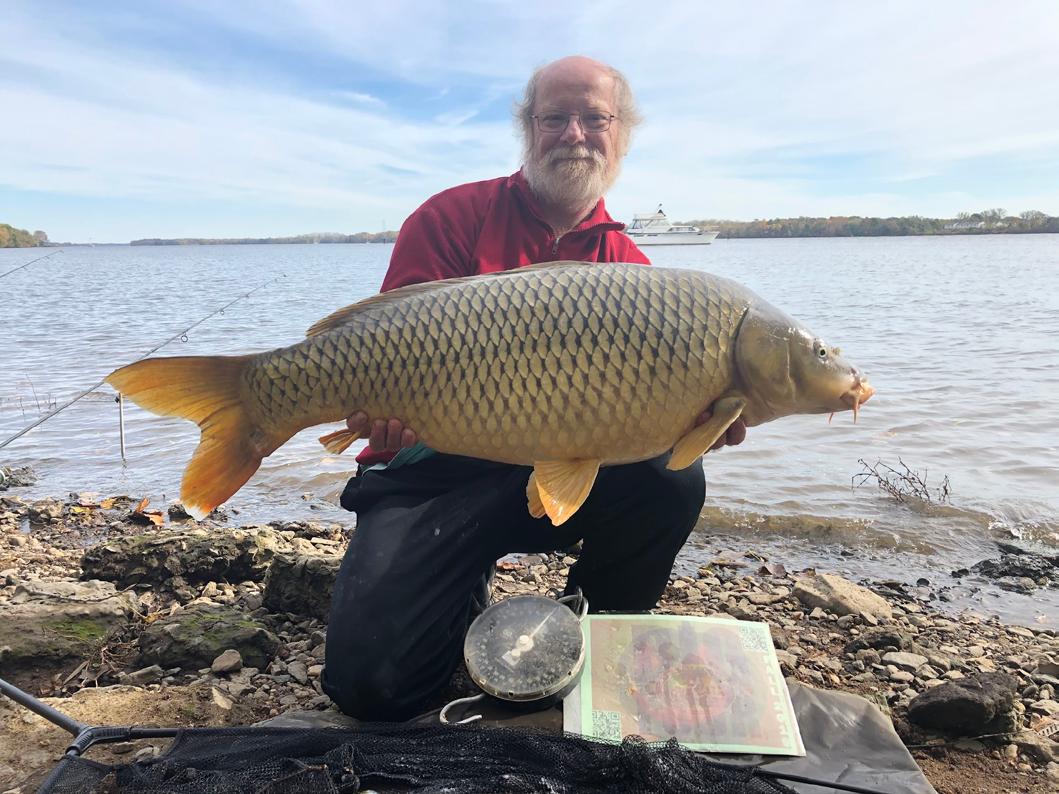
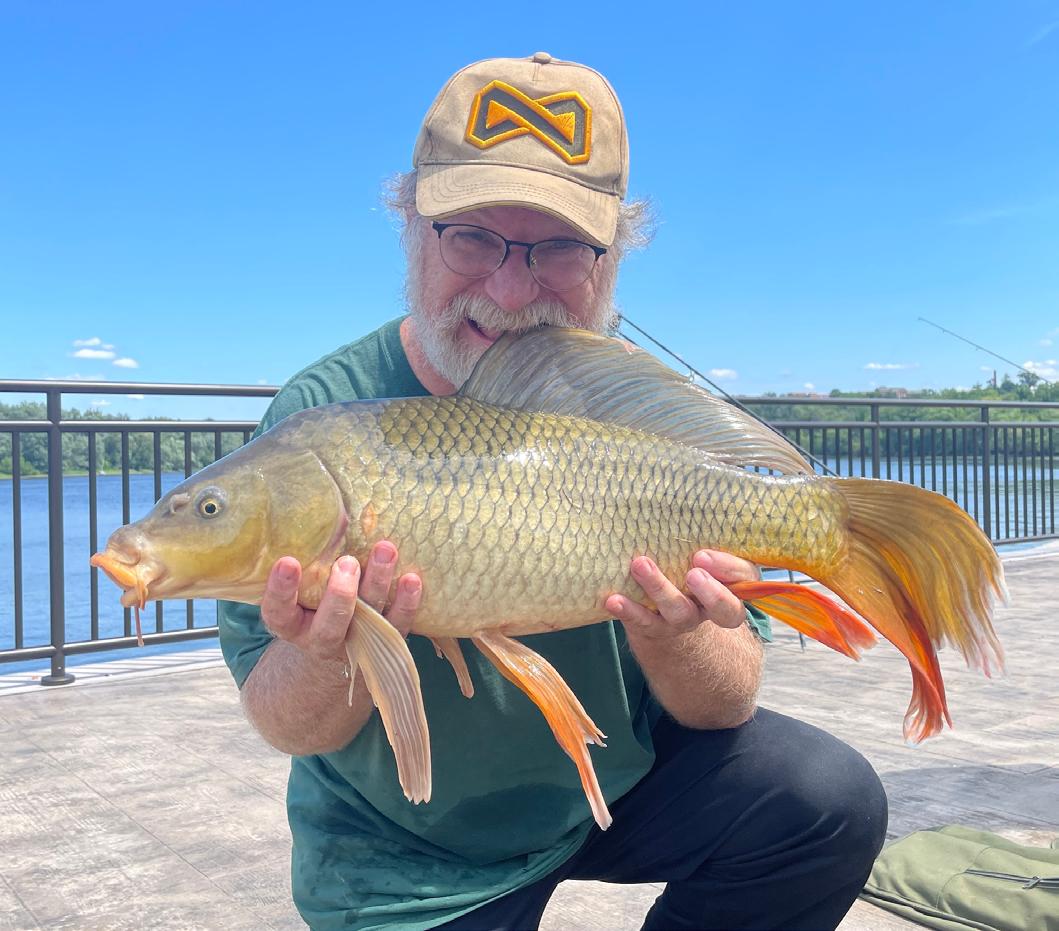
Carp and Koi: a few differences
To be clear, selective breeding doesn’t change biology, it just enhances some physical traits (e.g. colors), therefore koi and common carp remain the very exact same species and will coexist and interbreed. As previously mentioned, carp are very adaptive creatures though and will learn new behaviors to adjust to their environment.
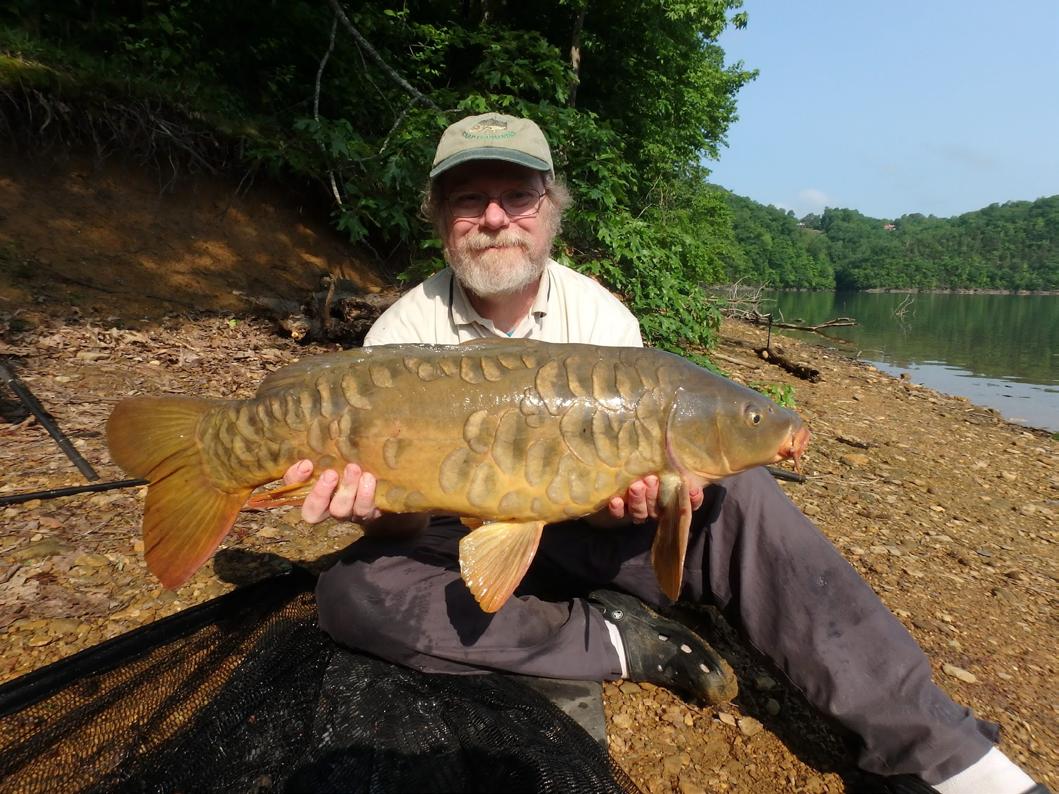


Case in point, a common carp is essentially a bottom feeder. Its mouth can extend downwards like a vacuum cleaner and they use their pectoral fins to lightly stir up the bottom to extract nutrients while their barbels help detecting edible food. If you pay attention to your kois, they probably do the same thing, vacuuming the pond’s bottom, even if there is not much to find. Koi typically feed on floating food, and it’s just them adapting to their environment. The few wild carp I have in my pond got used to it too.
A large common carp from the Delaware river
A mirror carp from a reservoir in Tennessee
A fantail carp from the Connecticut river
A common carp with a spot of koi!

Wild carp sometimes do the same, e.g. sucking a snail from under lily pads. Another difference is how they respond to noise and human presence.
Like many fish, carp and koi have a lateral line organ that detects vibrations. Try stomping on the ground close to a natural pond and you might very well frighten some carp which were cruising close to shore. One would say that koi do the exact opposite, being attracted to the sound and sight of human beings bringing food.
And it’s just another form of adaptive behavior. There are various marinas in the US where local owners got in the habit of feeding wild carp pretty much every day and then you will see hundreds of wild carp acting like hungry koi. The wild carp in my pond aren’t as tame as my kois, but I think it’s just a matter of time.
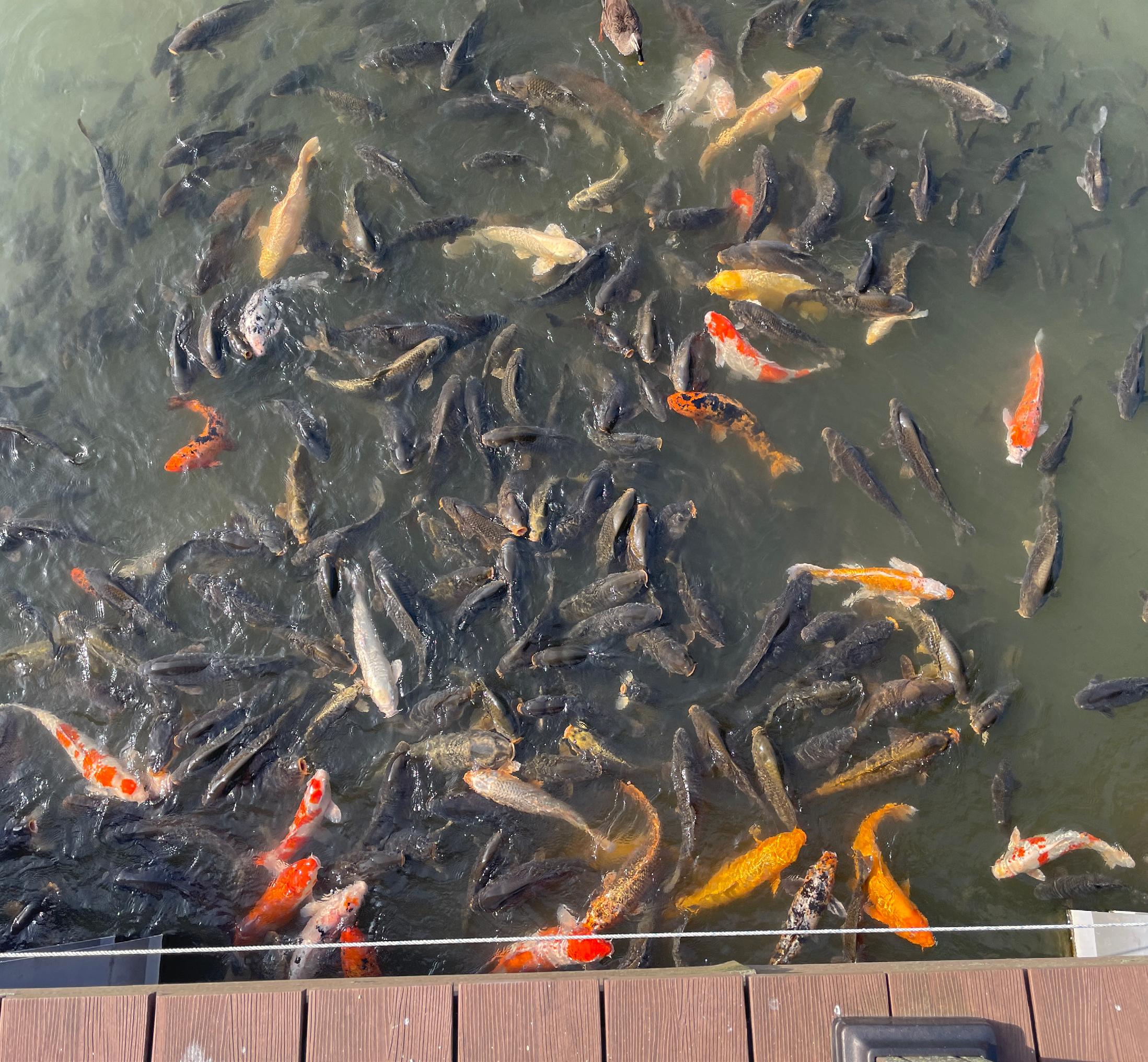
Koi and carp feeding together (pond in South Korea)

About size, the average wild carp size in the US is around 10 pounds, but it varies a lot (I’ve caught them up to 50lb) and it is really a function of the environment. The same applies to koi, of course, depending on how well they are fed and how well they are taken care of. At the end, we tend to see bigger koi than wild carp and it’s basically about food quality. Carp anglers are actually well aware of the advantages of using protein-rich bait (in Europe, common carp over 80 or even 100 pounds have been caught in special venues where big carp are fostered - yes, like koi). Note that wild carp will often get their protein fix from swallowing clams, mussels and crayfish, crushing shells with the powerful teeth they have in their throat. Did you know that your kois have the same pharyngeal teeth? They sure do!
Where there is a more significant difference is the way wild carp and koi react to parasites and bacterial infections. Common carp are incredibly robust fish and can survive not only murky and polluted environments, but also big scars due to boat propellers or various predators, and subsequent infections. Koi, as a consequence of selective breeding and living in very contained environments, tend to be more fragile. I think this is why we see wild carp jump more often than koi, probably trying to clean their gills from parasites. They live in a tough world and the bottom of wild waters is nowhere near as clean as our koi ponds! Also, by nature, wild carp will be very opportunistic and will eat pretty much anything, including some pretty unsavory stuff. This contrast highlights just how different the life of a pampered pond koi is from its resilient wild cousins.
Let’s touch on seasonal considerations to finish. Koi keepers usually avoid feeding under 50°F. This point puzzled me to no end as wild carp tend to be ravenous mid to late fall when the water temperature drops to the mid 40s or lower. And yes, they do digest their food as the whole point is to fatten up for the winter.
For sure, koi would do the same if given the opportunity. It slowly dawned on me that the main reason might be more about the nitrification cycle, as corresponding bacteria do seem to significantly weaken under 50°F and this is problematic in a small contained environment like a koi pond (and much less so in a larger ecosystem). Early spring, wild carp tend to stir up and seek shallow sunny areas for some light feeding, and their timing seems pretty similar to the koi in my pond. Once again, their biology is identical—the real difference lies in how carp and koi are cared for, or left to fend for themselves.
A carp is a carp, isn’t it?
You may have noticed that I often used the ‘common carp’ terminology instead of just saying ‘carp’. For a reason which escapes me, unrelated species are called ‘something carp’ in the US, apparently just because of their size and bulk. In Europe or Asia, a grass carp is called a white amur and the scientific name is Ctenopharyngodon idella. You will occasionally find grass carp roaming in Japanese koi ponds. A grass carp is a long silvery fish with a short dorsal fin and is often introduced in natural ponds and lakes for its ability to eat a lot of weeds.
I have one in my koi pond which is 4 feet long! Grass carp are omnivorous, like common carp (and koi), even though they sure like weeds. Koi food works fine for them, they are actually more natural surface feeders than common carp. Note that there is another species called black amur (Mylopharyngodon piceus) or black carp, which looks very similar, albeit darker and more carnivorous. In the south and central parts of the US, we can find buffalo carp. Smallmouth buffalo (Ictiobus bubalus) and black buffalo (Ictiobus niger) can grow to

60 pounds or more, their general shape does look similar to a bulky common carp, but their snout and eyes are very distinctive. Another variety, the bigmouth buffalo (Ictiobus cyprinellus) can live over 100 years, barring human interferences. Buffalo carp are actually native to the US and now coexist peacefully with common carp, with fairly similar feeding habits. I was recently traveling in Mississippi, and one morning, I caught two common carp and two buffalos, same bait, same rig, very distinct fish!
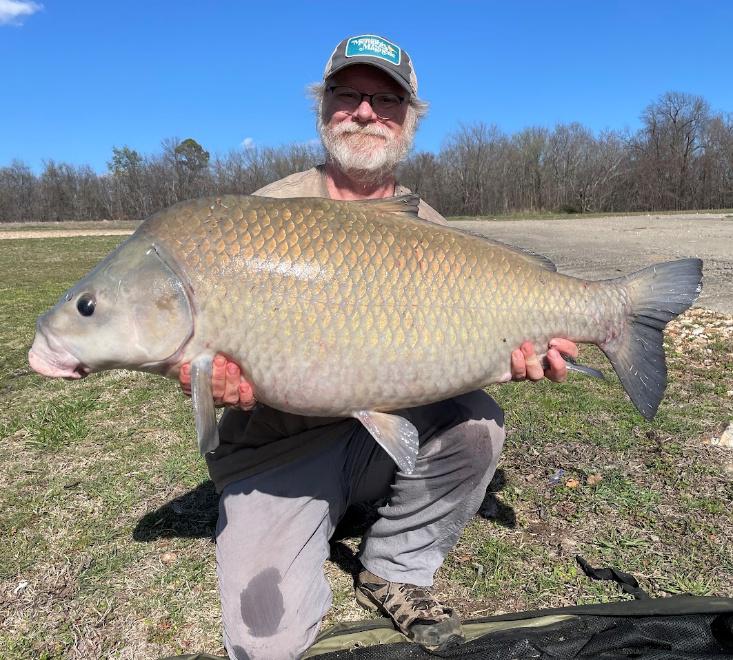

Then we have the real troublemakers, the only ones which really deserve the ‘invasive’ moniker. First, the bighead carp (Hypophthalmichthys nobilis) which can grow enormous (over 100 pounds) and then the dreaded silver carp (Hypophthalmichthys molitrix). The latter received a lot of media coverage for their leaping abilities, notably when startled by boat engines. Both species are often referred to as ‘Asian carp’, which is rather silly as they have nothing to do with (common) carp and have their
own very distinct shapes. It is true that both species originated from Asia, but then common carp and grass carp are widespread in Asia too. Both species are ravenous filter feeders and tend to consume a lot of plankton, which can severely impact the entire ecosystem.
History will tell how nature will find its balance again (it did in Asia after all), but it is certainly true that bighead and silver carp can be extremely disruptive.
My first grass carp over 50lb!
A smallmouth buffalo from Oklahoma
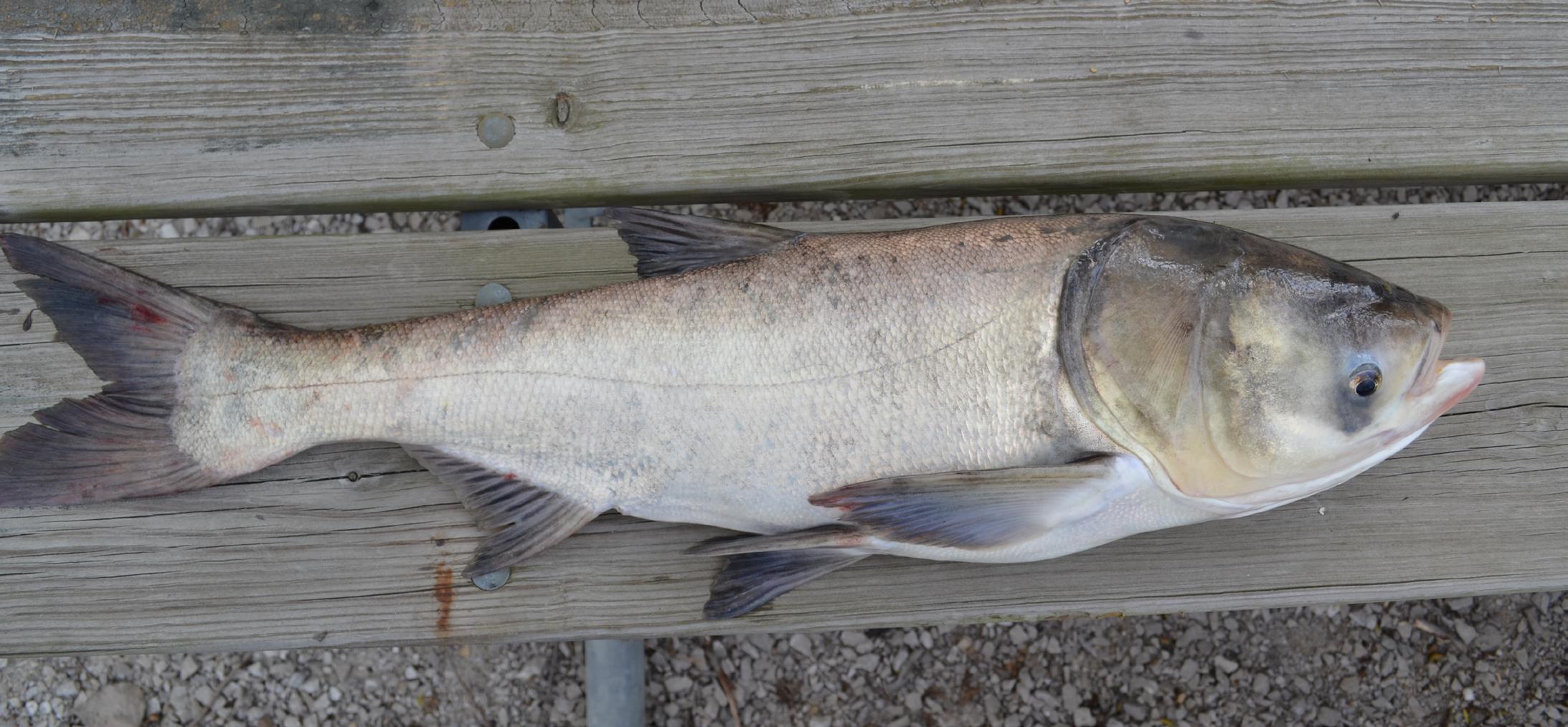
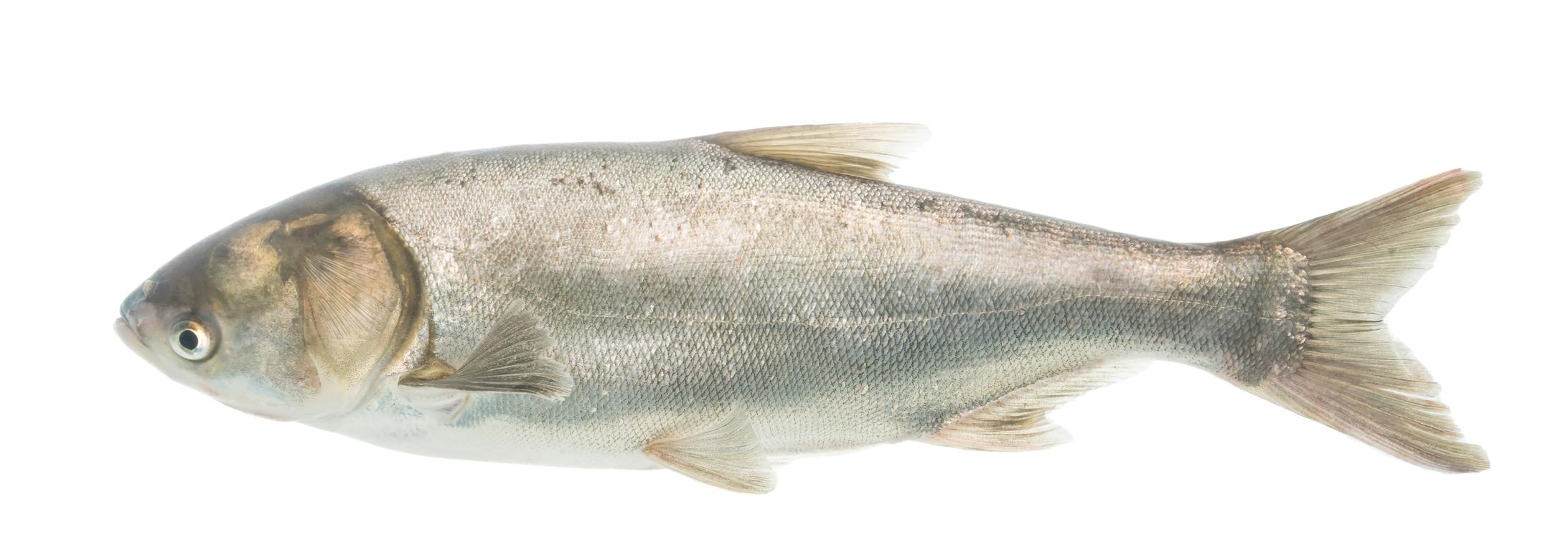
Finally, I didn’t mention crucian carp (Carassius carassius) because they are rarely found in the US. They look like small common carp, albeit without barbels and staying pretty small (e.g. a few pounds). Kind of a big goldfish without the fancy colors!
To summarize
As discussed above, koi are essentially colorful common carp, selectively bred for beauty and symbolism. Any difference in behavior between koi and common carp is tenuous and usually a consequence of the environment in which they live.

Koi tend to be more fragile and require more care though, while common carp tend to be very resilient. They will happily coexist in a pond and feed on the same food. Common carp should not be confused with more troublesome filter feeders like bighead carp or silver carp. Please enjoy nature and all its offerings!
Bighead carp (from wikipedia)
Silver carp (from wikipedia)
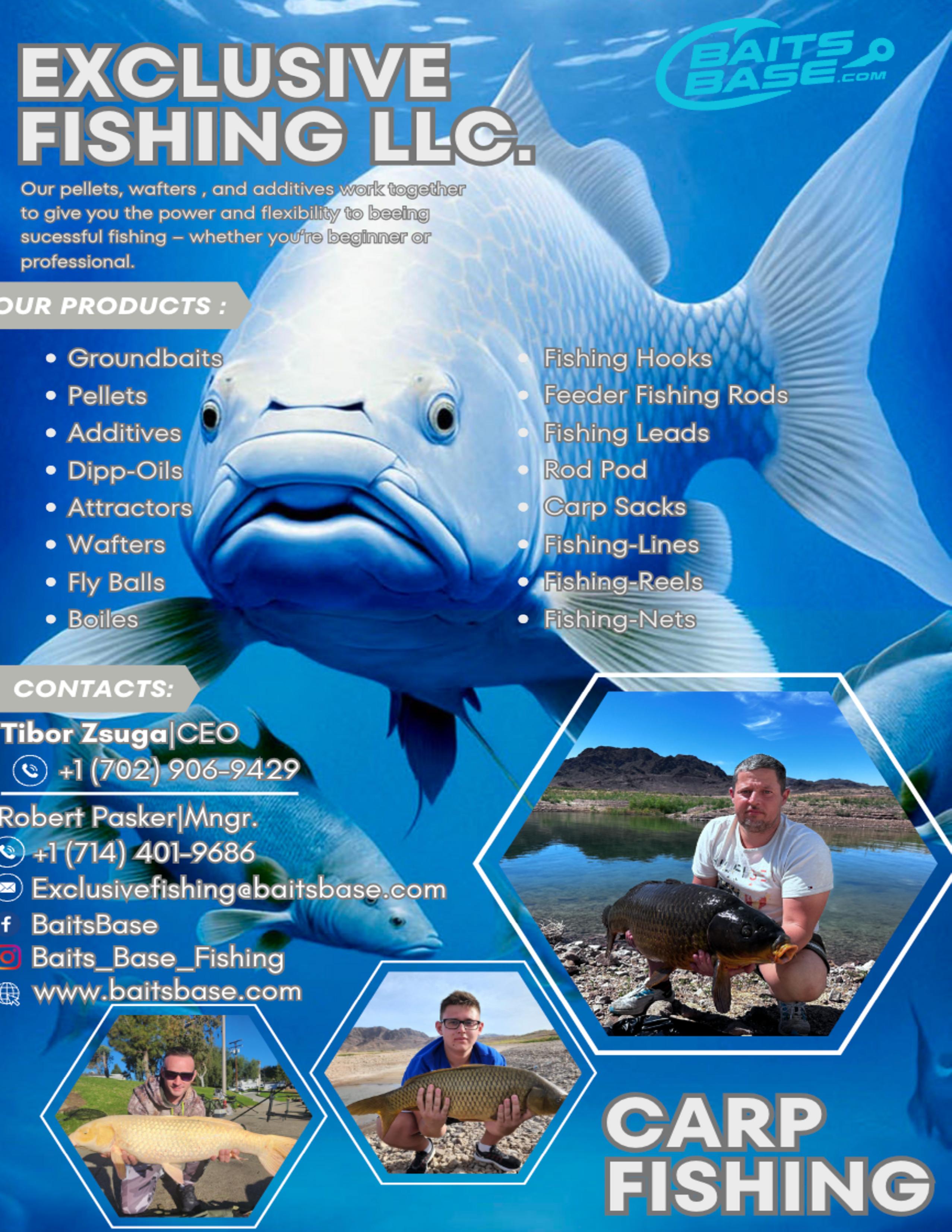

A New Connecticut Carp Record!
It seemed like only yesterday, well actually a bit less than a month, since the CT carp record had once again been beaten. However this time, instead of just a few ounces, it was absolutely smashed by an incredible margin of almost thirteen pounds!
Norbert Samok is well known for his success fishing carp tournaments including the Wisconsin, Connecticut River and Wild Carp Events. He’s also a member of the Team USA Carp Squad that has travelled to Europe to take part in the International Federation of Sport Freshwater Fishing (FIPSed) a three-day carp tournament against teams from as many as 30 different countries. Now, to add to his already impressive fishing resume, Norbert has his name featured in the Connecticut record books for the incredible common he caught on June 21st 2025 weighing 58lb 2oz.
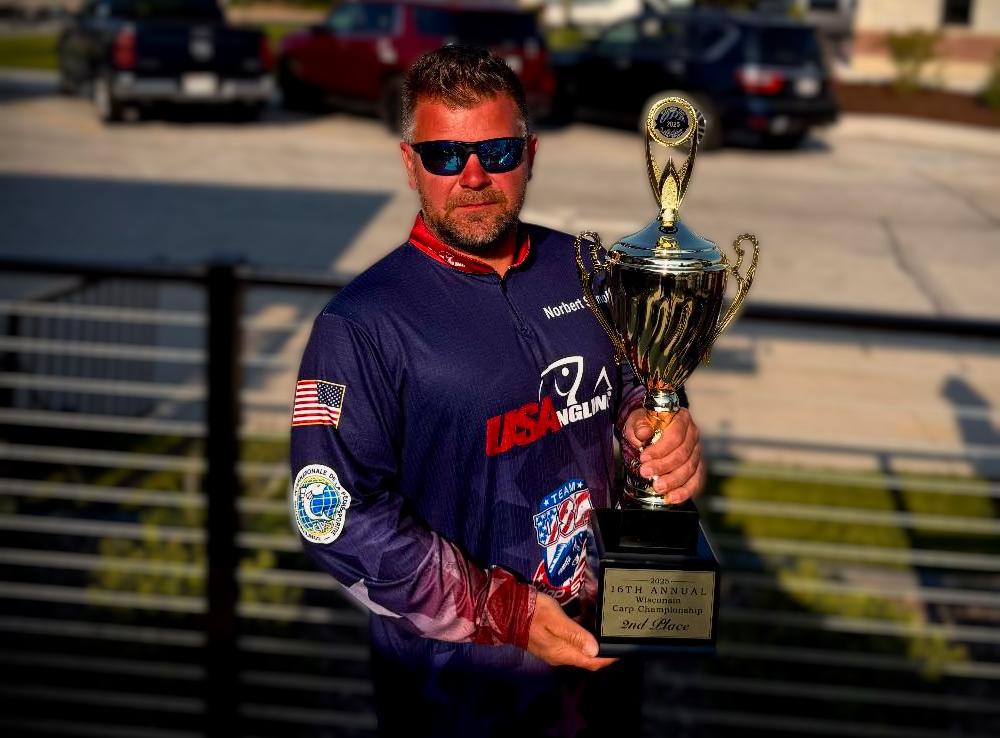
Norbert with another trophy to add to his collection!
Norbert spoke to us for the NACA magazine and told us more about his amazing capture. Amazingly he’s already had fish to just over 50lb the past couple of years which he say’s he decided not to claim a record as he preferred to stay below the radar.
On this occasion he had already made the hour and a half round trip from his home in Westchester, NY to Lake Zoar to bait up the swim on both the two previous nights. He finally got his lines out to fish around 8:30pm on the evening of June 20th.
His first run came at three am the next morning and when he lifted into the fish he described it as feeling ‘crazy heavy’. Unusually the fish came straight to the surface, in almost thirty feet of water, and in his headlight he could immediately see it was a very big fish!

Then the fish dived straight back down into some underwater snags and everything locked up.
Norbert thought that it would be a miracle if he could get it back out. He carefully slackened off the line and felt the fish move a little bit but then it seemed to get snagged again. Once more he tried giving it some slack line and this time the fish swam out of the snag and came free! Now it stayed deep and for the next 20 minutes refused to come up until eventually it was close to the bank.
Then suddenly it came up to the surface once more and went straight into the net where Norbert said ‘all hell broke loose’. Finally he laid the fish out on his mat and was overwhelmed by just how big it looked. He immediately knew this was the fish of a lifetime.

When he first weighed the fish on his own scales in the early hours of the morning it went 60lb 2oz. After reaching out to his friend Rafal Cisowski the only person with local access to certified scales was current record holder Rafal Wlazlo.
When the huge common was weighed on official certified scales several hours later at 58lb 2oz it had clearly lost some weight. The fish which measured 44.8 inches in length also makes it a potential IGFA World Record.
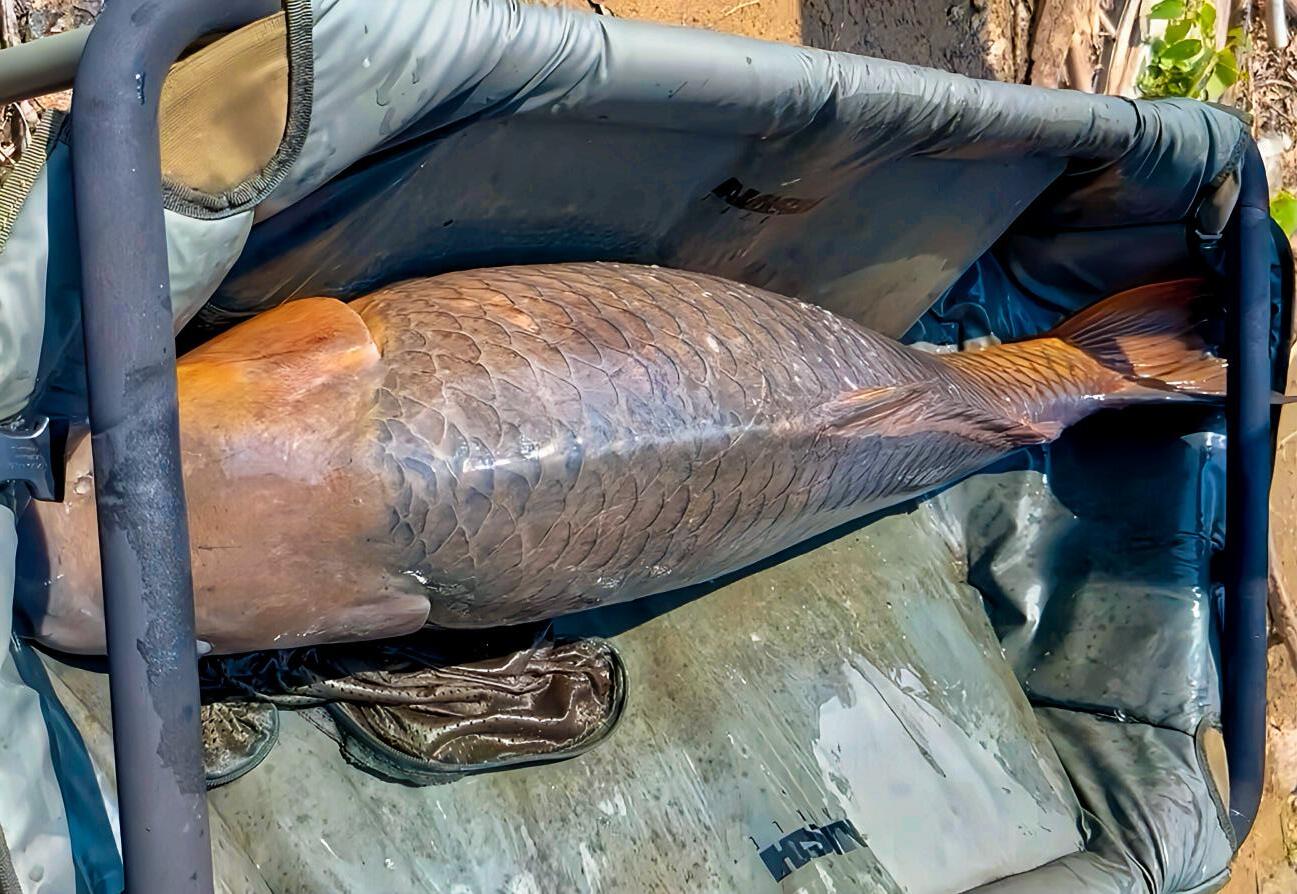
At 44.8” long the huge common more than filled the cradle!
Norbert was fishing with 13’ 3.50 Free Spirit
Hi-S 200 rods, Shimano Technium 14000 Reels loaded with 20lb Korda mainline. Norbert likes to keep things simple at the sharp end using uncoated braided hook lengths, size 2 Gamakatsu hooks and double 24mm
One On Baits boilies.
Congratulations Norbert on a truly exceptional fish and a very worthy addition to the Connecticut record books!

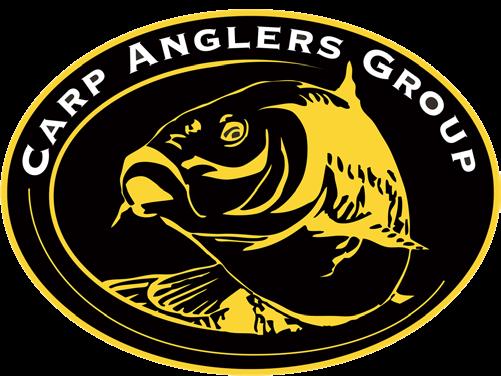
A HISTORY OF RECORD CARP IN CONNECTICUT
When I moved to Connecticut in June 1994 it soon became clear that not only was I situated in a carp fishing paradise but remarkably they were largely ignored by the majority of anglers! At that time we had very little idea which waters, other than major rivers like the Housatonic or Connecticut, held carp. The problem of how to access some waters also took a lot of effort since Google maps was still 10 years away.
In the coming years and thanks to ‘fish-ins’ organized by members of the Carp Anglers Group our knowledge and the popularity of ‘catch & release’ carp fishing grew significantly. Sadly until 2009 the existing Connecticut carp records were mostly those shot and killed by bowfishers. The requirements for claiming any state record also required the fish to be transported to a recognized weigh station (many of which had limits of just 25lb).
This clearly presented many issues not least of which was ensuring the fish could be later released unharmed. As a result several potential records went unclaimed rather than put the fish at risk. In 2008 CAG member Steve Clow approached CT DEEP to discuss ways to claim

carp records without the need to transport the fish. Thanks to Steve’s efforts it was agreed in February 2009 that a record could be claimed provided a ‘State Certified’ set of scales was used to weigh the fish and the record was documented with photographs and independent witness statements.
The first fish to actually be ‘certified’ was Nigel Griffins 41lb 8oz common from the Connecticut River. At this point the new regulations were still being finalized for inclusion in the Angler’s Guide but CT DEEP allowed Nigel to take his scales to Weights & Measures in Hartford to be checked & verified allowing the record to formally recognized. Once the new regulations were in place Steve and myself promptly had three sets of Reuben Heaton Dial Scales certified with Weights and Measures ready to assist anyone with a potential record fish. We also hoped one of us might also be lucky enough to use them on one of our own captures.
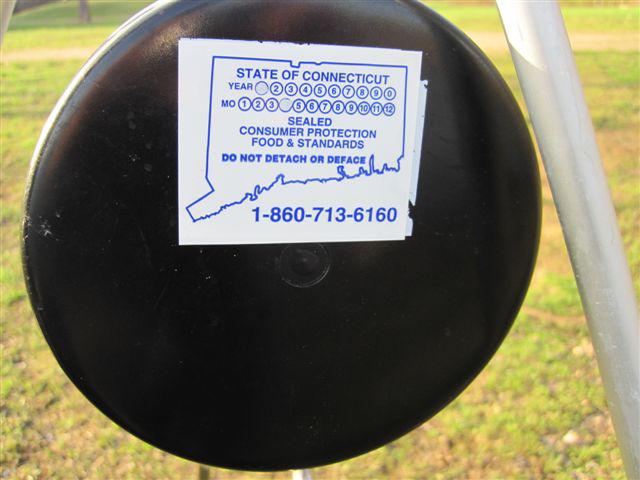
Wind the clock forward a couple of years and my wife and I were sat having dinner at a restaurant in West Hartford. Suddenly my phone went into a meltdown vibrating incessantly in my pocket. Thinking it might be a family emergency I took a quick look at the caller list to see missed calls and voice message from several carp fishing friends. Clearly something was happening! I rang Ethan back and his excitement was evident “Hey, Iain we need your scales Mike’s caught a potential record!”. Fortunately my wife was very understanding so we skipped dessert, paid the bill and ran home to get my certified scales and camera. 45 minutes later I made it to the river to find Mike, Ethan and several friends anxiously awaiting my arrival. The fish was resting quietly in a retainer so

I promptly set up a tripod with the scales and set about taring a weigh sling. When Mike lifted it from the water it was abundantly clear that this was a truly exceptional fish! We transferred it to the weigh sling and carefully allowed the scales to take the weight. After checking the scales a couple of times we settled on a final weight at 43 lb 12oz.
It clearly beat Nigel Griffins 2011 41lb 8oz and now all we needed to do was submit the details for verification. Once Mike had submitted photographs, signed witness statements and the verified weight it didn’t take long for the record to be recognized. Since Nigel and Mike’s record fish six more common carp records have now been recognized without the need for unnecessary transportation.
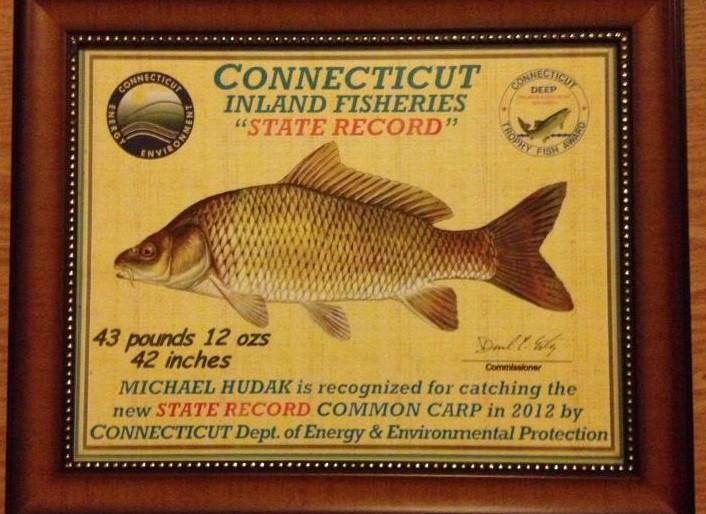
THE HISTORY OF CT ‘CATCH & RELEASE’ CARP RECORDS

May 29th 2009
Steve Wasilewski 40lb 8oz
– Connecticut River

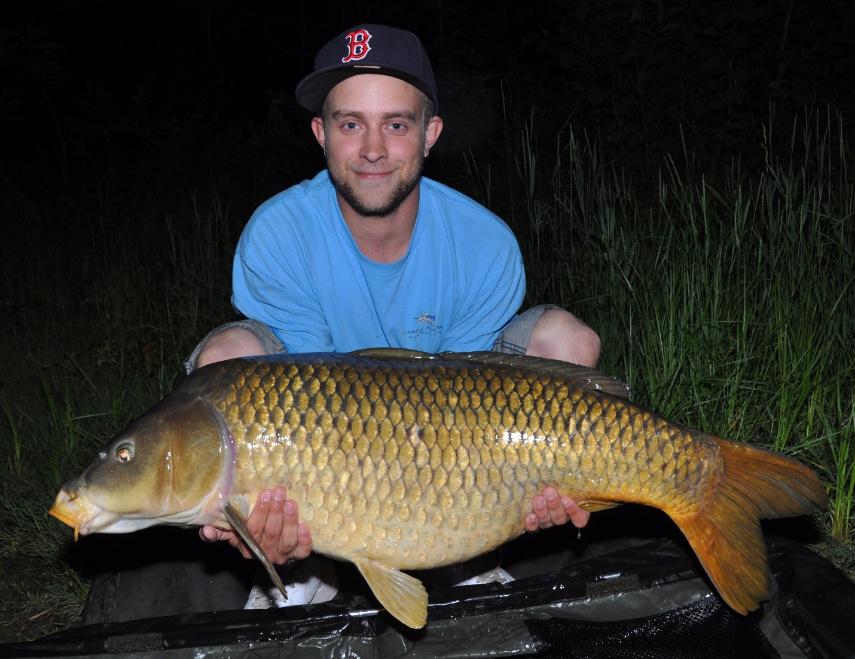
May 12th 2012
tMike Hudak 43lb 12oz
– Connecticut River
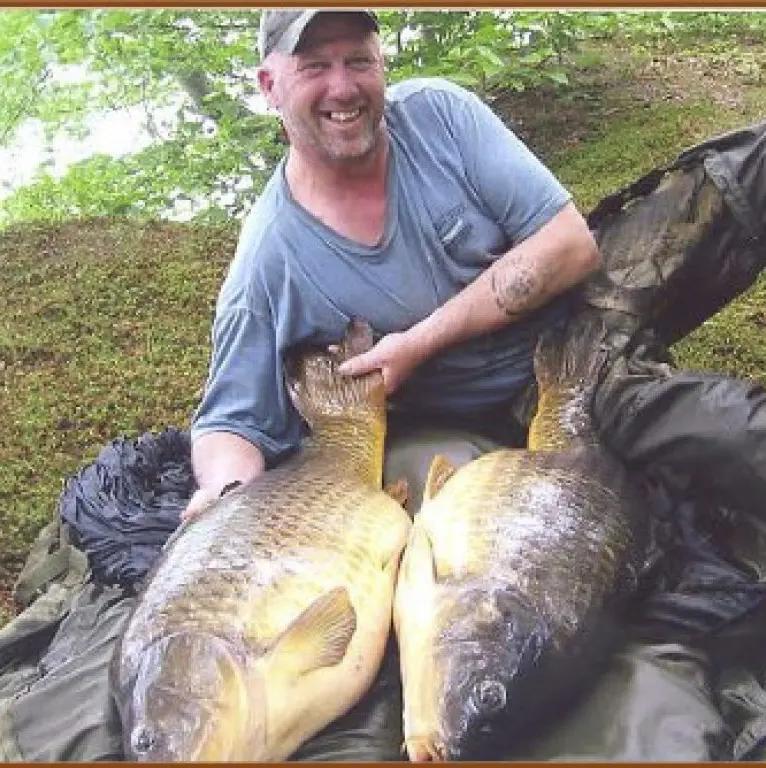
May 29th 2011
Nigel Griffin 41lb 8oz
– Connecticut River

May 27th 2023
Robert Jagiello 45lb 1oz
– Lake Lillinonah

June 14th 2024
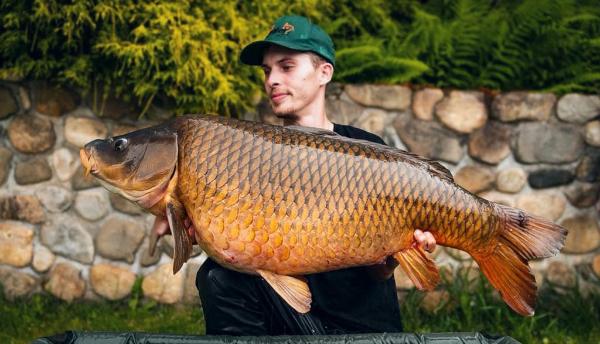
May 25th 2025

Brian Santos 45lb 5oz
– Lake Lillinonah
Rafal Wlazlo 45lb 8oz
– Lake Lillinonah

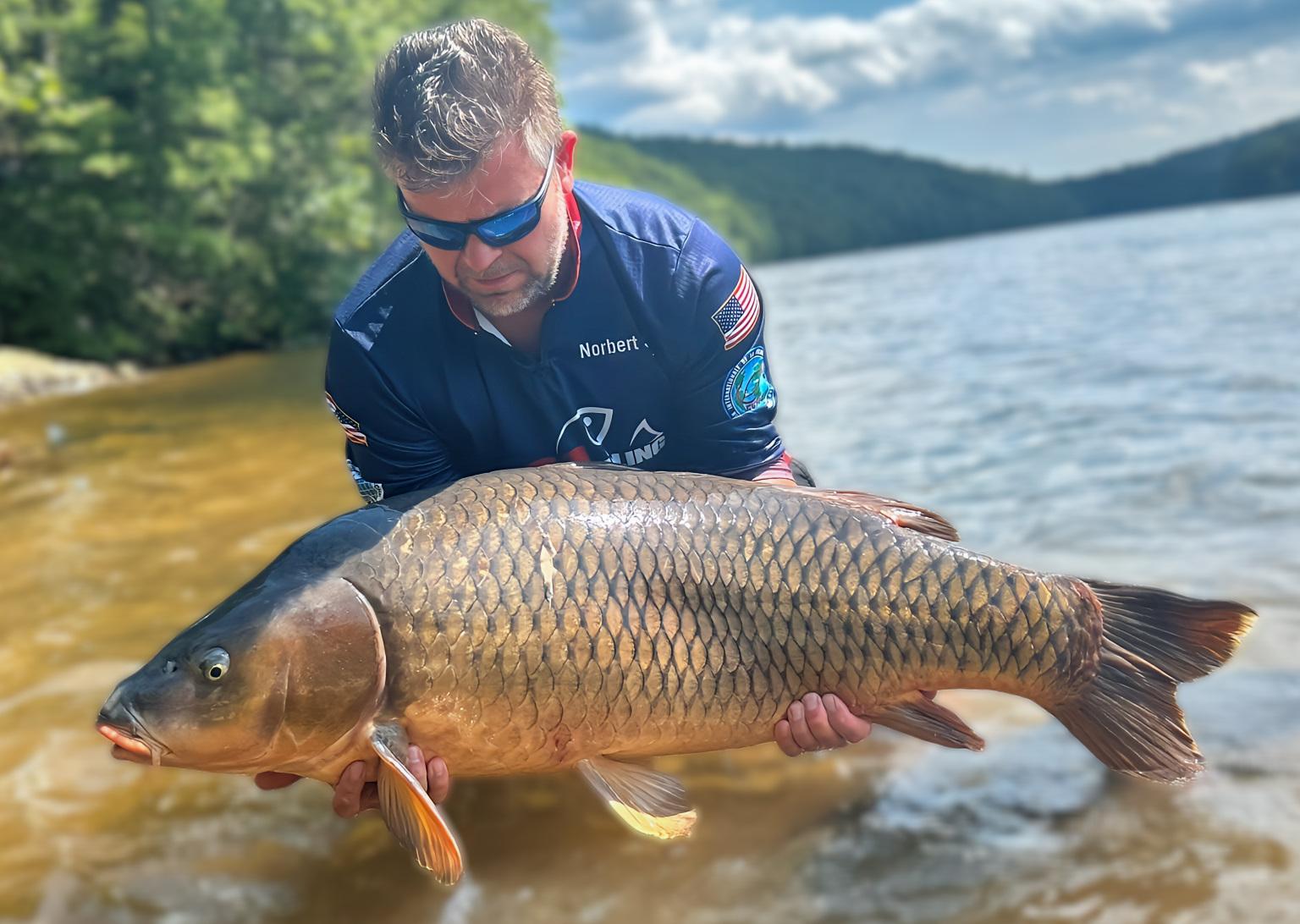
The following records for common carp were not categorized and methods could include rod & line, bowfishing, spearing etc.
- June 10, 2001 - Bill Terry Sr. 39lb 8 oz Naugatuck River, Derby – Bow Fishing
- May 4, 1995 - Stephen J. Woronecki 38lb 8 oz Connecticut River, Hartford
- May 8, 1991 - Paul J. Sirko 34lb 12 oz Connecticut River, Power Plant Haddam Neck
- January 5, 1991 - Roddy Bologh 28lb 4oz Connecticut River, Haddam Neck
- May 2, 1989 - Chad McKernan 27lb 14oz Connecticut River, Haddam
- February 12, 1989 - Ronald Jastrzemski 27lb 0oz Connecticut River, Haddam
- January 25, 1989 - Michael S. Reale 25lb 0oz Connecticut River, East Haddam
- January 18, 1989 - John A. Wynn 24lb 2oz Shepaug River, Roxbury
- May 15, 1988 - Steven McGahan 21lb 0oz Connecticut River Hartford
June 21 2025 Norbert Samok 58lb 2oz – Lake Zoar
CONNECTICUT CARP MANAGEMENT
The popularity of carp fishing in Connecticut increased dramatically along with the visibility created by CAG ‘Fish-In’s’, local tackle store presentations, the Connecticut River Tournament started by David Moore, and the New England Carp Conference hosted by the Carp Anglers Group.
Bill Gerish (Fisheries Scientist) and Peter Aarestad (Director Fisheries Division) of CT DEEP both recognized the potential for catch and release carp angling.
In consultation with Iain Sorrell and the Carp Anglers Group, Bill and Peter helped craft regulations to ensure the better protection of trophy sized carp.
At the last minute bowfishers tried to derail the proposed regulations with an ‘exception for bowfishing’ clause supported by Senator Craig Miner and strategically hidden in an Environmental Bill. This exception would have allowed the continued unrestricted killing of carp in all state waters.
After some intense lobbying at the State Capitol we managed to agree terms that maintained the introduction of statewide creel limits but allowed some exceptions for bow and arrow fishing in limited areas and with modified creel limits. As a result Creel Limits were implemented in 2018 together with key designations for Trophy Carp Waters.
CONNECTICUT’S CURRENT CARP REGULATIONS ARE:
- Statewide Regulations: daily limit of 5 fish per person, only one of which could exceed 30 inches. Bow and Arrow anglers have a greater daily limit for some areas (see the Bowfishing section below).
CARP CREEL LIMITS

- Trophy Carp Waters: daily limit of 1 fish per day with a maximum size of 26 inches in the entire CT River and its coves, Batterson Park Pond (New Britain), and Squantz Pond (New Fairfield).

If you would like to help protect trophy carp in your state please consider joining the Carp Anglers Group.
As a non-profit organization we can work with local anglers to help work with state fishery bodies to consider the opportunities for Creel Limits and Trophy Waters for common carp. Find out more: www.carpanglersgroup.com
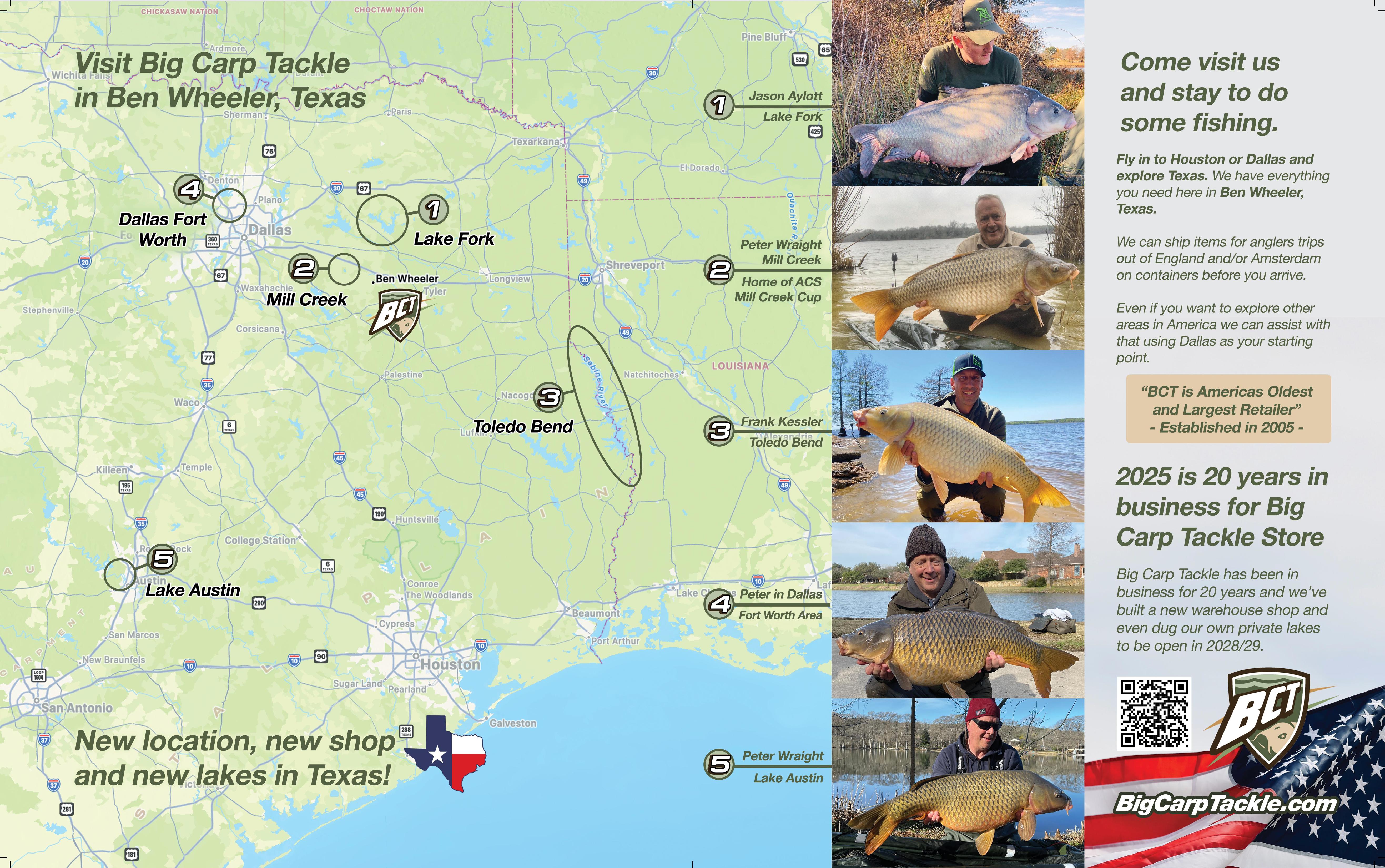

A CHANGE OF PACE: Summer Feeder and Float Fishing
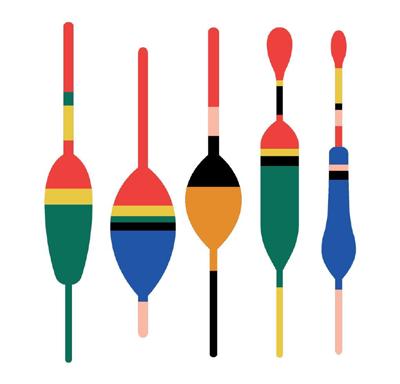

Author’s Note:
I had intended to make a session article, one that follows me on a session where I use both float and feeder for some carp on a nice warm summer day. However, this seemed to be an impossible task; the warm summer days were there, doubtless so were the carp, but I was not. The time I had available was not enough to allow for any sort of a story worth reading and would have run along the lines of “went fishing for 15mins, didn’t catch much except a snapping turtle”. Instead of a “real” story therefore I’ll give you a general session and how I go about it and my thoughts on feeder and float fishing and why I think these styles of fishing are worth a try if you haven’t tried them before.
After the spring’s effort to catch an ever larger carp while they are at their top weights, it is (to me) somewhat of a relief to know that now they have spawned and it’ll be a few months before their weights are back up and the effort to get the PB up a few ounces can resume once more.
At this time the weather is also nice more often, here in New England anyway, and it is a good time to enjoy some other methods and tactics. Feeder fishing is one such method that–while effective most of the year–is not one that seems to lend itself to catching the biggest fish. It makes up for that with numbers! This sort of fishing is all about fast action and the thrill of watching the tip bump then swing round with another fish on the hook. It is also a great way to practice your bait application and refine your presentation.
Float fishing is another and is perhaps one of the most engaging types of fishing as it is highly visible and relatively (in carp fishing terms) active.
I can’t say I’ve caught very many large fish with either tactic, my PBs for both aren’t much over twenty pounds, but both are nevertheless great ways to become a better angler and a great pastime at times when the size of fish is not paramount.
It seems to me that while larger carp are impressive, the smaller ones are often the better looking fish and the fight on lighter tackle is every bit (if not better) than that of a fish much larger caught on specimen carp tackle with 30lb braid main line.
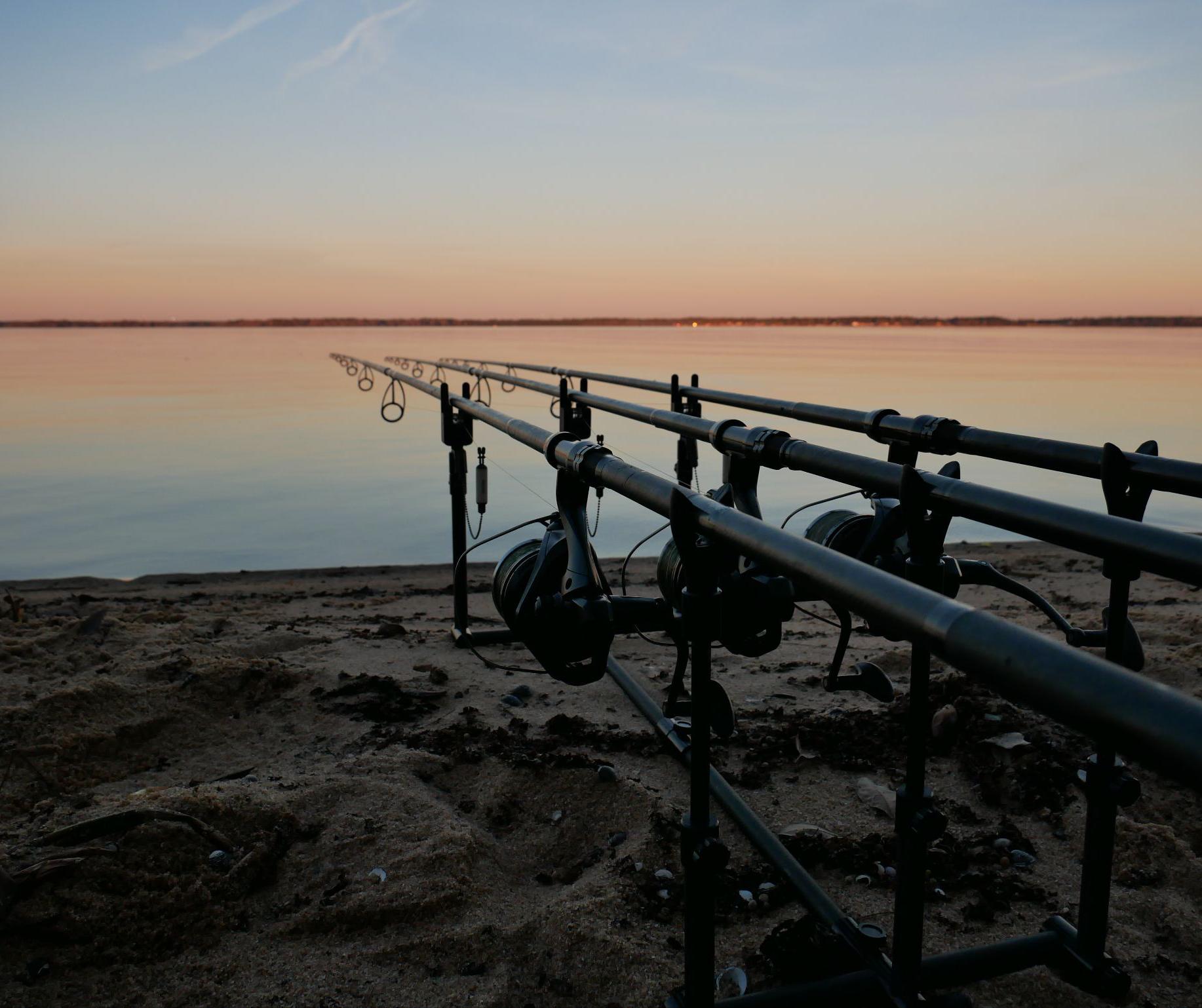
I love specimen carp fishing, but it’s hard work at times and requires a lot of time to catch the fish you are looking for.
Simplicity is also a selling point of both styles for me. Specimen carp fishing can be complex with a large number of items needed to get fishing and lots of stuff to load/carry/haul to the bank. This is often for many anglers a good reason to fish only where the car can be parked close by with the result that venues are limited. Switching to float or feeder fishing is often a way to lighten the load and get out to venues or swims that are otherwise simply too much work to fish and have a good time doing it.

There are many biking/walking trails that follow rivers or canals that offer excellent fishing but require a bit of walking (or biking) to reach. In my part of the country the Black Stone River canal (MA-RI) is one such place that offers a lot of water to explore and has an improved type bike trail along much (perhaps all?) of it.
The San Antonio River Walk in, as the name implies, San Antonio, Texas, is another place that is good fun to explore. There are also others in many states that are similar.
Gear for dedicated float and feeder fishing used to be rather hard to get and that was one reason that I, for one, did not fish a feeder (not counting full size method feeders) until somewhat recently. There are now a number of options here in the USA that have the gear and the price to get started is a good deal less than with specimen carp fishing.

That is not to say you can’t spend a great deal of money on these methods, just look at professional match anglers, but for an enjoyable and productive session it’s not needed. As of writing, Big Carp Tackle has both float and feeder rods for under $40.
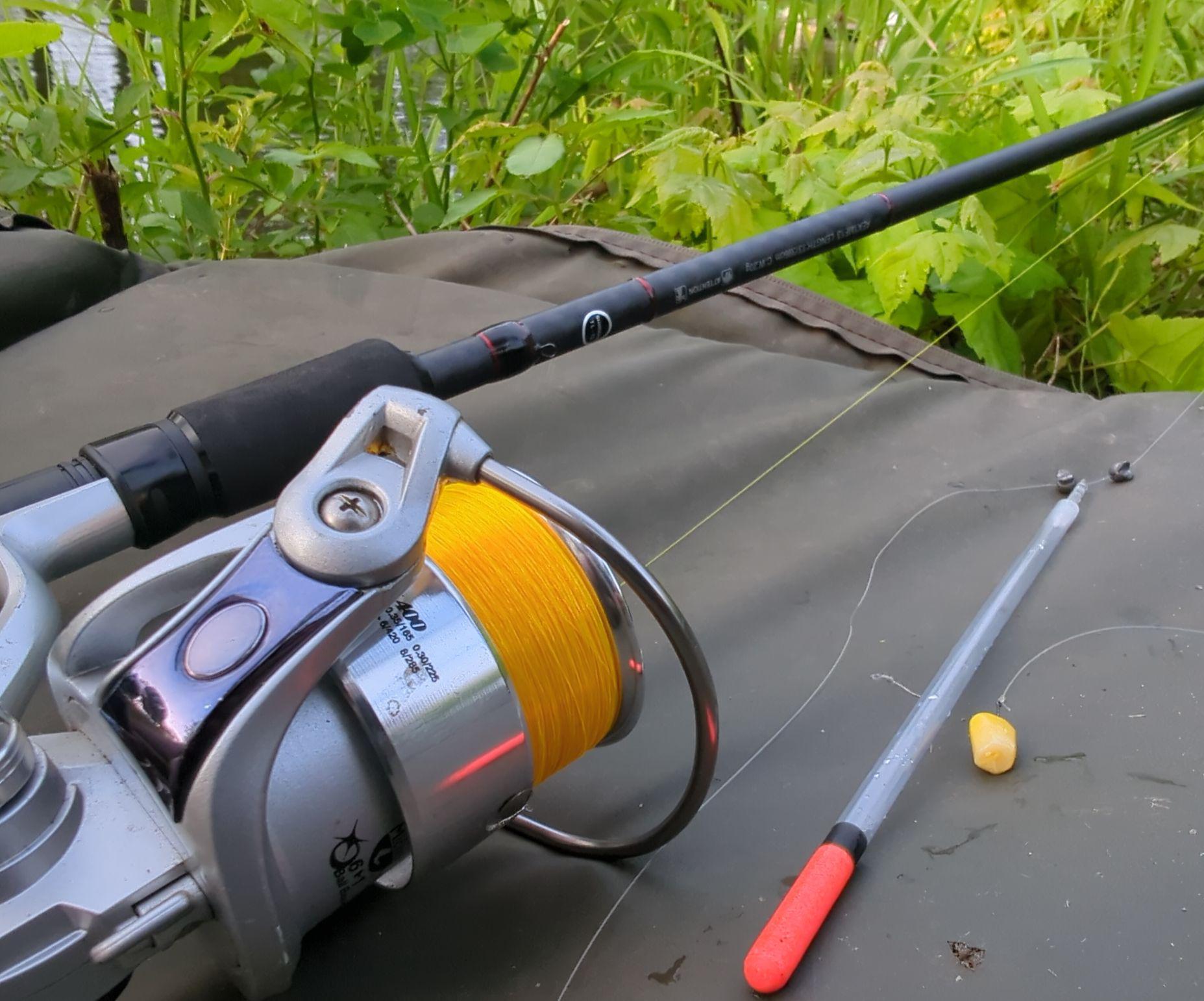
Float fishing gear is relatively simple and (comparatively) cheap.
Bait for float and feeder fishing is also fairly simple if you so choose and a decent ground bait can be made with a trip to the feed store and a can of corn. I do like wafter hook baits for feeder fishing but they aren’t 100% needed and have the danger of becoming addictive much like collecting different flavors/colors/etc. of popups. Sweetcorn is of course a very good choice for both methods, both used as feed or on the hook.


Softened cattle cubes or chicken feed makes a good cheap groundbait that requires some prep.
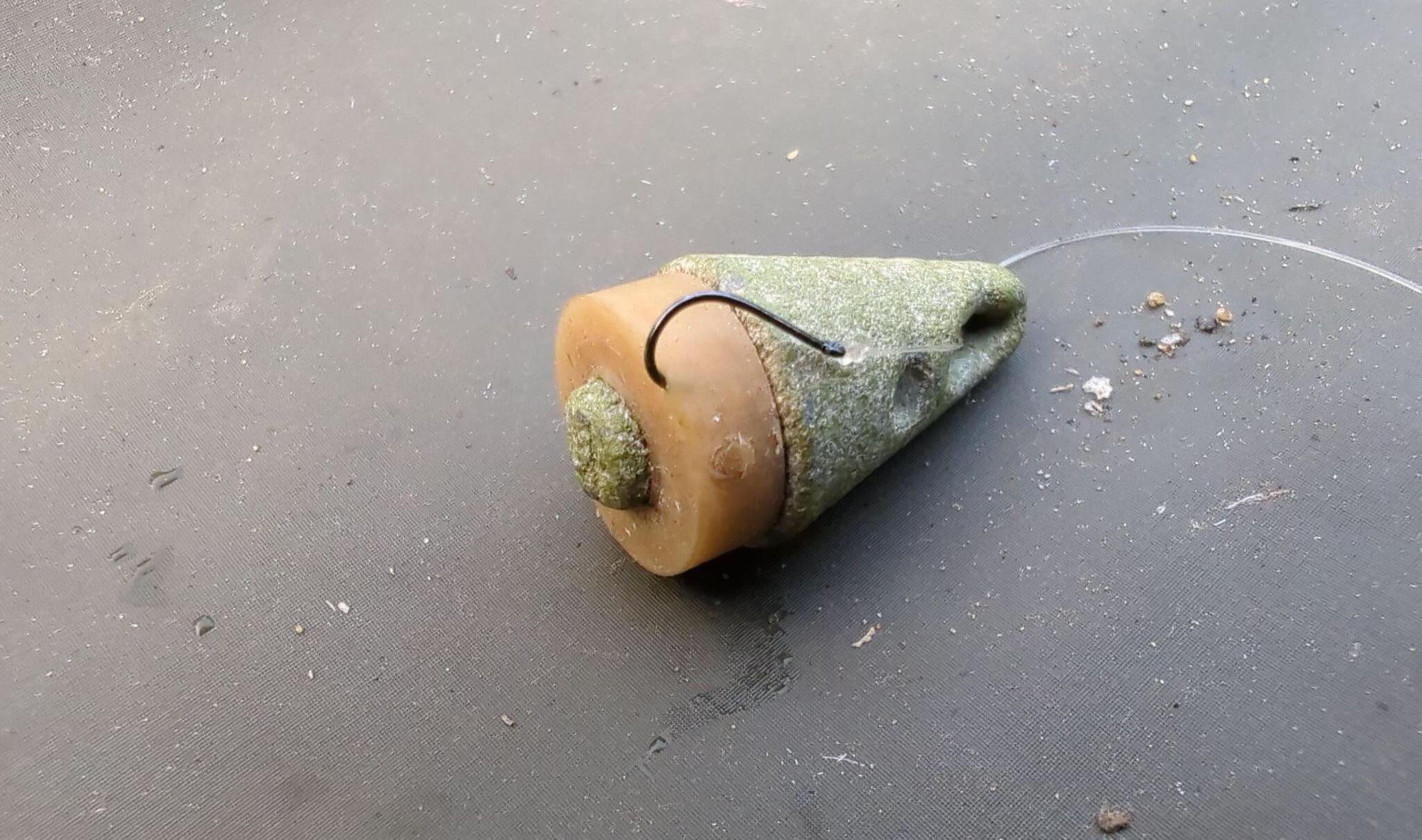
A plummet is essential for float fishing. A dedicated one such as this works well, or you can use a heavy split shot or something similar.

Cage feeders are very effective in some situations, particularly rivers, and allow you to feed many different baits such as the sweet corn seen here.

I also find that these two methods are good for family outings for the reasons outlined above. The time to get set up and actually fishing is much shorter than with “normal” carp fishing and it’s more visual.
Both float and feeder have something you watch and you are much more likely to get indications that there is a fish (or something else) feeding on the spot which can make it a more exciting activity for children and other family members who for some reason which I don’t understand don’t find sitting behind silent alarms all day to be much fun.
The tackle is often lighter and a 8’ feeder rod is good for even smaller anglers and the soft action makes fighting fish very forgiving.

Feeder and float fishing I have found to be good for short family sessions.
HERE IS HOW A SESSION WENT EARLIER THIS WEEK:
Given the never ending onslaught of work I seemed to be faced with, time is always short and I need to select a venue that is close to home and has a good number of fish in it.

The pond I selected in this example was one about 27 mins from my house and has a lot of small carp in it. My brother-in-law happened to be visiting and was kind enough to come along as a photographer despite the fact that the day was very warm.
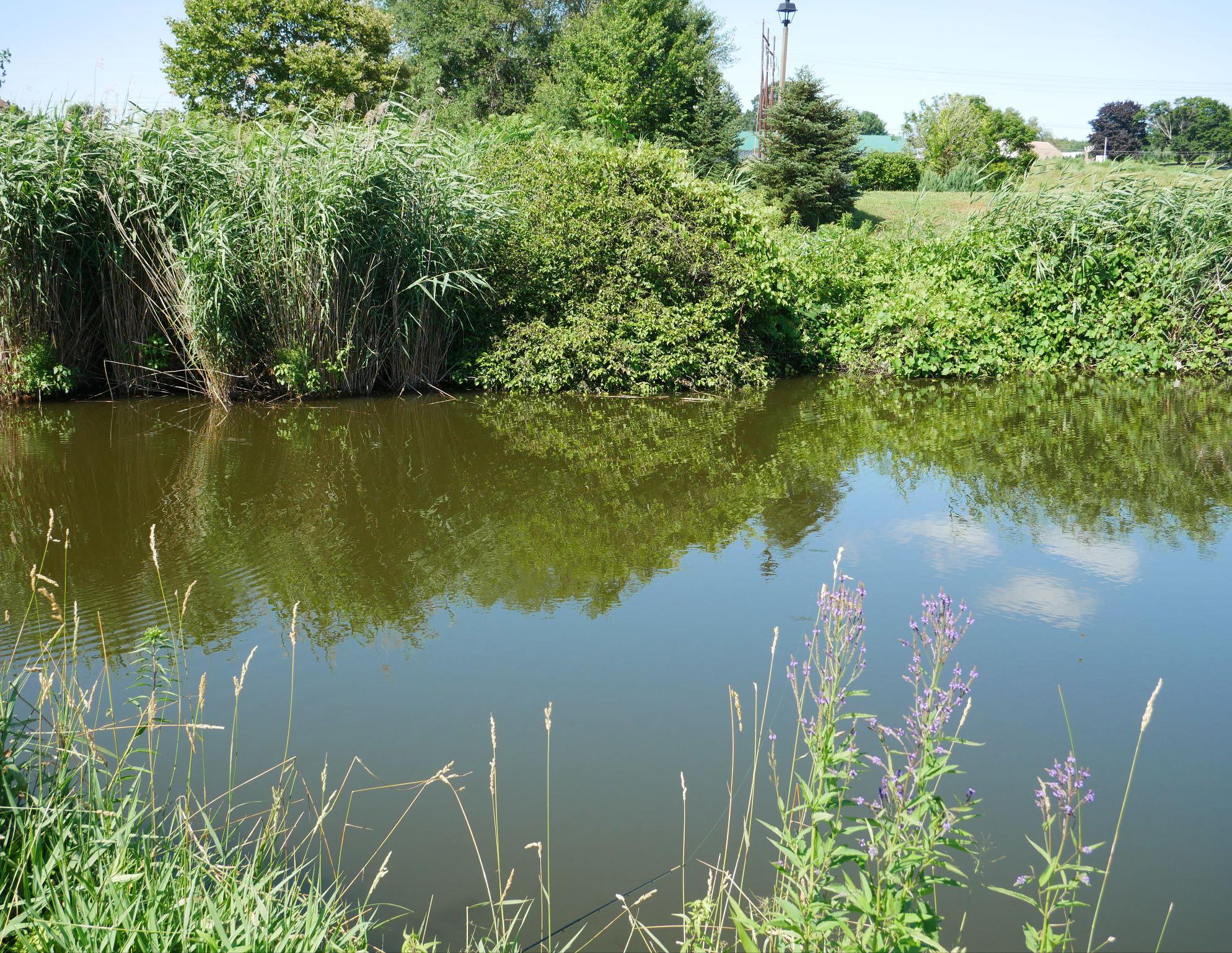
The venue of choice. This is a small L shaped pond with lots of small carp.
Given the sun and warm temp I decided to be considerate of my guest and select a swim with some shade. This was at one end of the pond up against some reeds and overhanging bushes. It looks like a nice swim, and it produces fish at times, but is fairly shallow. It’s always nice to not be roasting in the sun if you can help it.
First order of business on short sessions is to get bait in the water as quickly as possible and keep your fingers crossed it’s the right spot. I opted to fish the feeder straight across tight to the overhanging bushes and then the float down the close margin to the right just far enough out to be close to a drop-off.

The plummet is key for this as the pond is man made and has rather defined features that can’t be guessed by looking at the shore line.
On the float I fished a scattering of sweet corn and the same on the hook. I try to keep a few kernels going in every few mins to draw in as many fish as I can. Match fishing-like tactics are what I’m aiming for, although maybe not as rigorous.
I used a small banjo feeder loaded with oats-soy groundbait with sweetcorn on the hair. I generally cast this every few mins as well to build up some bait. I also used the catapult to put out a few kernels of sweet corn.
Fairly quickly I started to see some bubbles coming up around the float and the occasional liner of something bumping up against the line. It also seemed like the sunfish were enjoying trying to eat the split shot on the line. Why they do this is a mystery but I have seen them do it before as well. Just getting to this point has used up much of the time I had available and I discovered much to my dismay that I actually had to be home a good deal sooner than I had thought.
At times like this it’s always hard to decide: stick with the plan or try something different. In this case I stuck with the plan as there seemed to be very little point in trying something different with so short a time to go. With a few minutes left there was finally more action on the float and it started to slowly move off into the left against the wind. Then it very slowly went under.
This was not ideal and I picked it up and felt the solid weight, not of any fish, but of a giant turtle. Luck was with me however and the hook pulled after 30 seconds or so!
While this time I didn’t catch the desired carp, this same approach has often put fish on the bank for me and will be the same approach I try next time, with a change of swims perhaps.
While, as noted above, I was unable to get a good usable session and catch fish in time for publication, let’s pretend I did and what would be next. After catching the first fish I would get the rig back in position as quickly as possible and with a bit of luck
I would get another fairly quickly. On this pond the fish form small shoals of half a dozen fish or so and oftentimes getting the hook right back in the same spot results in a few more takes, basically back to back. If I had had more time and had not had any action I would have moved to a more central swim where I could have fished near some downed trees that almost always hold fish.
And that’s basically it. These for me are fun simple tactics that require less effort and planning than other methods and can fill in the gaps between the more “serious” sessions and also when other considerations (such as family) make more involved and potentially “boring” specimen fishing impractical.

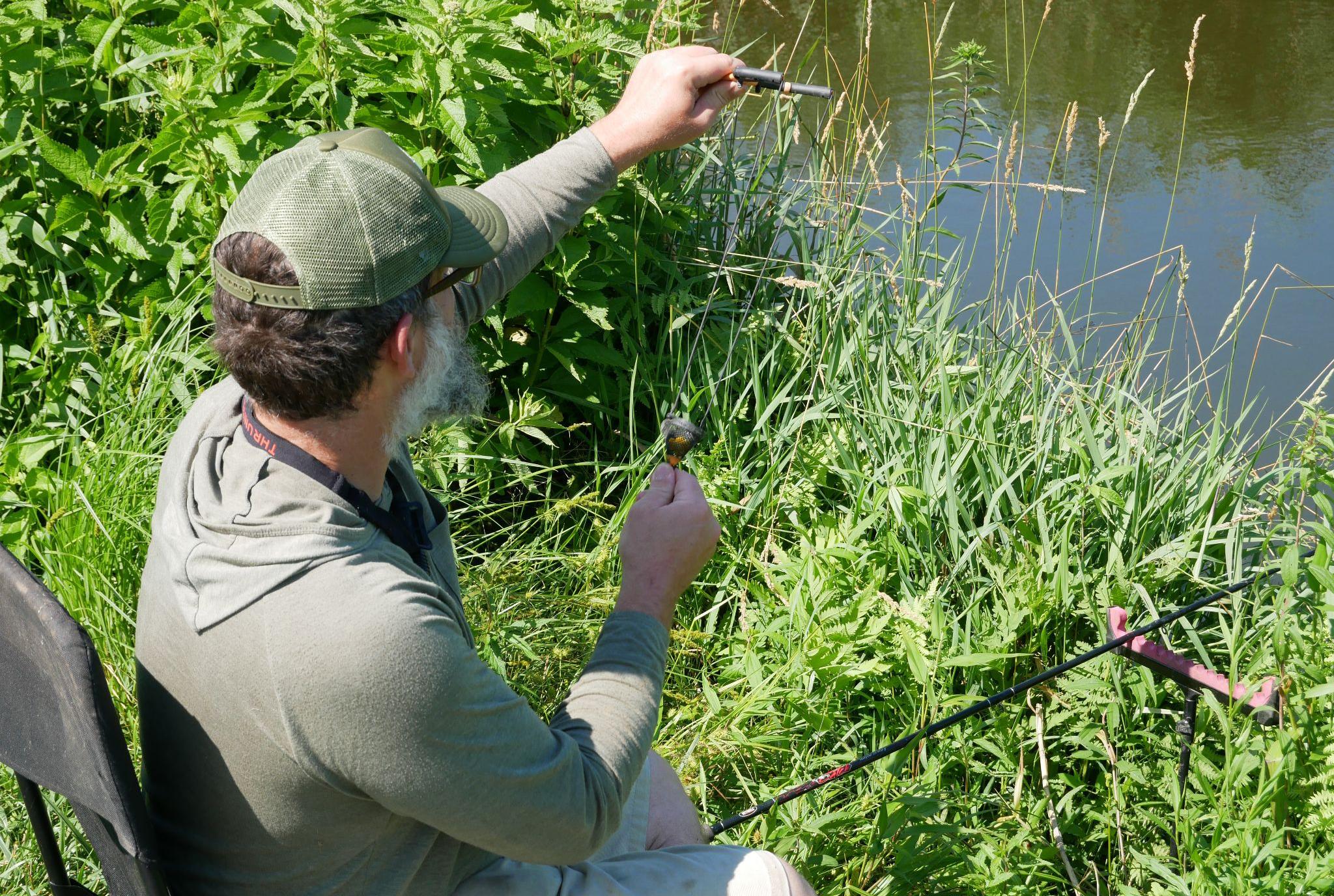
First order was to get a small amount of bait in the spots I had selected. I used a small catapult to do this.
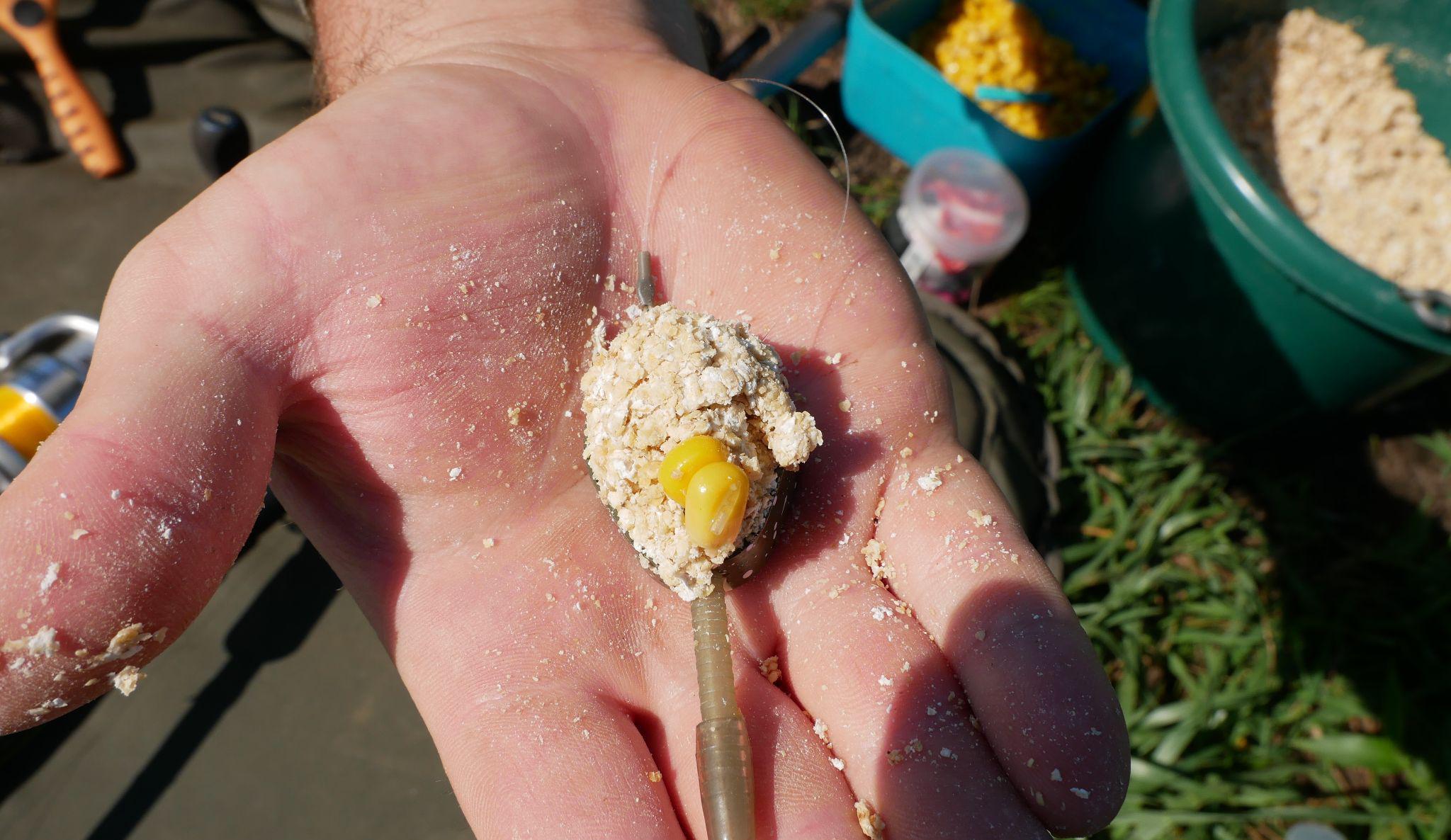
A small banjo style feeder often works well.


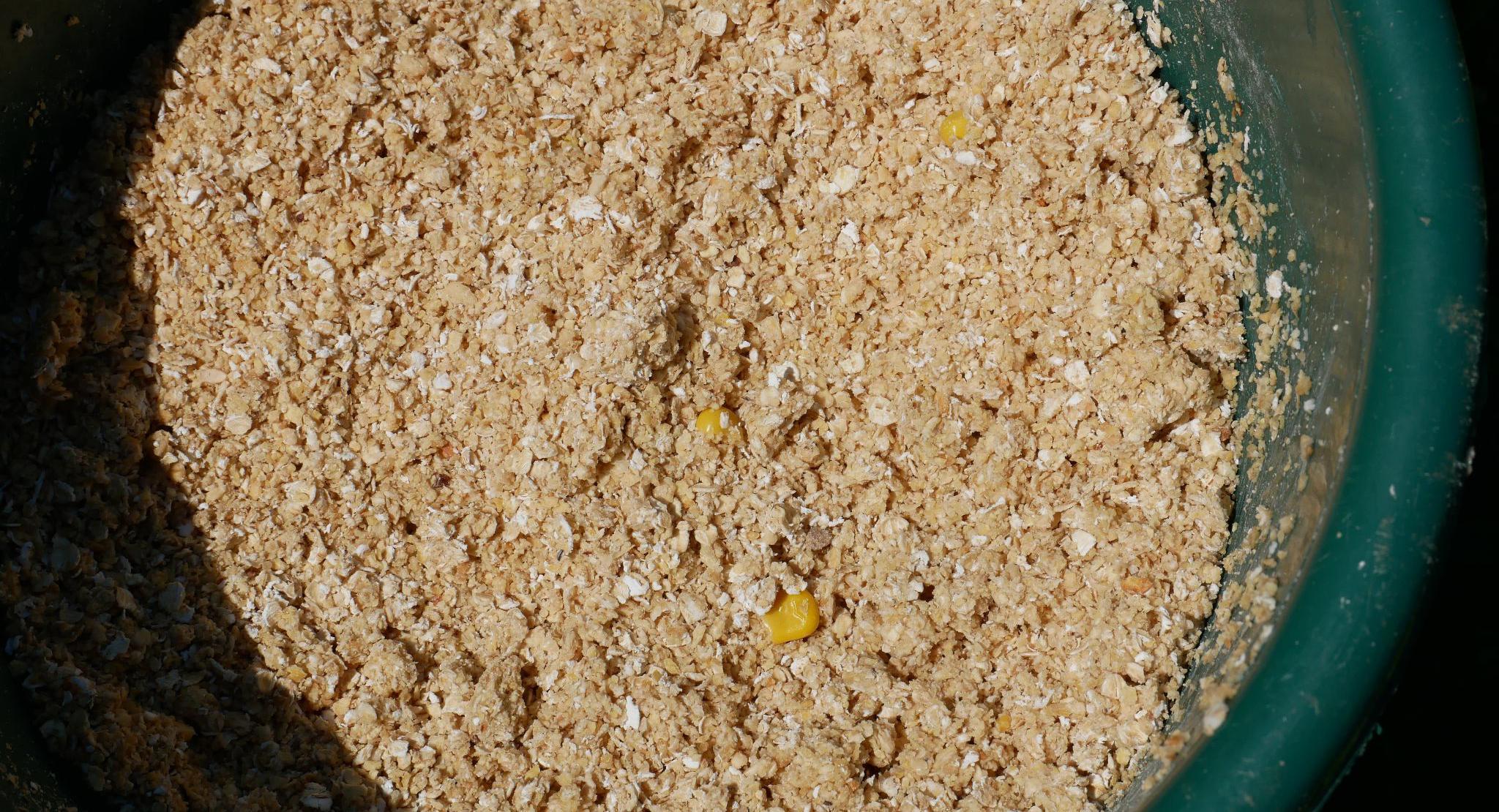
The float I fished just far enough out to be on a drop off to slightly deeper water.
Oats-soy pineapple flavored ground bait certainly smells nice.
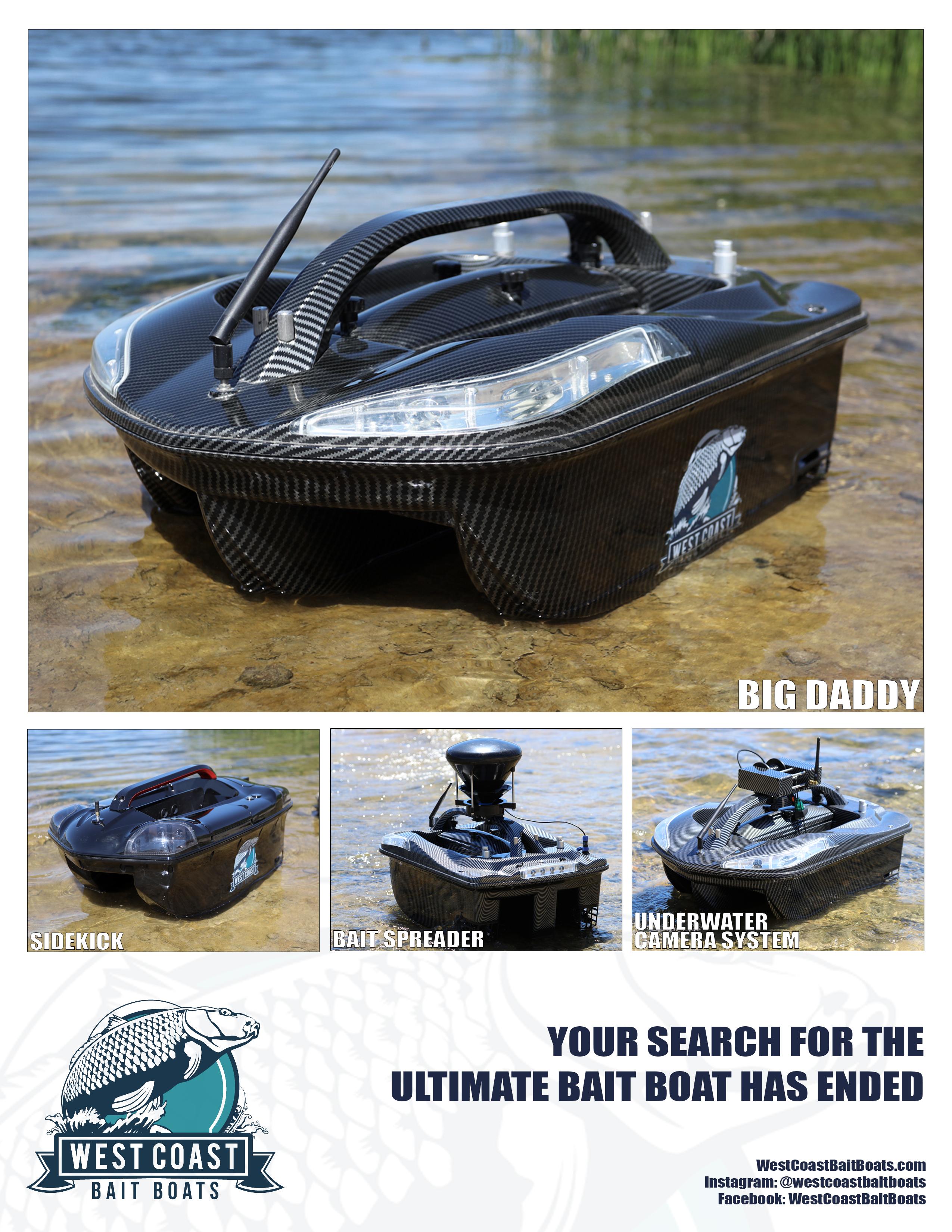

“The Tournament We Dreamed Into Being”
By Steve Pflugradt

Already half awake, my alarm begins to drag me out of slumber. Through foggy eyes, I glance at my phone. It’s 4:30 in the morning. Time to get this thing started.
Sitting up, accompanied by all the necessary creaks and groans, I wipe the sleep from my eyes, shut off the alarm, and head in for what may be my last shower for the next three and a half days. As I enjoy the warm water, I wonder how many of our anglers, and how many of my friends, are doing the exact same thing right now, preparing for the Harvest Moon Classic 2024.
Showered, dressed, and potentially ready to take on the world, I notice it’s nearly 5:00 a.m. I make sure the rest of the house, my immediate support group (my wife and our two sons), haven’t given in to the strong temptation to crawl back into bed. Mentally, I go over a list of things I probably forgot, but actually didn’t. Still, just to be sure, I step outside to check the car. The air is crisp, and I’m greeted by a beautiful early October morning. Having confirmed I didn’t forget the first list of things I was worried about, I now remember another list.
I now need to go back inside to check with my wife.
As Megan confirms that we did, in fact, pack those other things and haven’t forgotten anything, I hear Kenny and Eris making their way down the stairs towards the kitchen.
As they round the corner, I greet them with a “Good morning” and a “How’s things?” as per my usual. At this hour, I can tell they’re not exactly thrilled, but hey… where would a tournament director be without his assistant director (Megan), and his rightand left-hand men (my two boys)?
Everyone grumbles their good mornings and howare-yous as we talk through the exit strategy and go over the things I may or may not have forgotten.
I’m reassured by my entourage, and with a series of nods, we head for the door.
In our respective vehicles, I queue up the playlist and begin the short 35-minute drive to the lake. A couple of minutes later, I round the corner and power up the on-ramp to the highway. Briefly, I wonder if I remembered to pack the first aid kit. We’ve all experienced firsthand how important that little box can be.
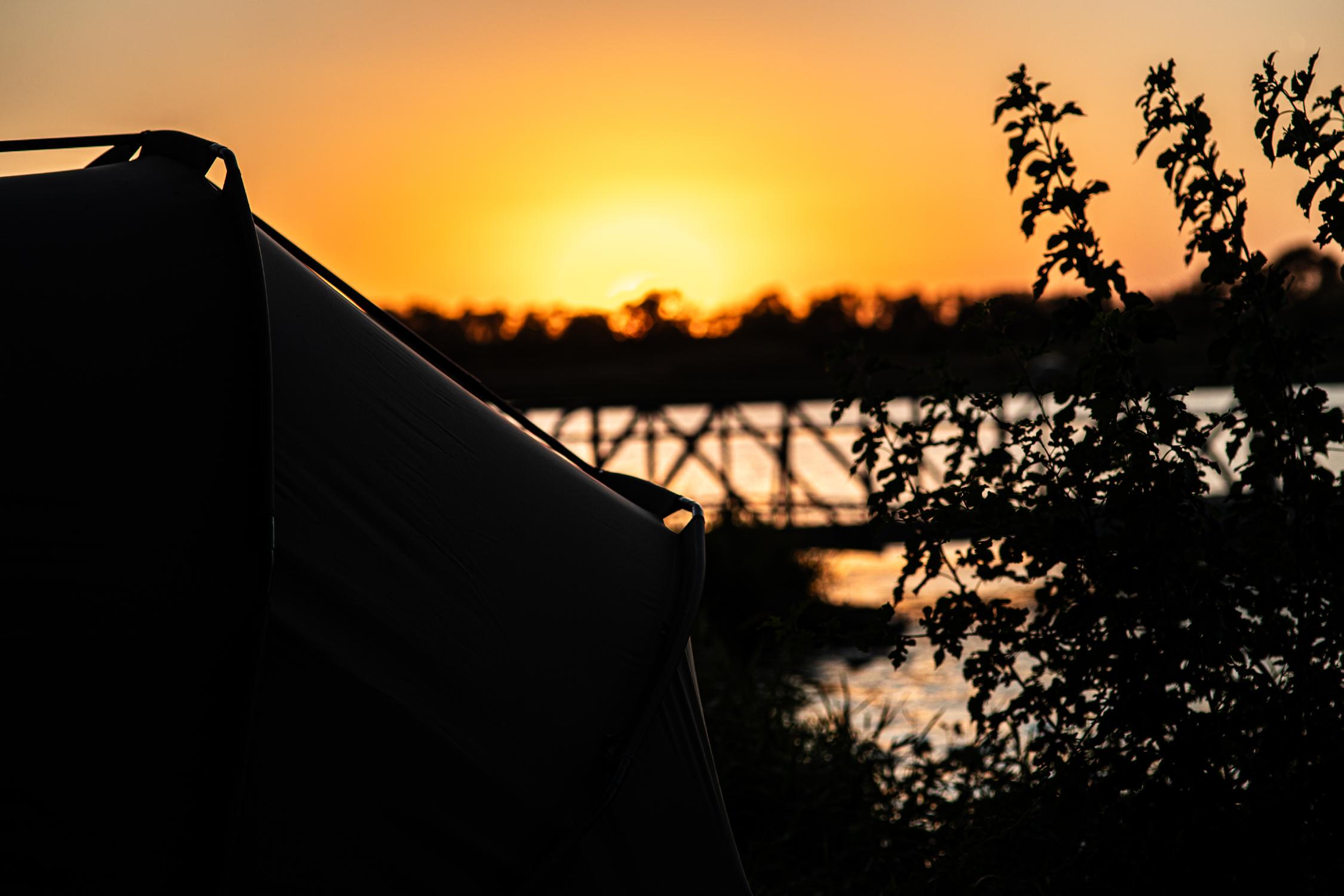
Like at the very first Harvest Moon Classic, just a couple of years ago, when Paul buried a hook deep into his finger while landing the first big fish of the tournament—what turned out to be the biggest fish of the whole event. Mike had to dig through the first aid kit and, like some backwoods medic, found a stash of lidocaine wipes. He squeezed a couple into the open wound, numbed it up, and, with all the calm in the world, backed the hook out like it was no big deal.
Man, thinking back to that first year… we were just trying to get a feel for it, wondering if we’d even have enough anglers to fill ten pegs. We had no idea what we were doing, or if this tournament would even make it past year one.
I check my mirrors to merge and pass a slow-moving semi. As I do, I notice our chairs slightly blocking the rear window of my old Flex, the same old

Flex I was driving out to fish with Kevin the day he and I first even talked about having a KCCA backed tournament. That was the day we started hashing out a few logistics: Where would we come up with rules? How would we advertise? Did we really think people would drive across the country to fish a three-day carp tournament at some random public lake near Kansas City?
Spoiler alert, the answer is yes, yes they will.
A quick yawn escapes as I roll down Highway 36 into Kansas. Did I remember the rule book and waivers?
Those same rule books that so many amazing members of the KCCA spent countless late night Facebook chat sessions working on, developing, deleting, adding back, rewording, and refining until it felt just right.
Those were some fun times back in the COVID days with Loren, Kevin, Jason, Collin, AJ, Jeff, Riley, Papa Patrick, and many others. Each of us hovering around the hope that we’d somehow get it right.
Oh, that’s right. They’re in the car with Megan. As I pass through the last little town on Highway 36, I spot one of the only other people awake. The local speed trap patrol. I instinctively check my speed and glance in the rearview mirror. All clear. Not like last year in 2023, when Brandon Kim called me on the radio to say a local officer was telling him it was illegal to camp at the lake… the same lake we had specifically paid to camp at.
Thankfully, the officer turned out to be a stand up guy. He was more than willing to call and wake someone up to get the information he should’ve been given in the first place.
Hosting a tournament like this has definitely been a learning curve.

But luckily, there have been a lot more laughs than tense moments.
I pull off the highway and onto gravel for the final few minutes of the drive. At this point, I’ve forgotten all about the possibly forgotten things (or not forgotten things). Instead, my thoughts drift to the friends I’ve made in just the two short years I’ve been doing this with the KCCA.
The incredible anglers. Aniq from Minnesota, my brother from another mother. My British friend Craig, from England via Seattle, our winner from 2023. Paul from North Dakota, the champion from 2022, returning after skipping last year. Dave and his daughter from northern Illinois.
And so many others—Jamie from Oklahoma, Matthew, Jeff, Patrick, Riley, Lowell, Jason—and of course, the behind-the-scenes heroes of the KCCA who keep everything moving, running for ice, weighing fish, or just catching up with friends we haven’t seen in a year.
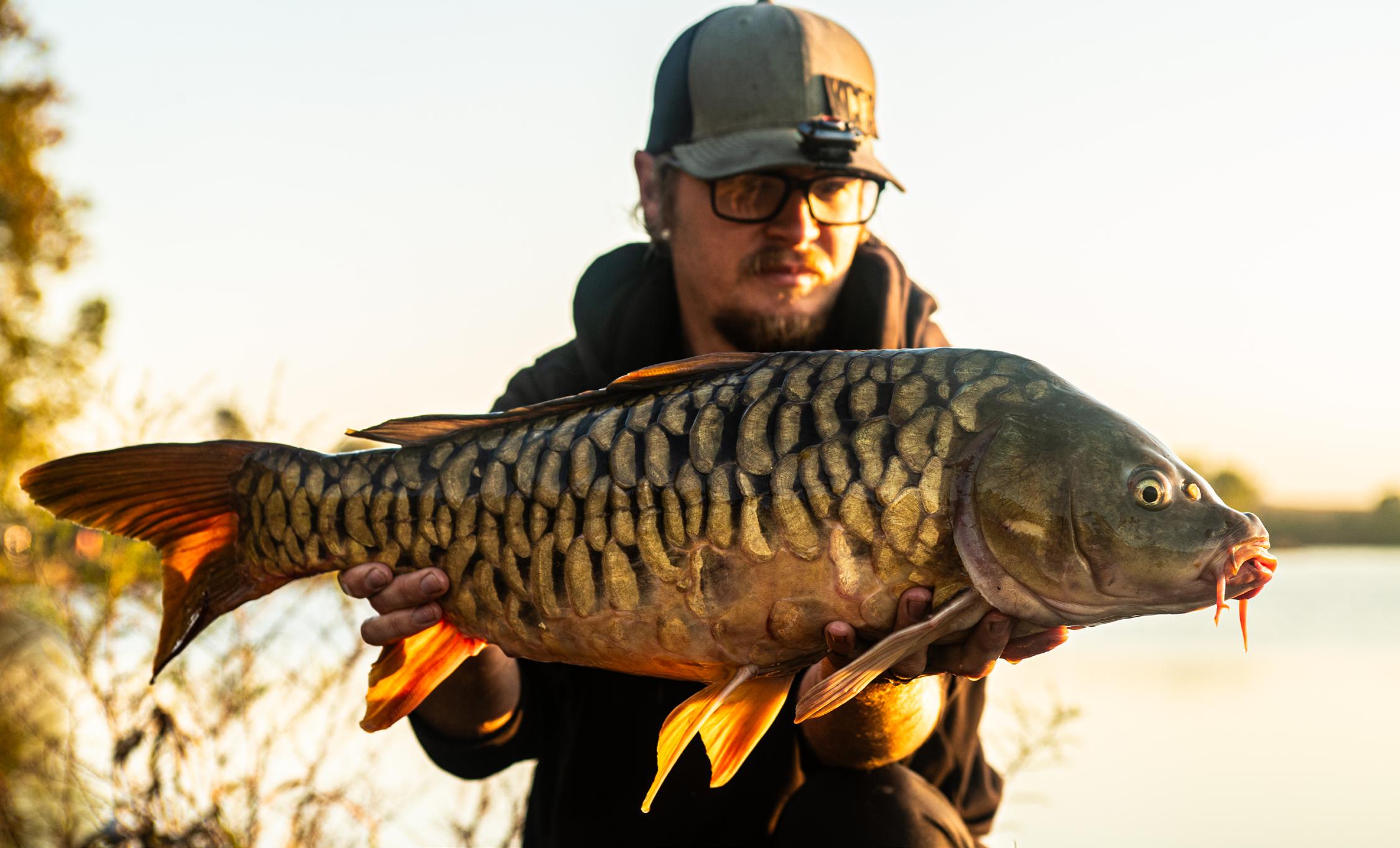
I park the Flex and see a few cars already here, with more pulling in behind me. I’m greeted right away with a few smiling insults and a couple of firm handshakes. This is the part I love most about running a tournament, the connection, the shared anticipation, the buzz of what’s to come.

Who’ll be the first to put a fish on the board? What pegs will everyone draw? When will the banter over the radios start? Will Aniq catch a catfish? Did I bring the net for the get the net prize?
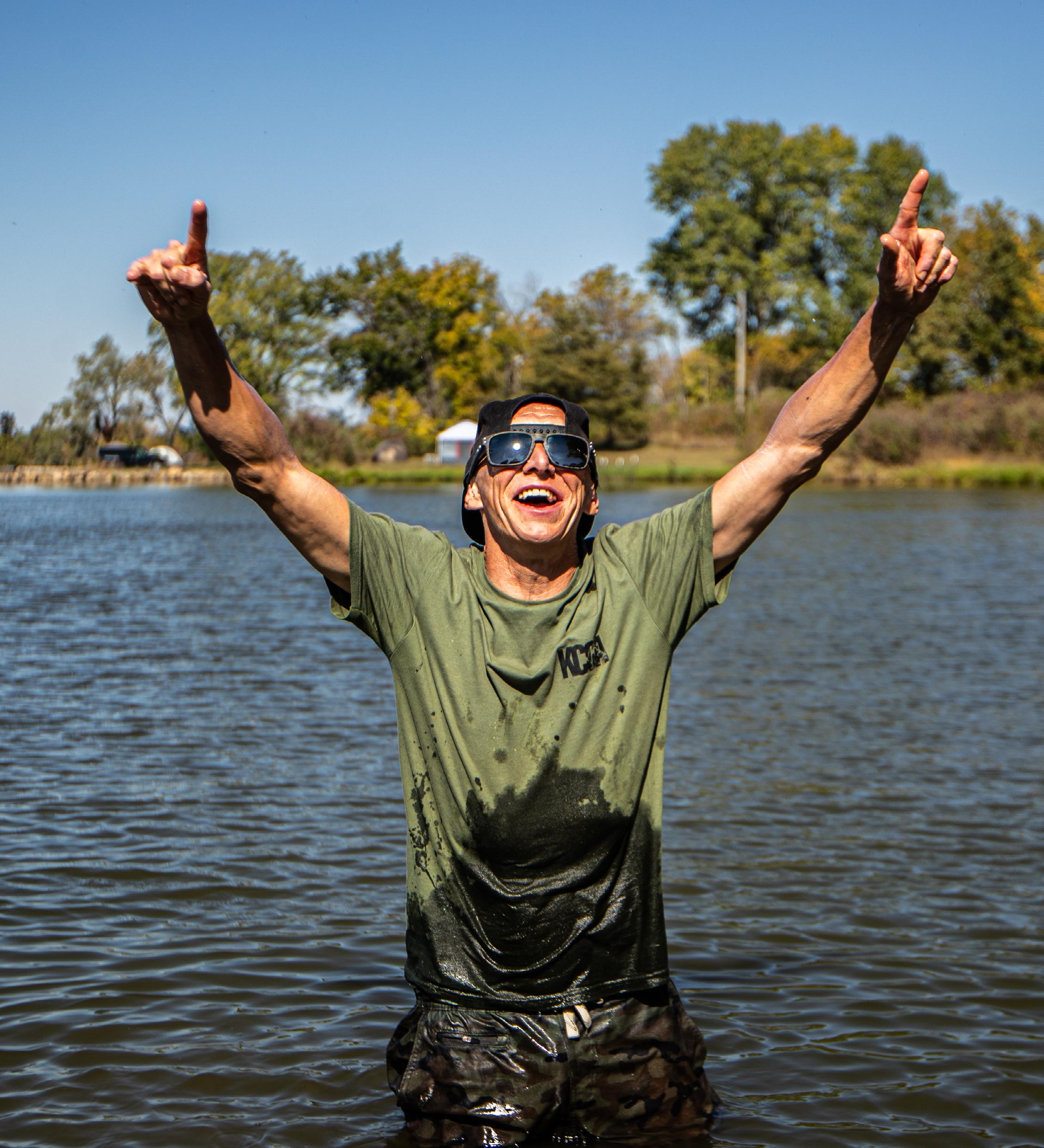

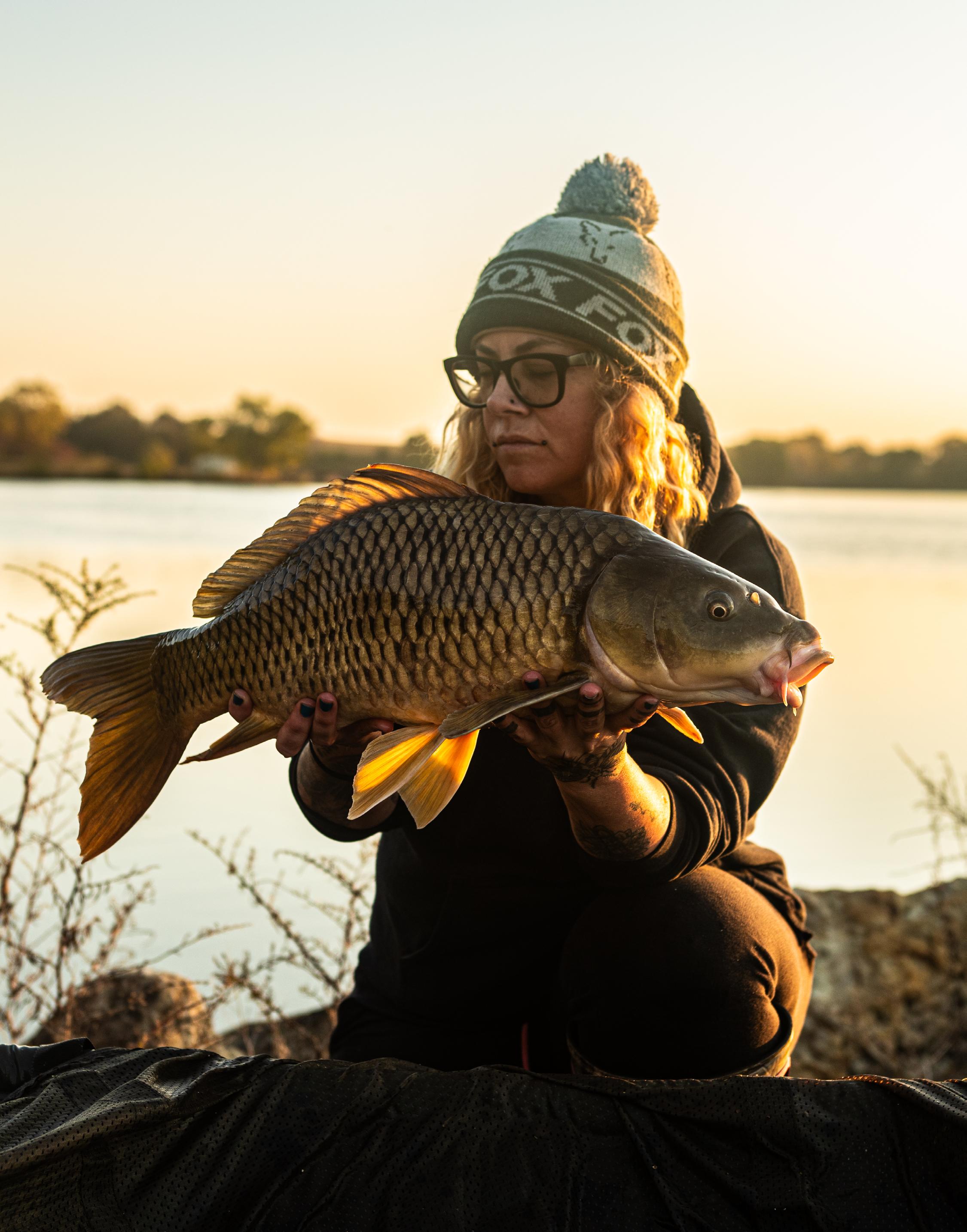
In the end, the tournament was amazing. If I did forget anything, it must not have mattered, so much so that I’ve already forgotten what it was.
I hope you take the chance to spend time on the bank with your friends and family. And more than that, I hope someday I get to see you at the KCCA Harvest Moon Classic. As I write this, the 2025 tournament is planned and ready to launch in just a few short months.

We’re starting to look ahead to KCCA Harvest Moon Classic 5.0.
Stay tuned, and I’ll see you all on the water.
Photo Credits: Eris Pflugradt at EEP Creations LLC
HMC link: https://www.facebook.com/groups/912249140082590
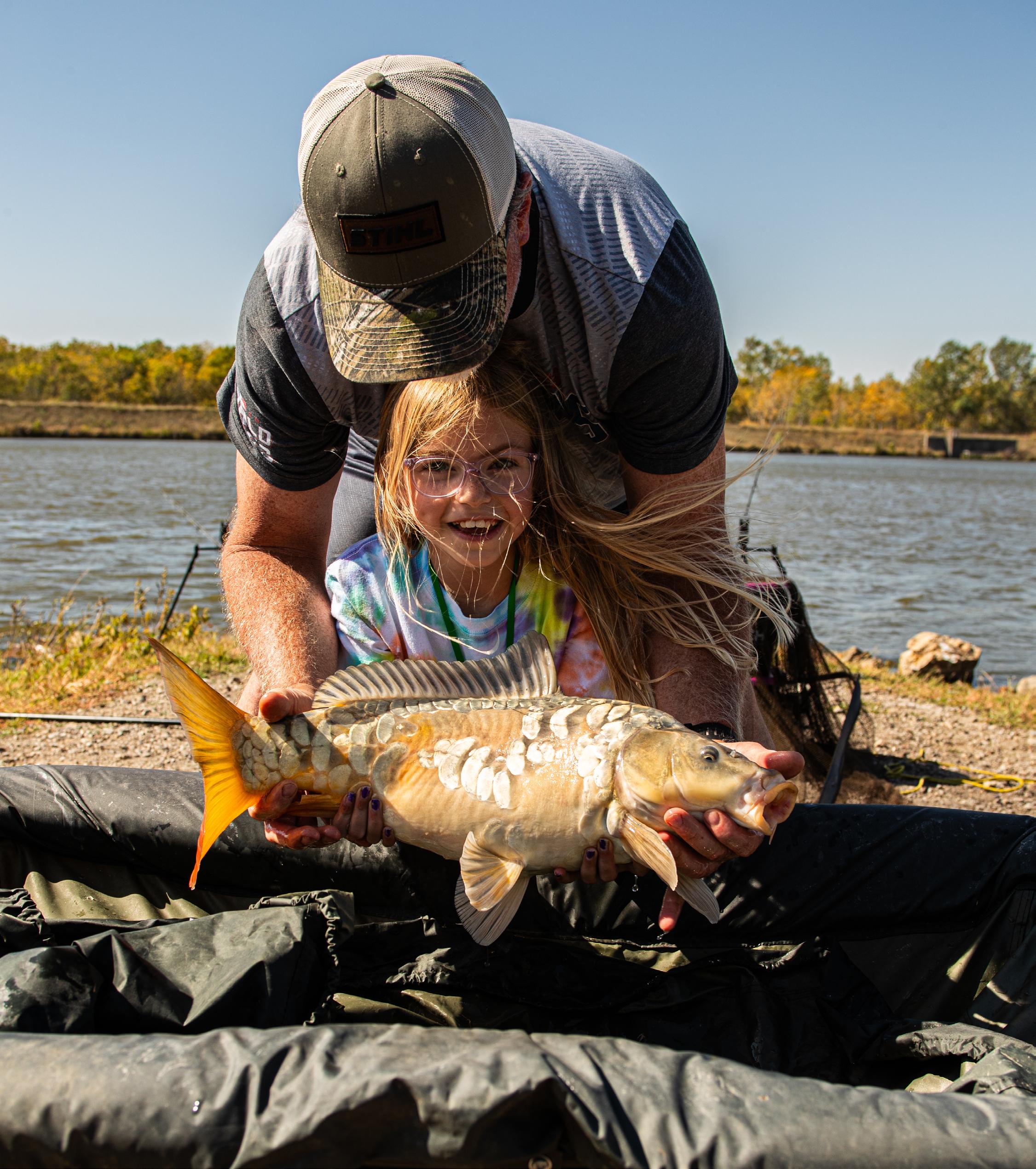

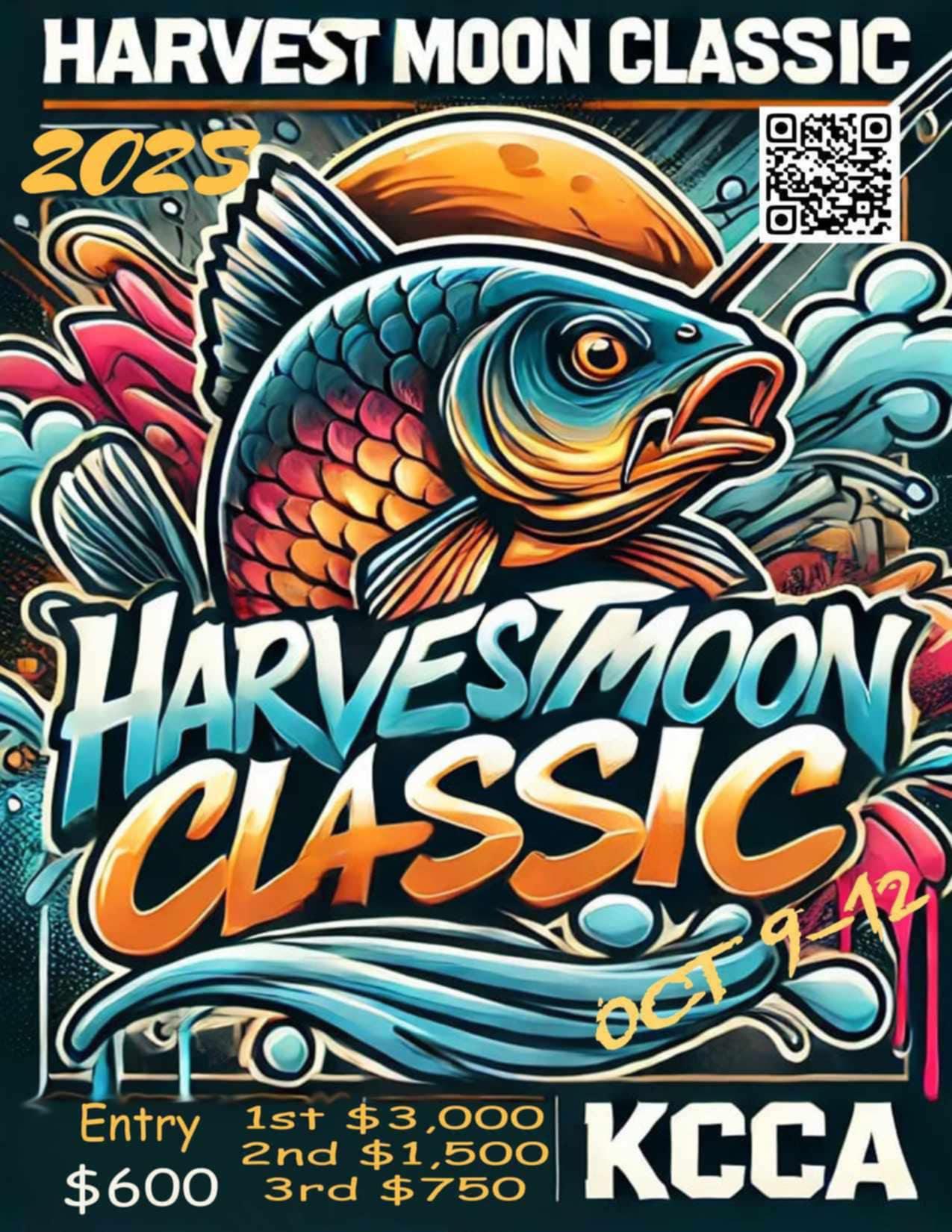

FROM HOBBY TO PASSION:
HOW HIPER FISHING CHANGED MY ANGLING JOURNEY
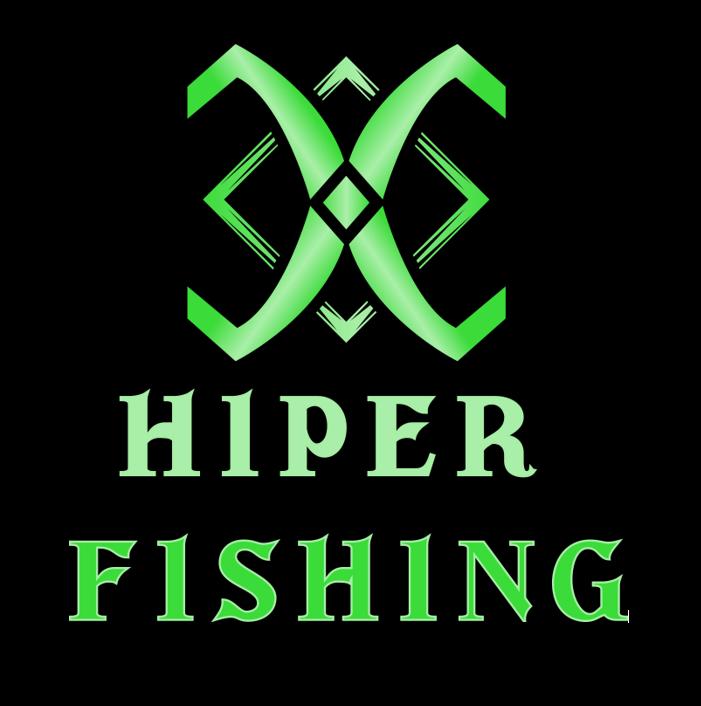
Like any sport or hobby, angling evolves with time, practice, and the right guidance. For me, that transformation came under the wings of what is now known as Hiper Fishing.
I’ve been fishing in the U.S. for just over six years, primarily targeting Carp and Buffalo. What began as a social pastime quickly took on new meaning when I met Louie van Beljon — a seasoned angler with deep roots in the South African fishing scene. From specimen angling to competitive bank angling, Louie brought a wealth of knowledge and passion that would soon shape my own angling journey.
It all started with a casual boys’ weekend at Somerville Lake. On the first day, my rods were quiet. But after taking a walk over to Louie’s setup, everything changed.

He showed us just how exciting fishing could be — not just catching fish but targeting bigger ones. With a fresh mindset our group took up the challenge, and the results were astounding and spoke for themselves.
That weekend was the catalyst. We had so much fun, we decided to make it a monthly tradition.
With Louie’s mentorship, we founded a local Angling Club, “Stallions Freshwater Angling Club (USA)”, where we compete at different venues each month. Our events are point-based, and a Club Champion is crowned at the end of each year.
What started as a few friends casting lines has grown into a passionate community of 24 members — each one pushing for the top spot while enjoying the camaraderie and competition.
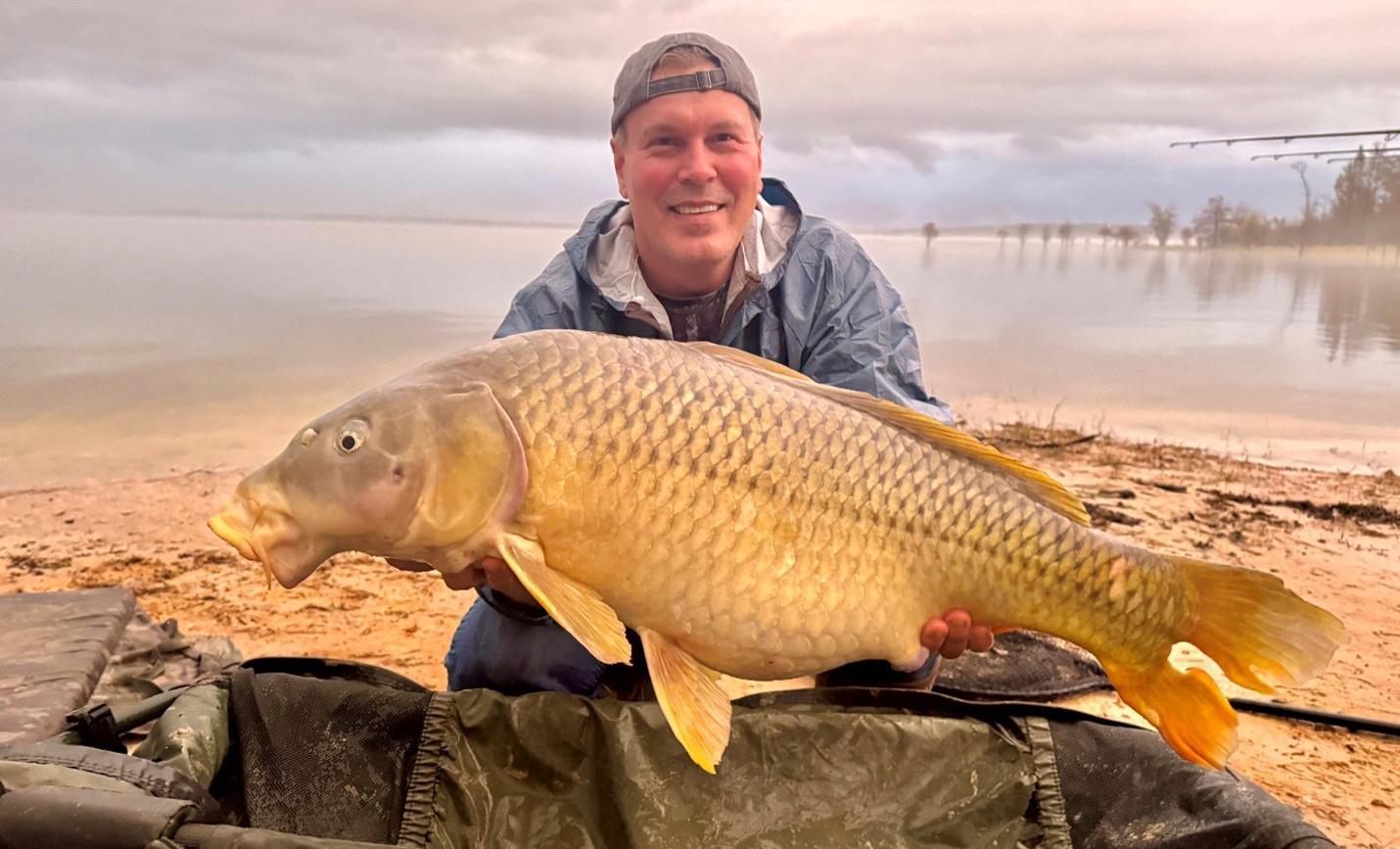
A key part of my growth has been finding the right products, and that’s where Hiper Fishing played a transformative role. In the early days, I relied on imported flavors from South Africa, which were not only expensive but hard to source consistently. Transitioning to Hiper Fishing was a game changer. When Hiper Fishing started, their range was limited — but even then, it was clear they were committed to getting it right.

Over time, they refined their concentrates, powders and consistency to better suit U.S. waters.
What began as a handful of flavors has now grown to 24 unique dip options, covering the full spectrum of strong, sweet, and fruity profiles as well as 4 powder options. As ambassadors we have put them all to the test across Texas waters, and the results have been very impressive.
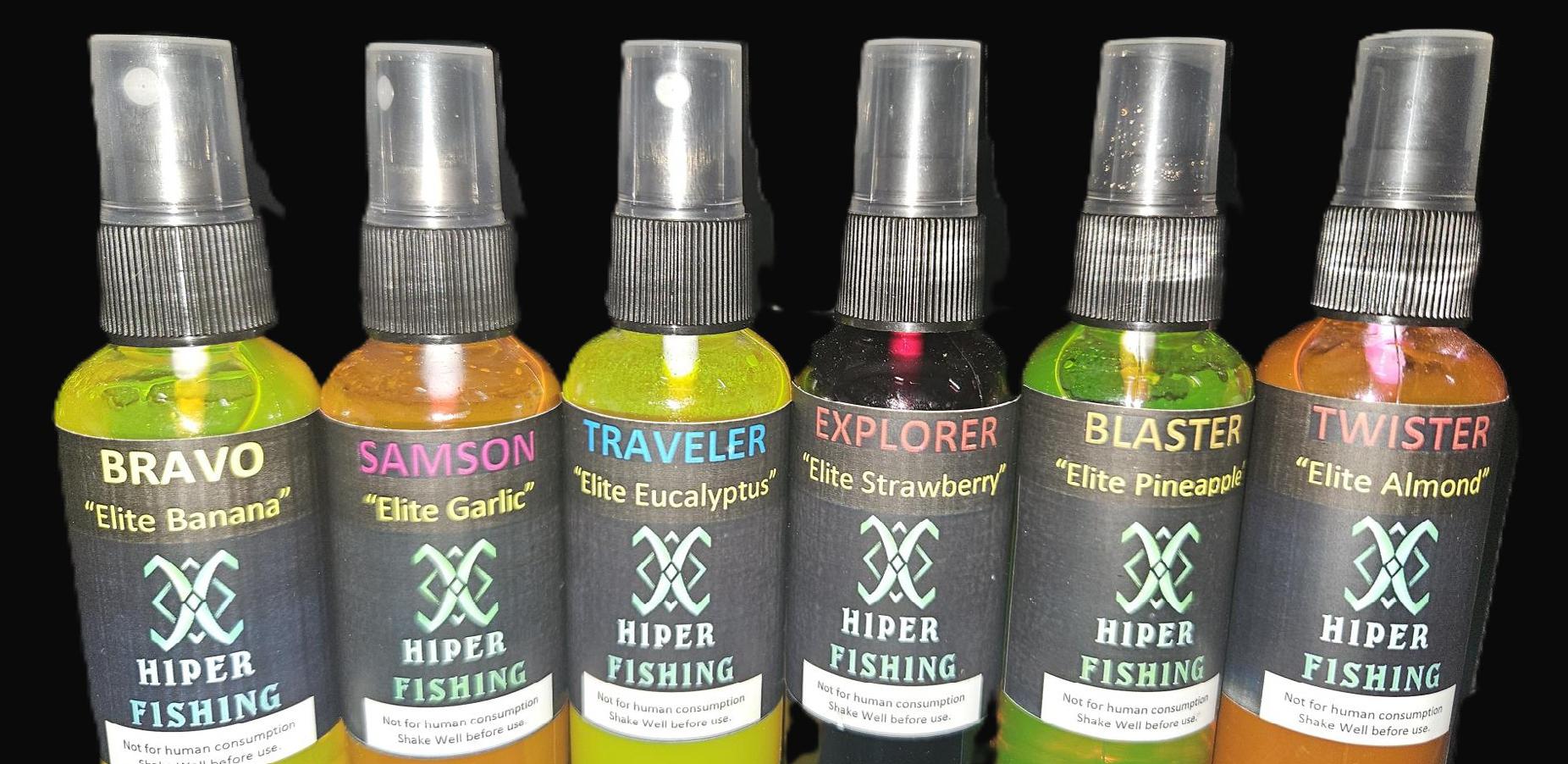

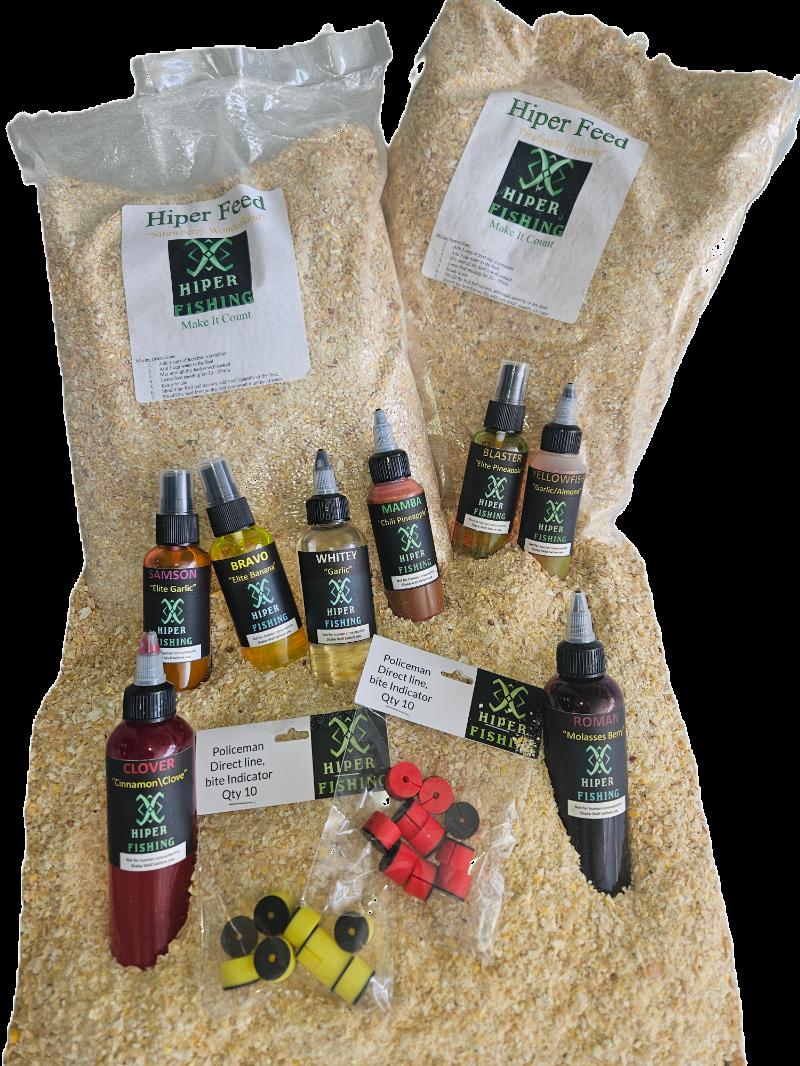
To me, Hiper Fishing’s biggest game changing asset is their Feed Range. Whether you need floating or laying feed, the consistency is spot-on — no pre-prep, no hassle. Just mix with water, and you’re ready to fish.
My personal favorite is the MaxiCinnamus, a cinnamon-rich blend that consistently delivers strong results. To quickly activate a spot, I’ll often make up 10 compact balls and drop them in the same area to draw fish in fast.
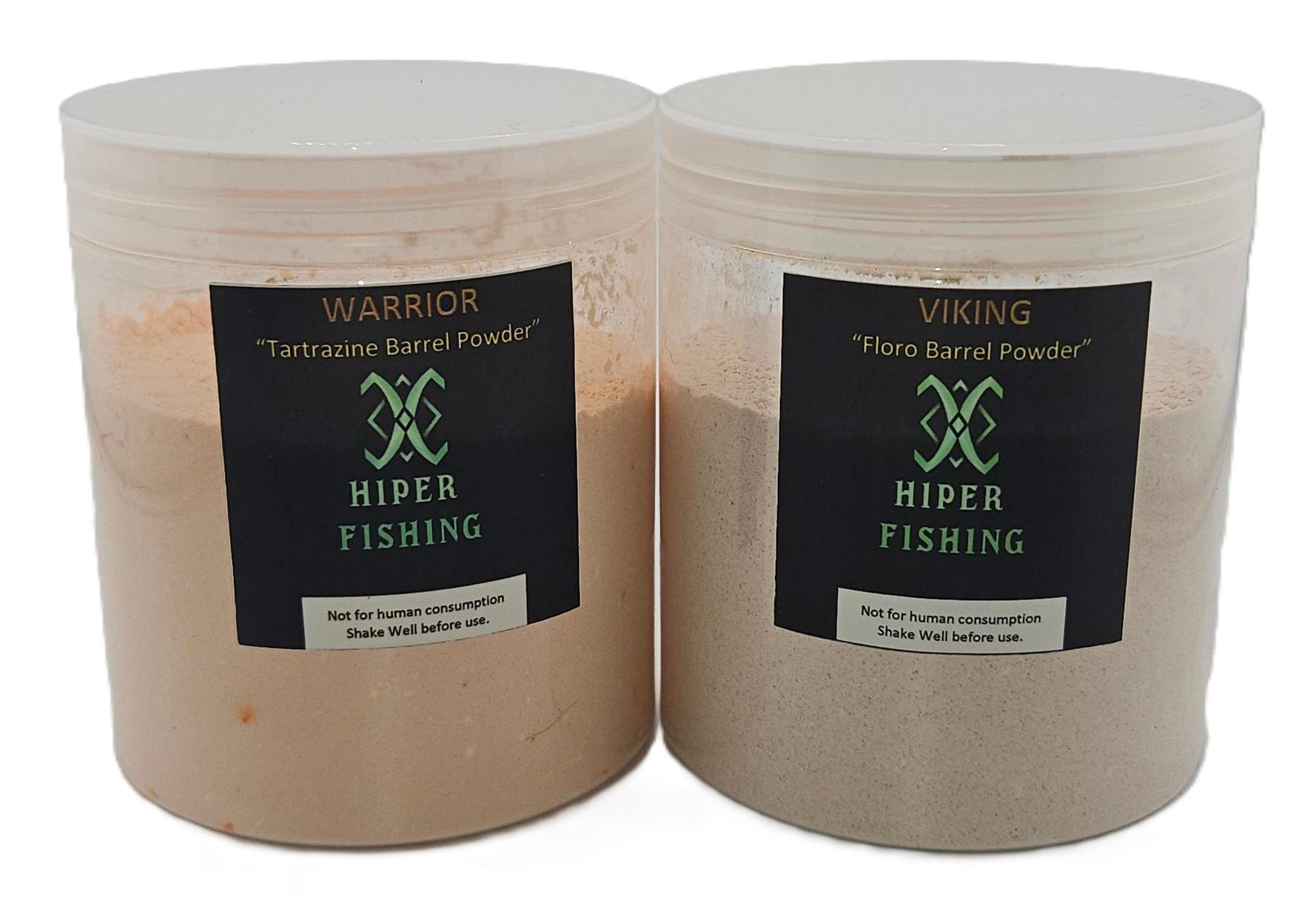

But Hiper Fishing isn’t just about Feed and Dips. Their innovative unique design is evident in the Modular Fishing Boxes they’ve developed — an all-in-one concept not available anywhere else and only made in the United States. The accessories like bait trays, drink -and phone holders, seamlessly slide on to the box which can attach directly into any surveyor’s tripod. It’s this type of thoughtful, “Angler-First” designs that sets Hiper Fishing apart.

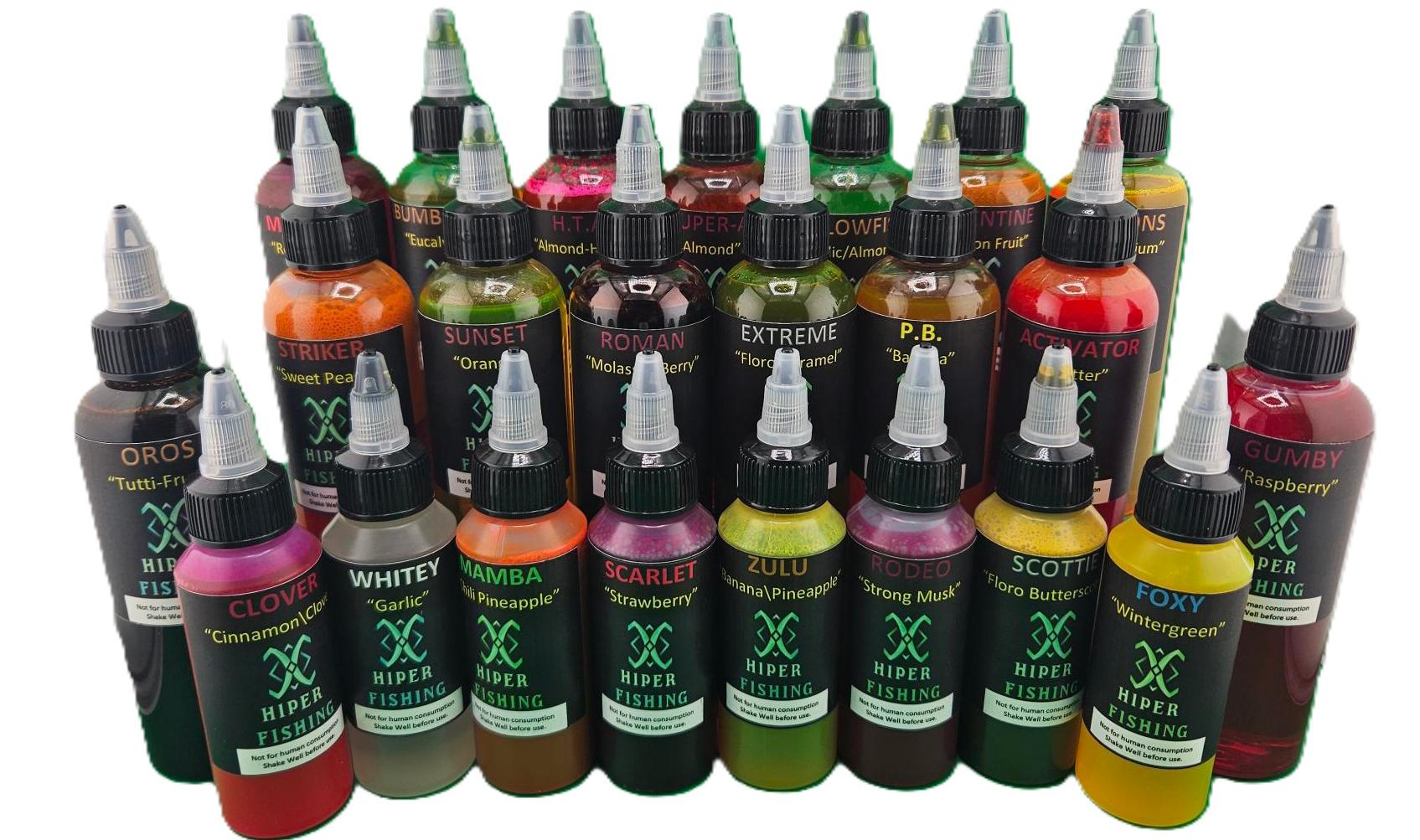
Fishing has become so much more than just a hobby for me — it’s now a true passion. With the support, innovation, and community of Hiper Fishing, I’m proud to say my angling journey has reached new depths. Being a Hiper Fishing Ambassador is not just a title — it’s a reflection of how far I’ve come and how much I believe in the products and the people behind them.
Lourie Louw
Historic Moment for U.S. Carp Anglers – Carp Angler Becomes America’s First Carp Tackle Brand!
Two years ago, we set out on a mission not just to build a brand, but to forge a movement We dared to dream that American carp anglers deserved a tackle company of their own Today, that dream is no longer just a vision, it’s history in the making Carp Angler proudly stands as the FIRST American Carp Tackle Brand, a title earned through dedication, resilience, and the unwavering support of anglers like YOU.
This isn’t just about us.
This is about every American carp angler who stood up for this sport, who refused to be ignored, who took pride in their craft and helped push carp fishing forward in the U S
From our customers to our partners and even to our competitors who pushed us to work harder: “We thank you”! You built this We just delivered
And what a delivery it is! Over 200 new products released all at once, on top of what we’ve already crafted, proving that American carp fishing is no afterthought; it’s a force to be reckoned with This is only the beginning
More innovation, more gear, and more history-making moments are on the way!
As we write this with goosebumps, we stand proud, side by side with you, we with the anglers who made this possible. Here’s to Carp Angler. Here’s to every American carper. And here’s to the next chapter in this incredible journey.
The first. The foundation. The future.
Carp Angler - The First American Carp Tackle Brand!
#CarpAngler #AmericanCarpFishing #WeMadeHistory #FirstOfMany
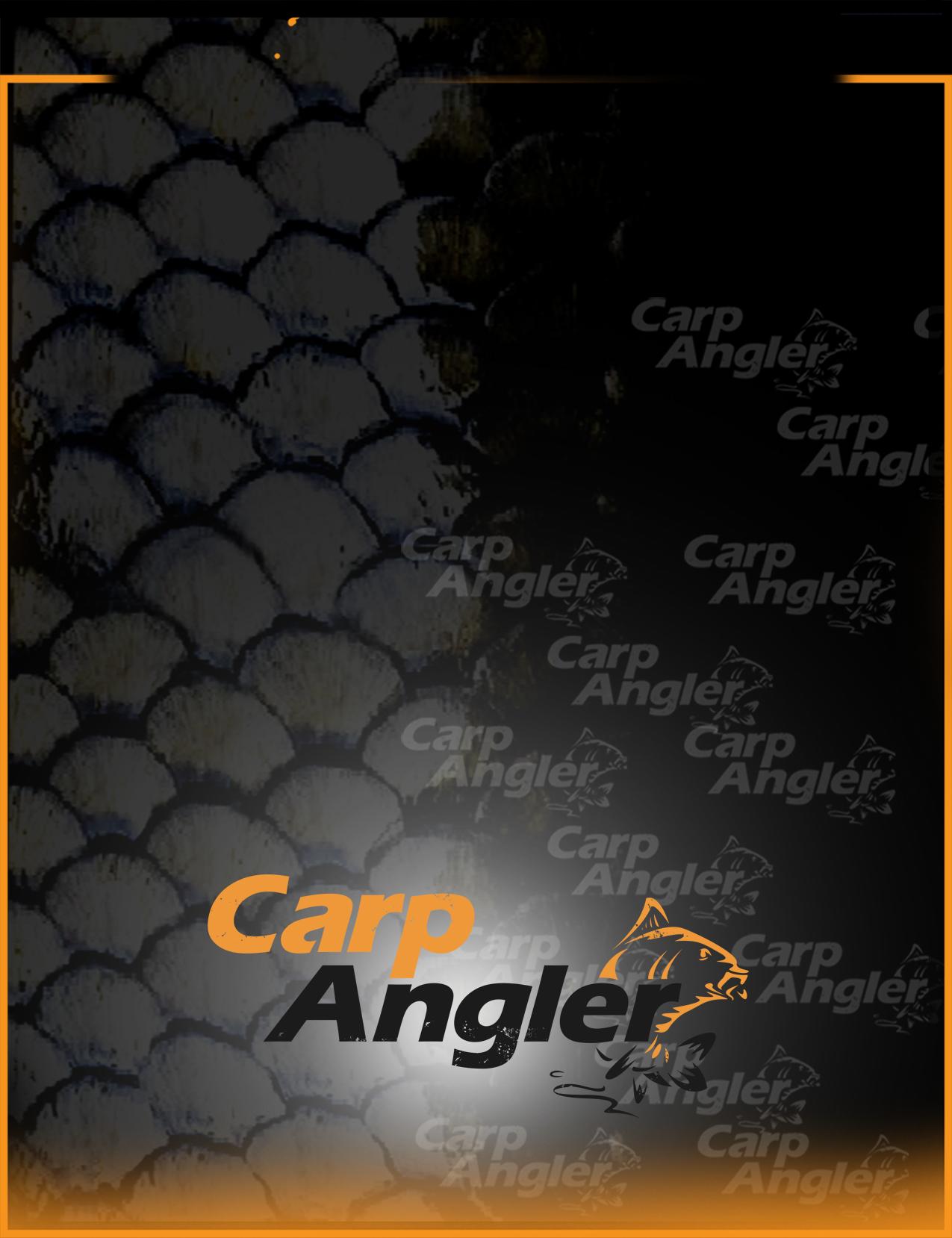

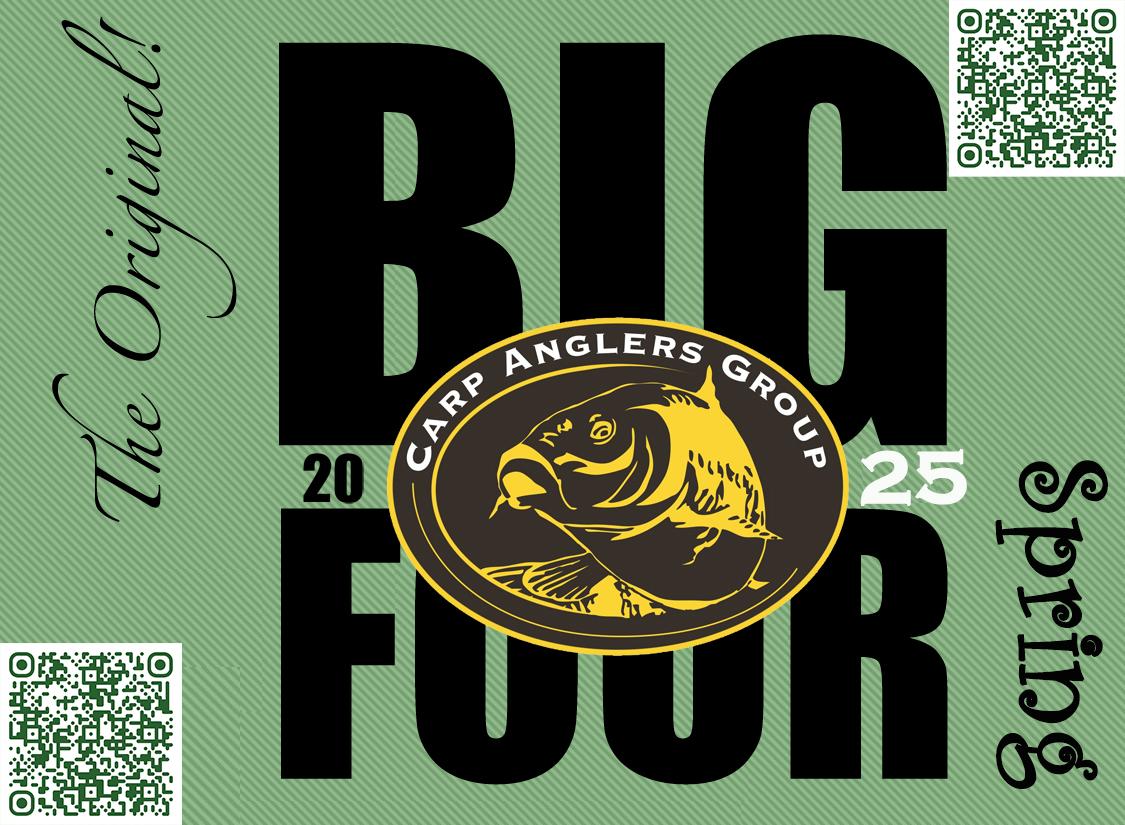
CAG Spring Big 4 – 2025
The Spring Big 4 was supported once again by Big Carp Tackle and West Coast Bait Boats as our lead sponsors together with prizes for Big Buffalo and Big Grass Carp from Carp Angler. It also heralded another fantastic prize pool with up to $2250 in prizes available to the winners!
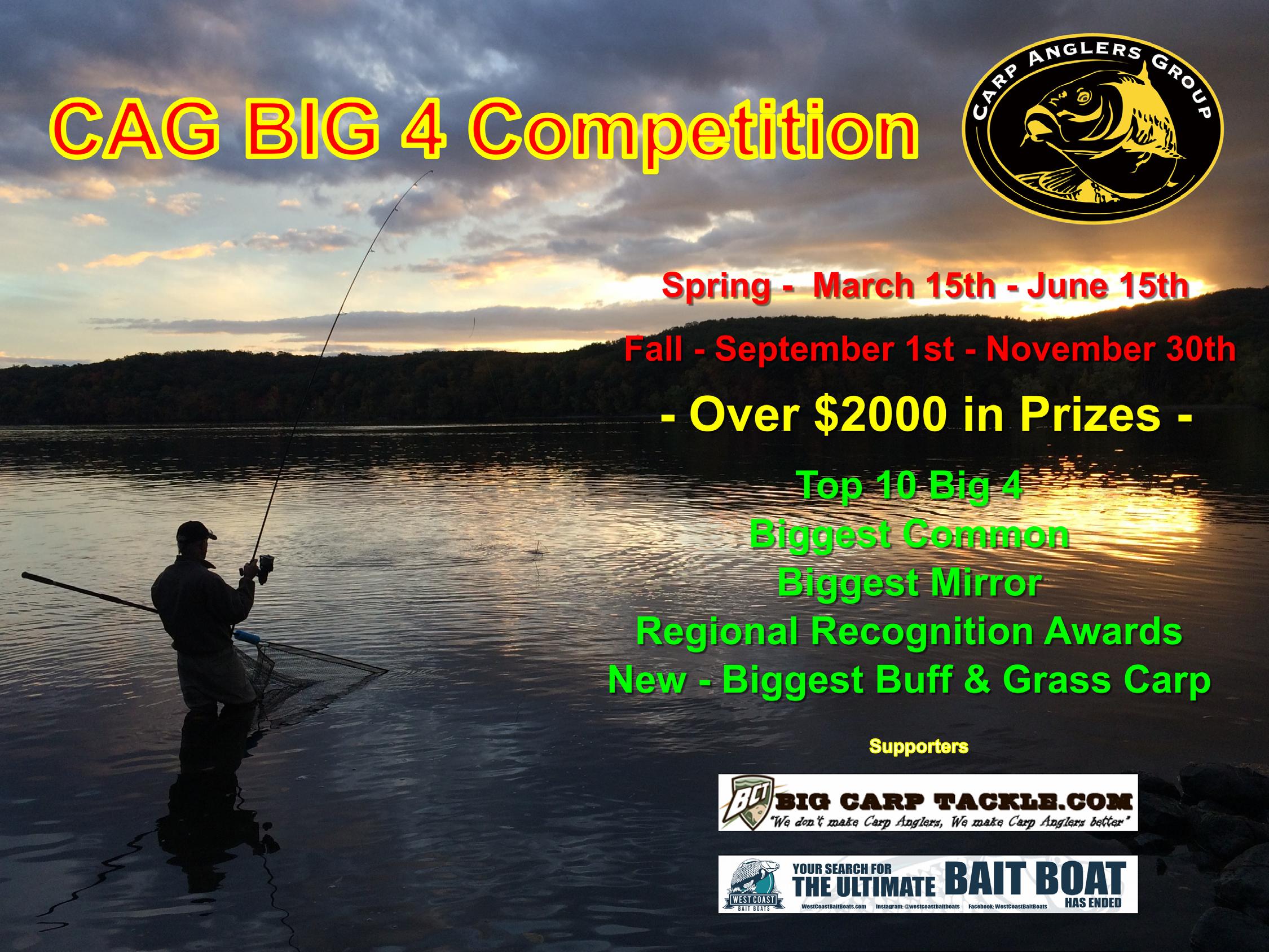
There were some truly memorable catches including Rafal Wlazlo’s common of 45lb 8oz which became, albeit temporarily, the new Connecticut state record. We also saw another 40+ fish from Michael Ledford together with his Big Buffalo of 62lb 8oz!
In order to take part CAG Members register for the competition and then upload details (Photo, Weight, Date of Capture and State where caught) of their Four Biggest Carp caught during the period of the competition.
Here are the Spring Big 4 2025 results!
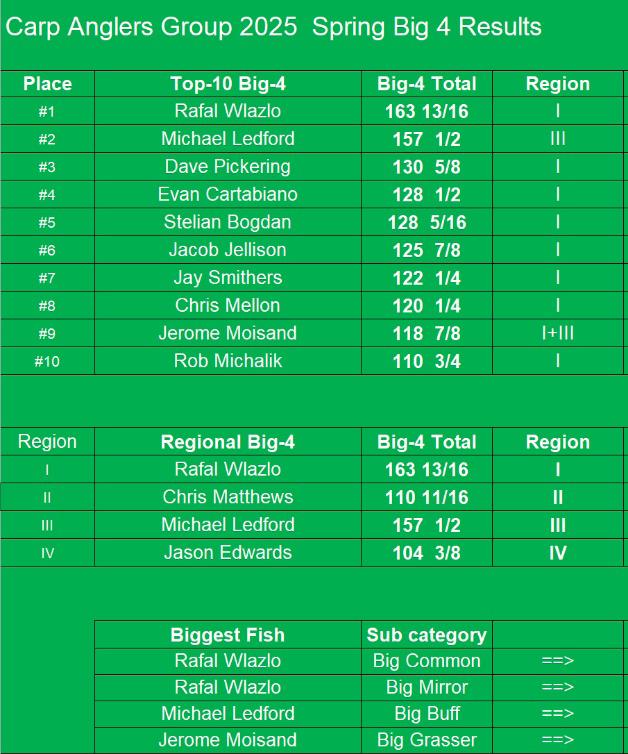
There are also prizes for Big Common, Big Mirror as well Regional Awards. We also award prizes to the Biggest Buffalo and Biggest Grass Carp.
The Fall Big 4 will start earlier this year and will run Sept 1st – Nov 30th !
Click Here for More Details: https://www.carpanglersgroup.com/forum/index. php?/topic/63194-cag-big-4-competition-whats-itall-about/
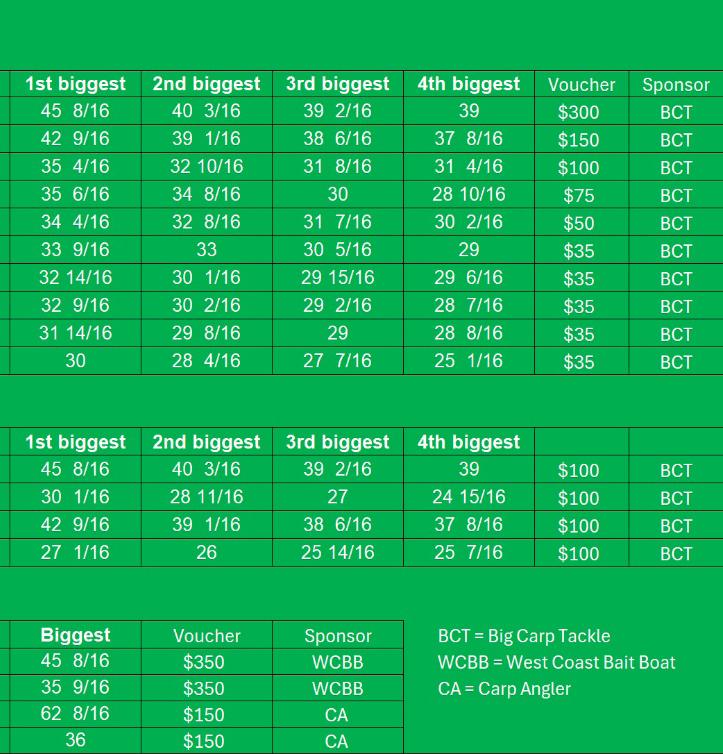
Our congratulations to all the winners. Regional and Big Fish Winners will also be receiving Photo Plaques commemorating their captures.
WINNERS PHOTOS

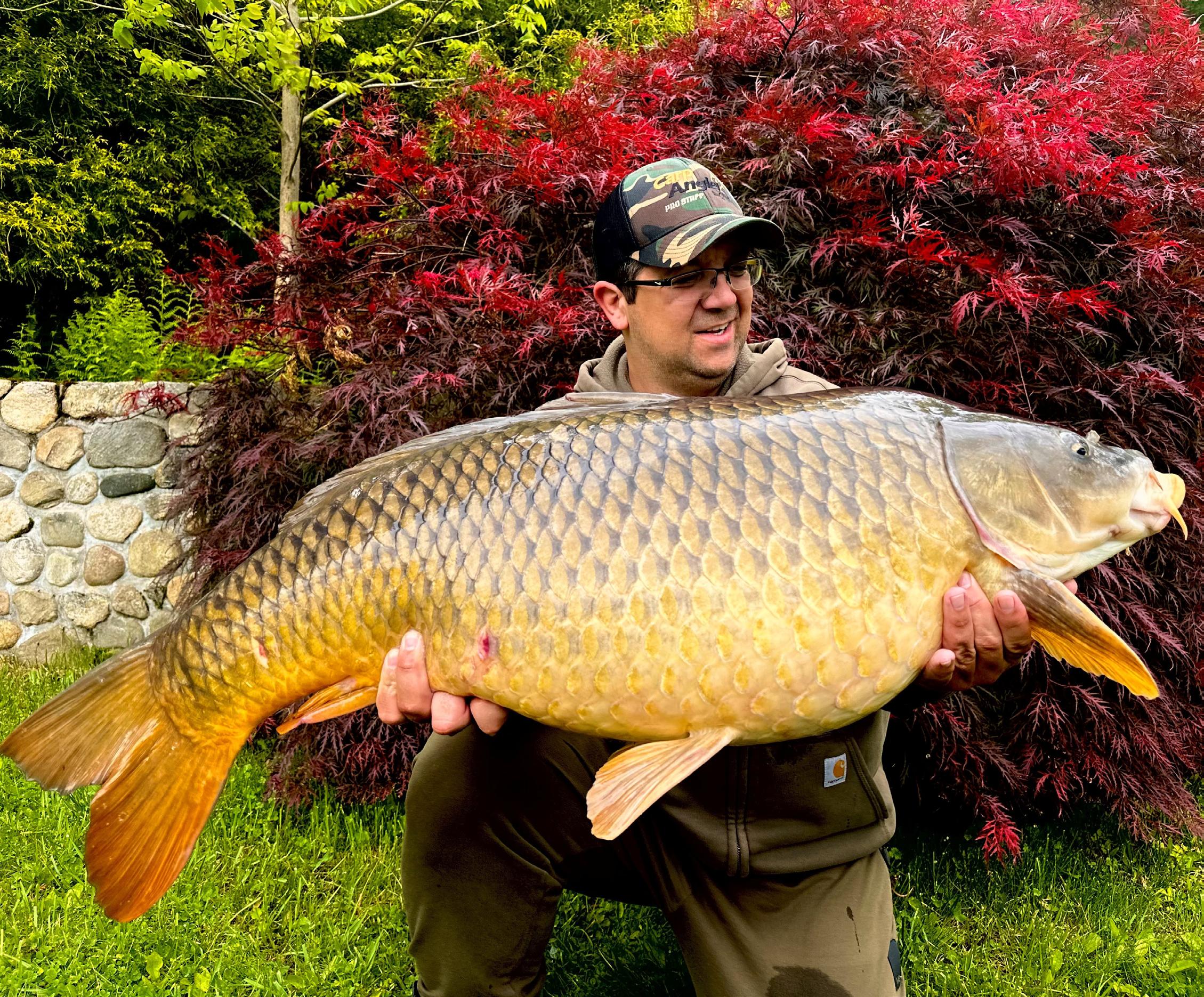

Michael Ledford 2nd Place & Region III Winner
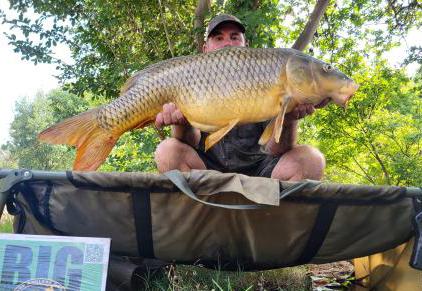

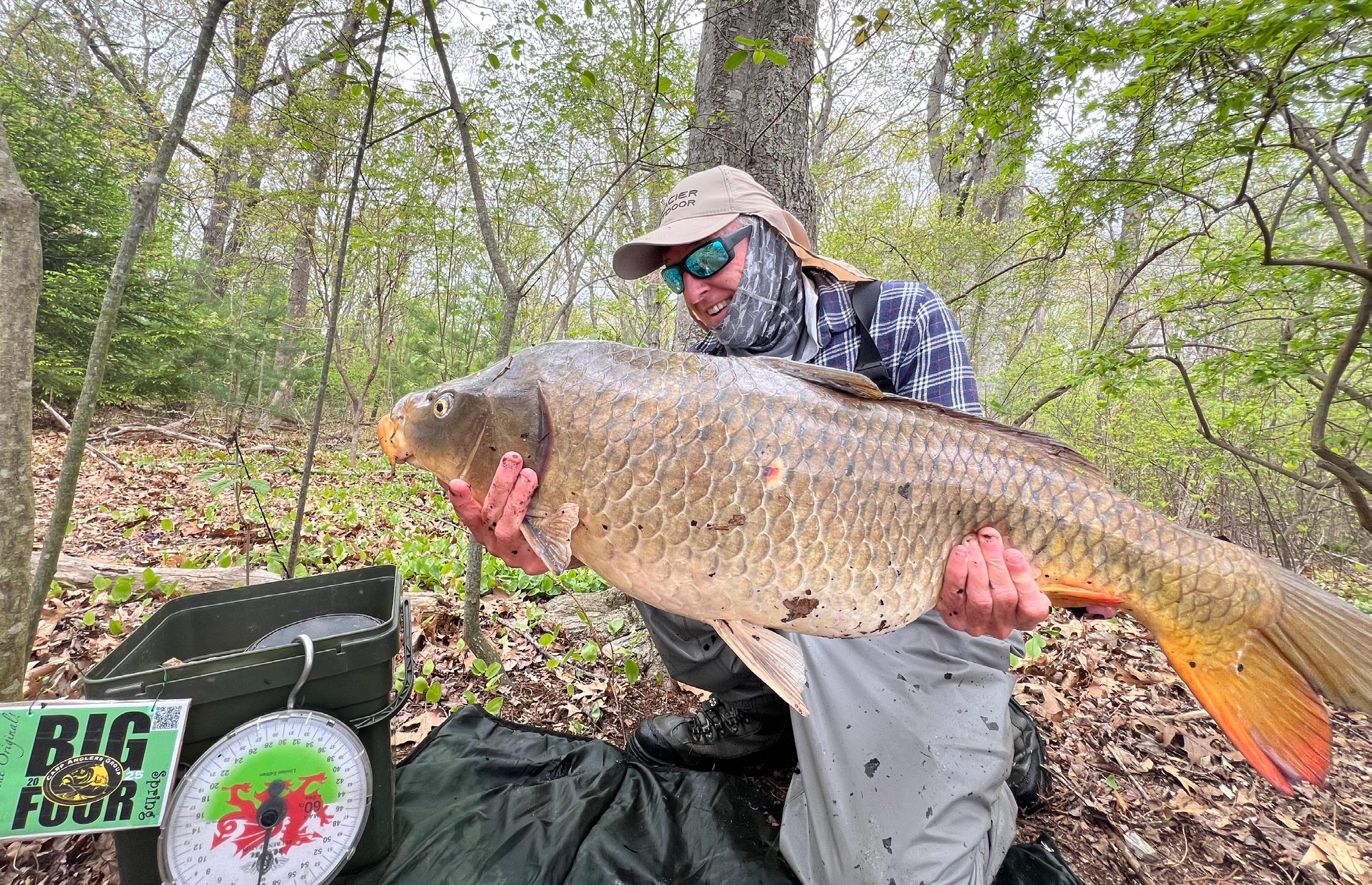
3rd Place
Dave Pickering

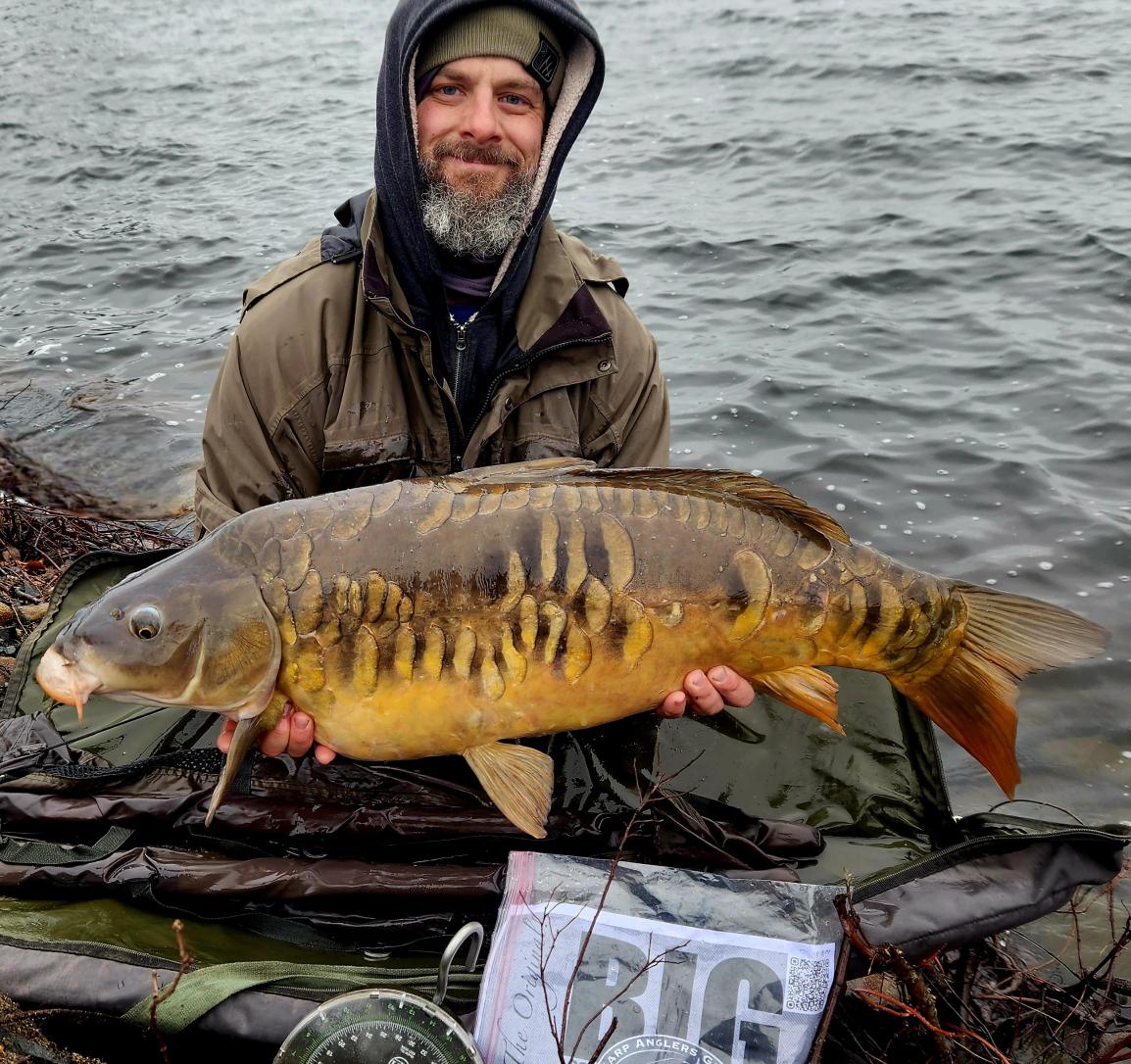

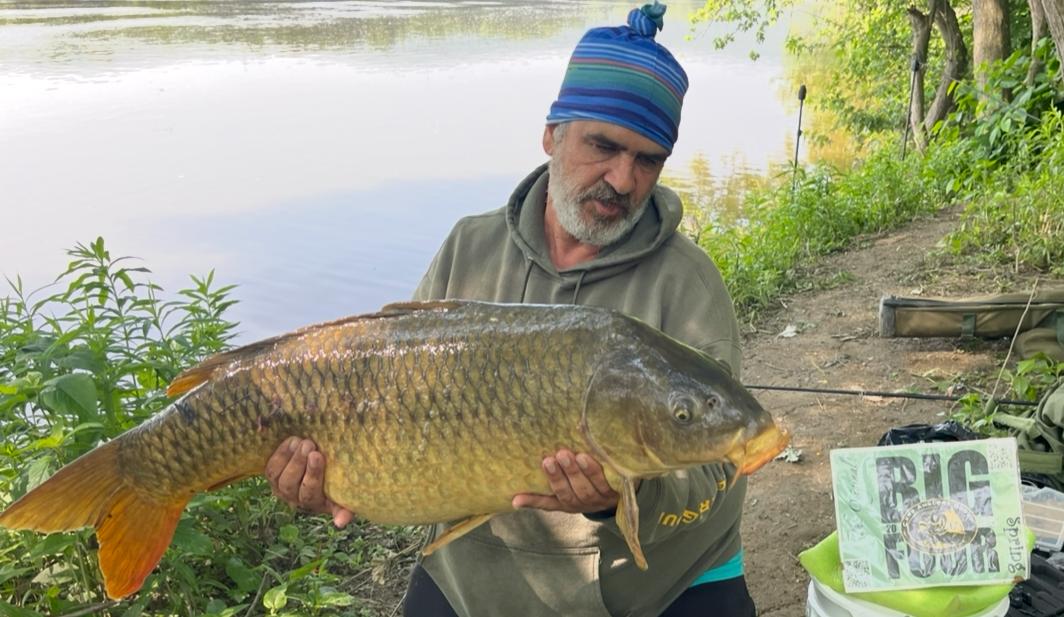
Evan Cartabiano 4th Place
Stelian Bogdan 5th Place


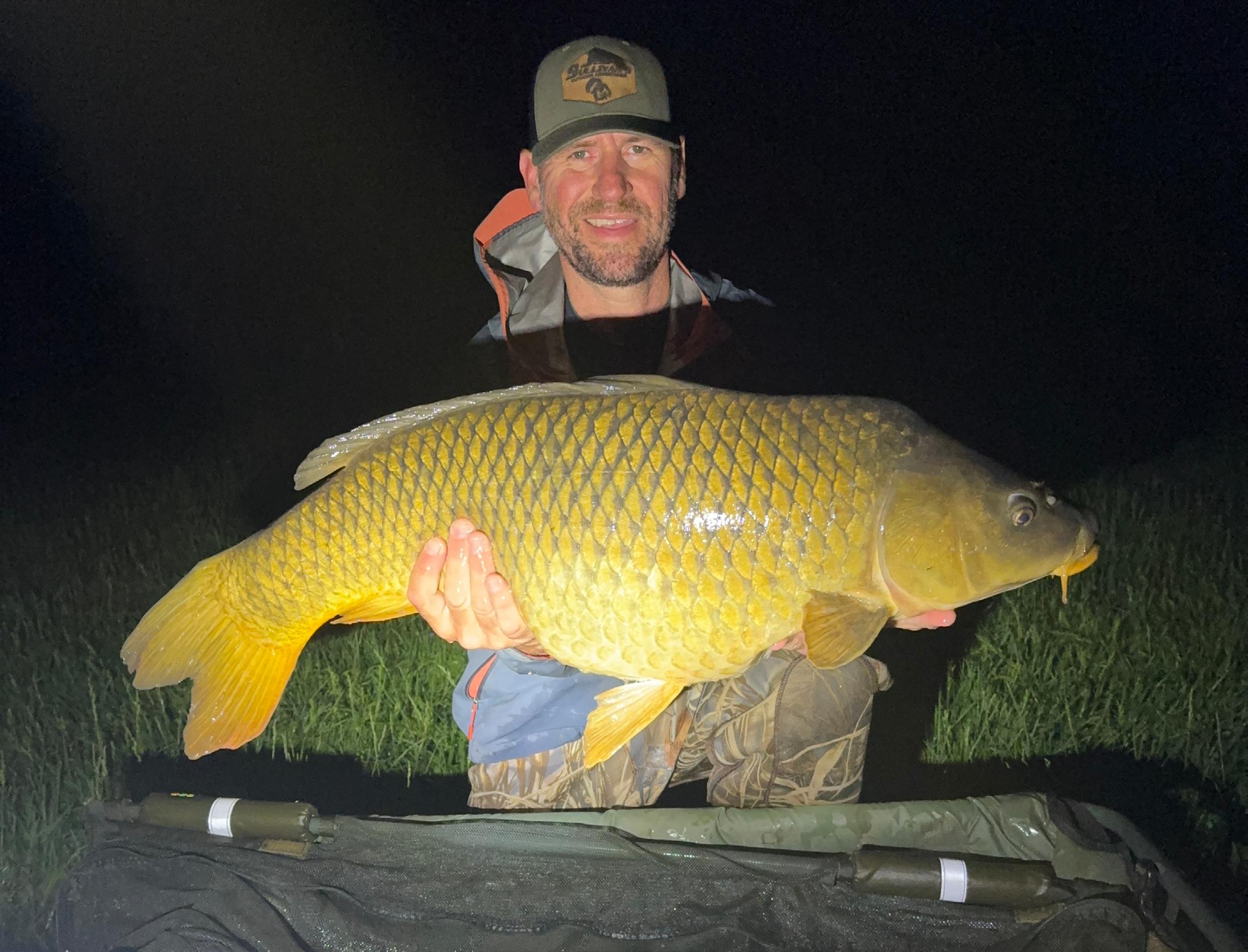

Jacob Jellison 6th Place
Jay Smithers 7th Place

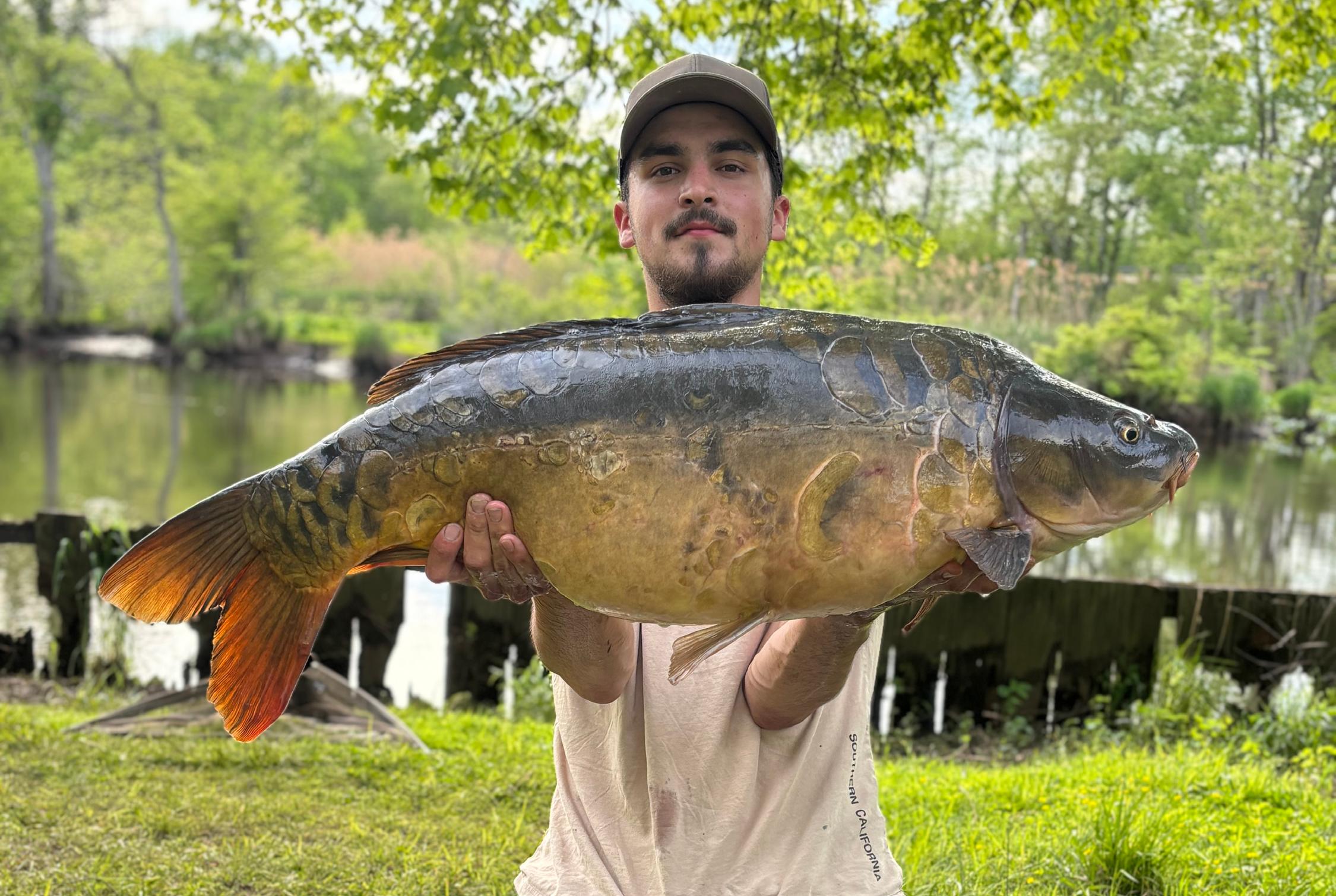

8th Place
9th Place

Chris Mellon
Jerome Moisand

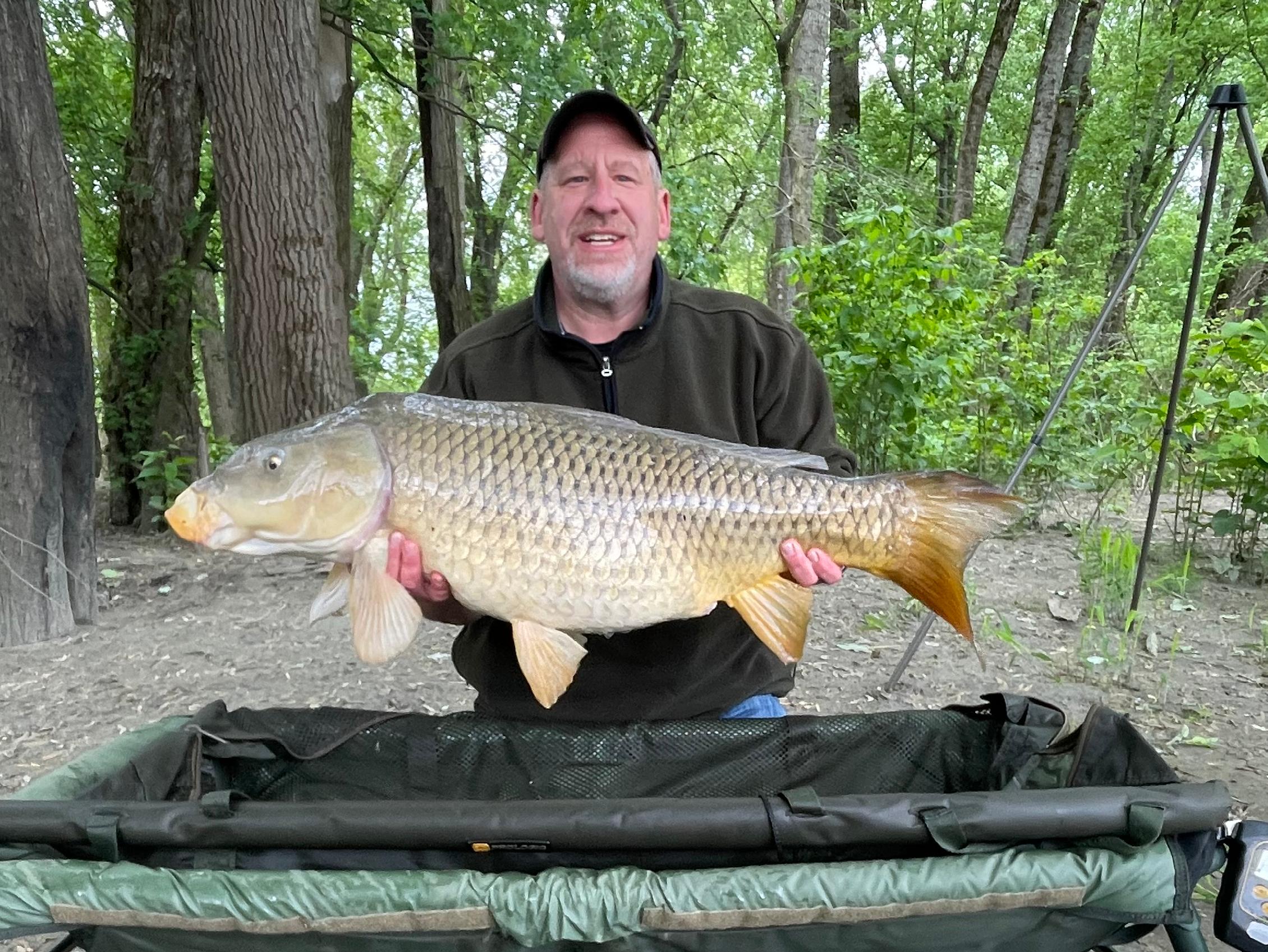
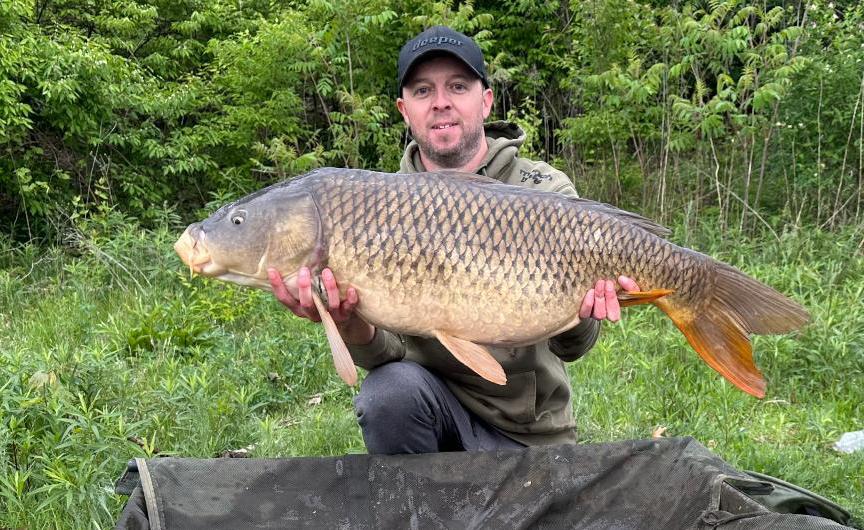

Rob Michalik 10th Place
Chris Matthews Region II Winner

Region IV Winner

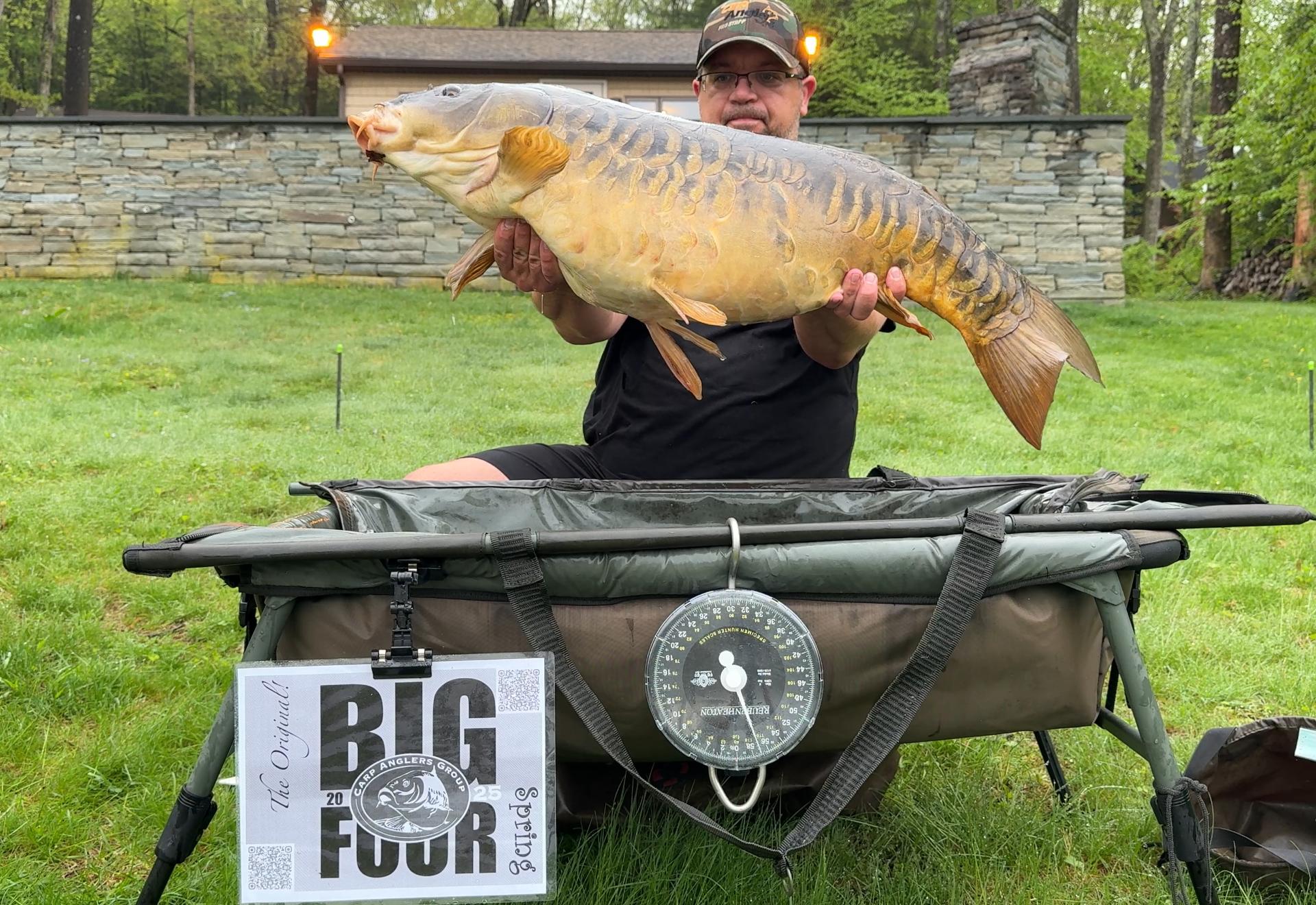

Jason Edwards
Rafal Wlazlo
Big Mirror

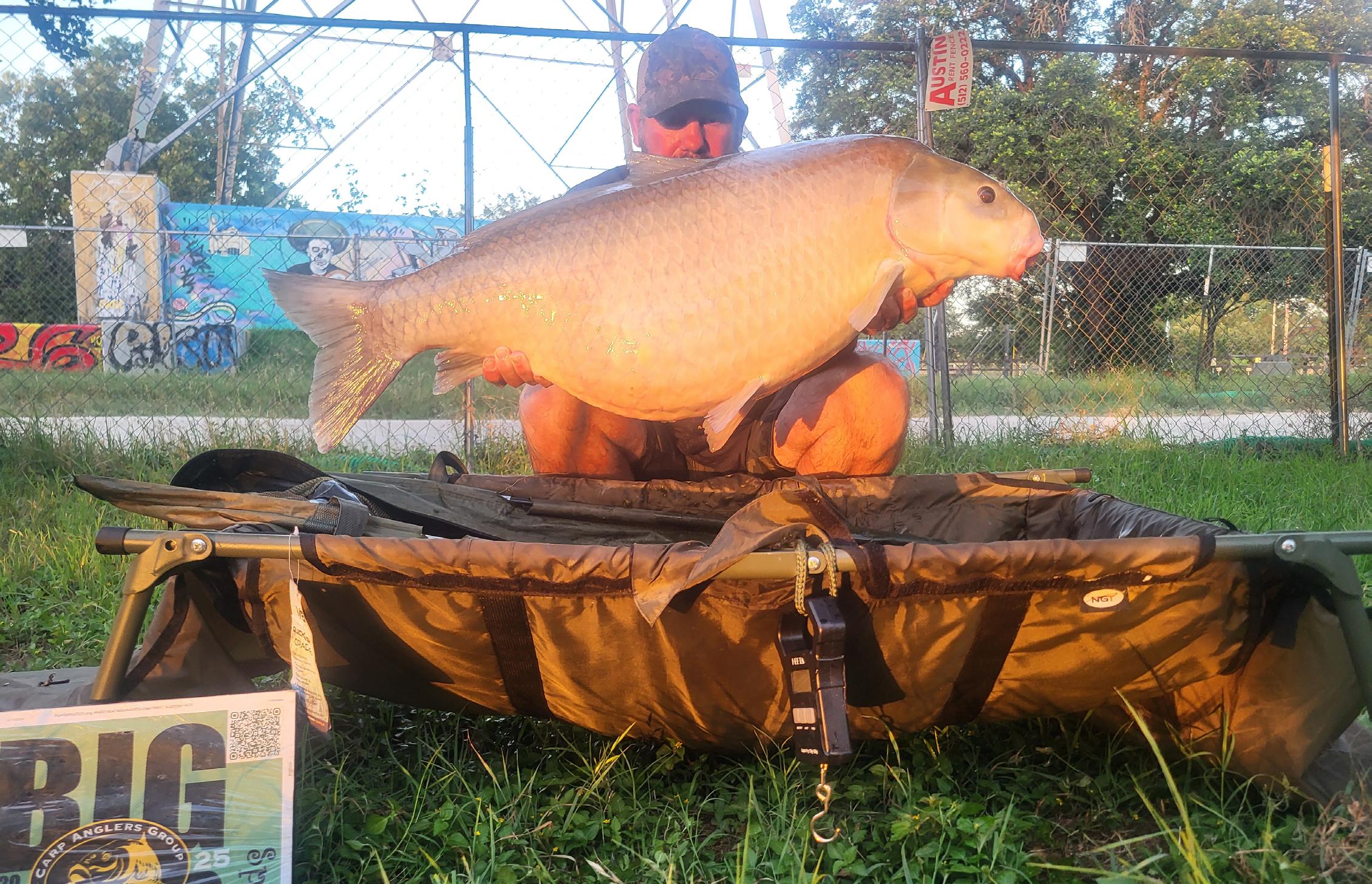
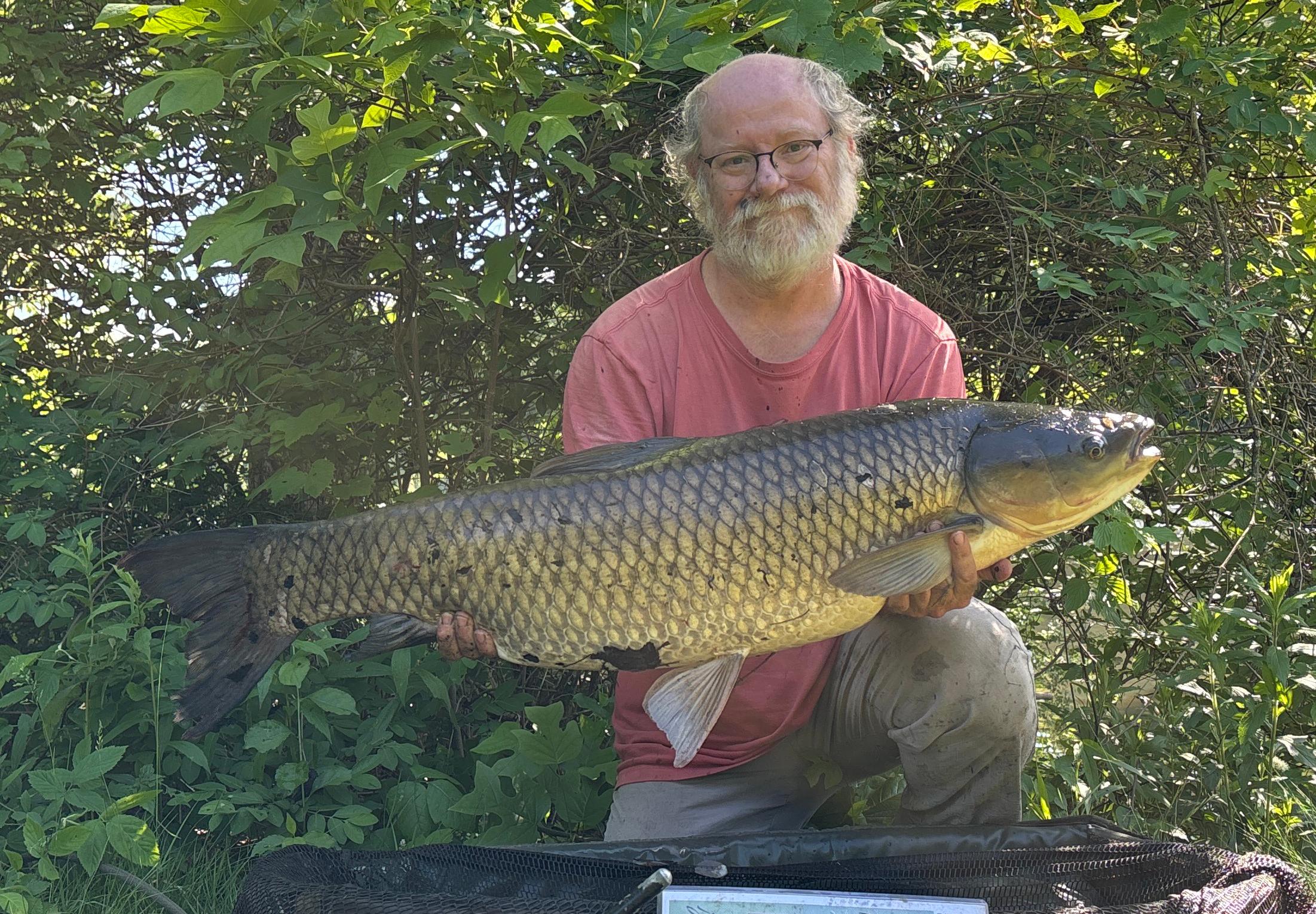

Michael Ledford Big Buffalo
Jerome Moisand Big Grass Carp
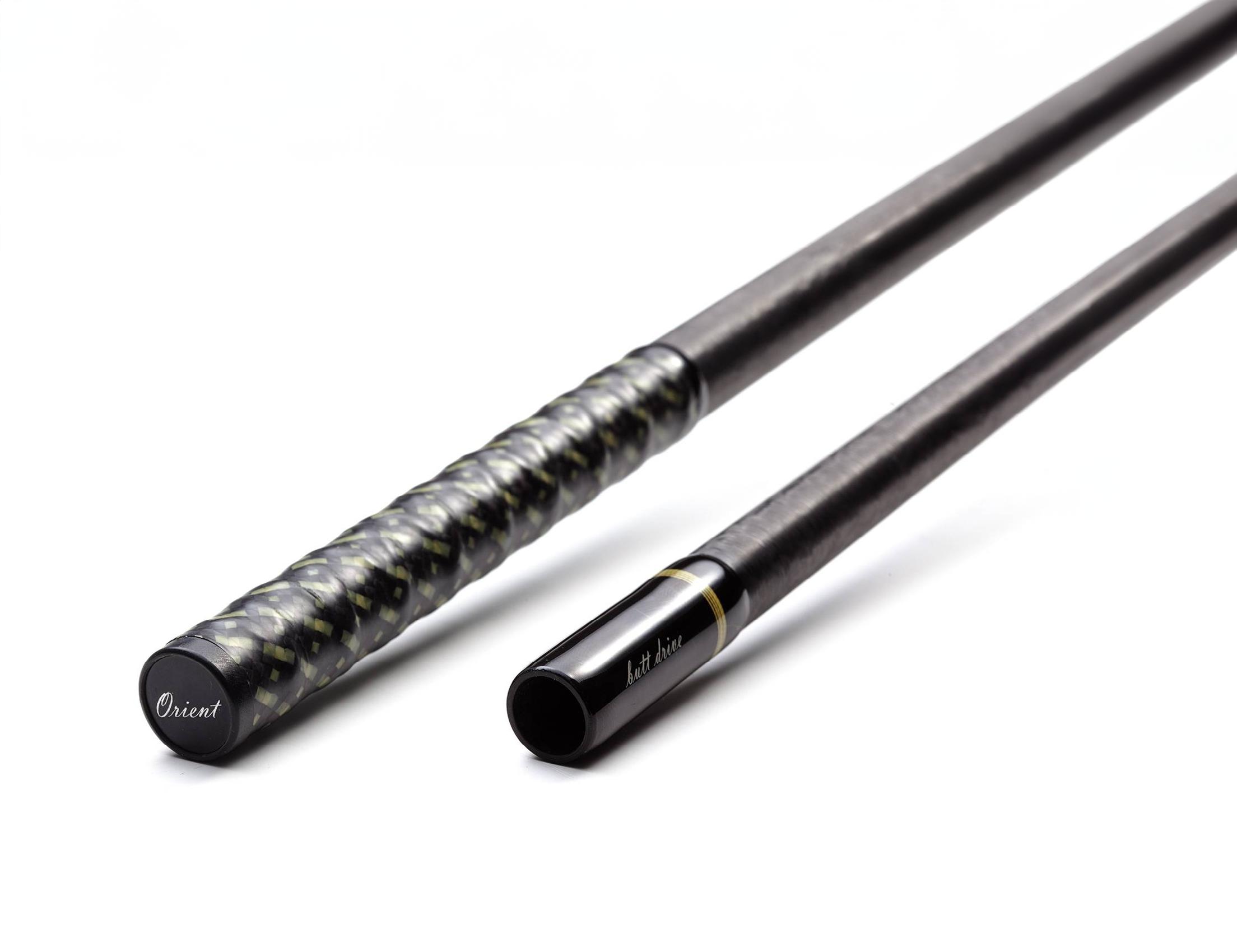
orientrodsusa@gmail.com
facebook.com/OrientRodsUSA
instagram.com/orientrods.usa


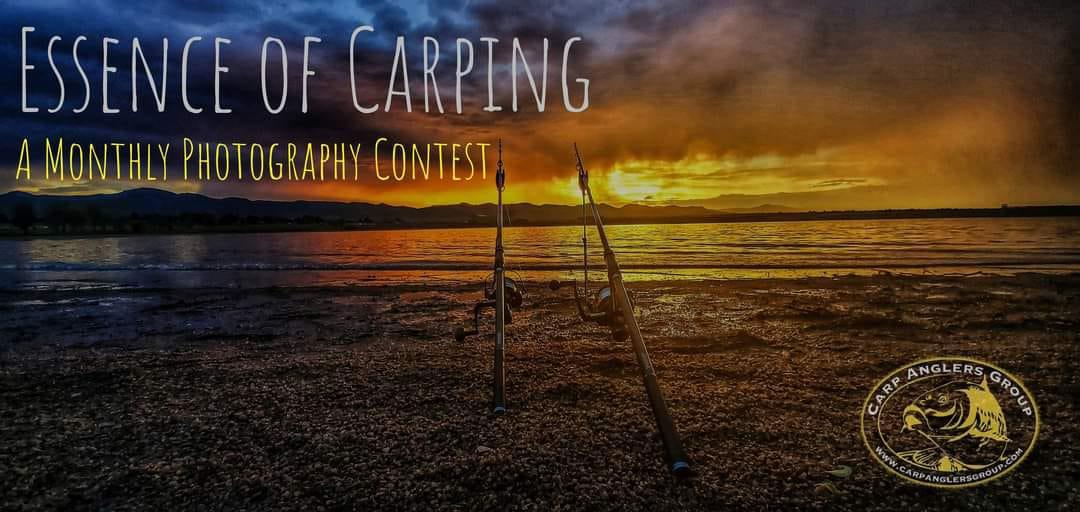
CAG members are invited to submit photographs that capture what is unique and exciting about carp fishing in North America.
Each month the winner will receive a special prize plus recognition for two runners up.
The photos do not have to be of someone holding a fish (this is NOT a Trophy fish competition) but they should be recognizable as being related to carp or buffalo fishing in North America and should reflect the capture of a special moment.
The ‘essence’ of carp fishing in North America might memorialize a remarkable scale pattern, someone’s first carp, a group of friends fishing together, a spectacular sunset, time of year or perhaps a dramatic background or landscape.
The judges will be fellow members who should pay particular attention to the subject matter and composition and not just the photographic or editing skills. In the event of a tie or any disputes the CAG BOD will be the final arbitrator.
Each month we’ll announce a winner and Award a prize or voucher (worth $100) with the winning photo appearing in a forthcoming NACA magazine as well as the CAG Forum Site and Facebook page. The top 3 will also receive CAG Medals.
The Rules:
The entrant must be a Full CAG Member & the owner of any copyright to the photograph.
An entrant may submit a maximum of TWO photos only in each month.
The photograph must have been taken in the submission month (final date for submissions is 24 hours after the end of each month)
All fish photos must demonstrate appropriate carp care and catch & release
Each submission must include the following details:
1. The type of device (e.g. camera or phone) used.
2. The date the photo was taken.
3. Location (nearest Town and State).
4. Your Name
5. Photo Title (e.g. Mirror Magic, Waiting for the Bite etc)
Entries should be submitted to the “CAG Essence of Carping Competition” under the appropriate “Month” below.
Entrants agree that CAG may use or display a submitted photo on the CAG website and Social Media resources.
april 2025 Winners
1st Place
Dave Pickering
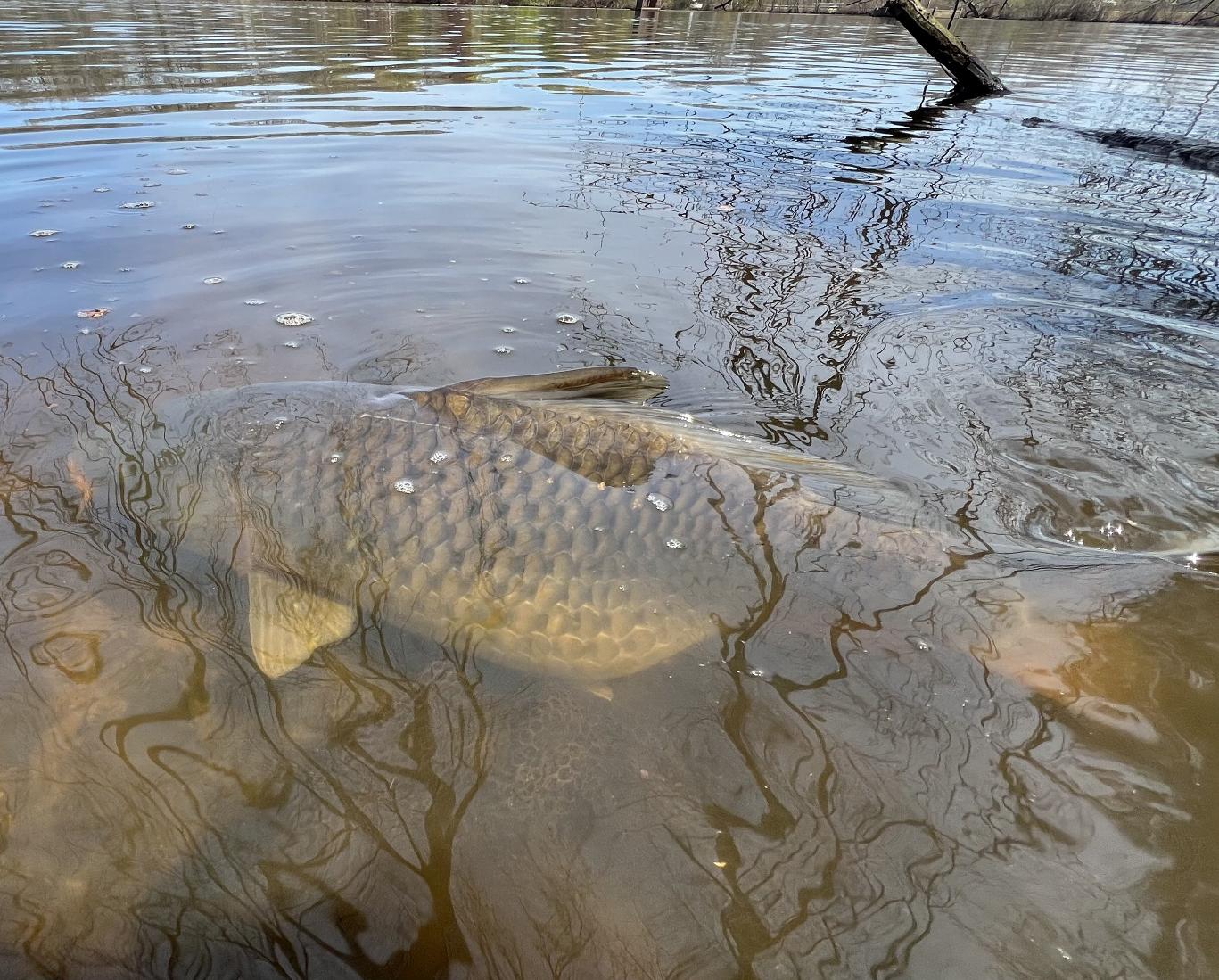
2nd Place
Frederick Hiller
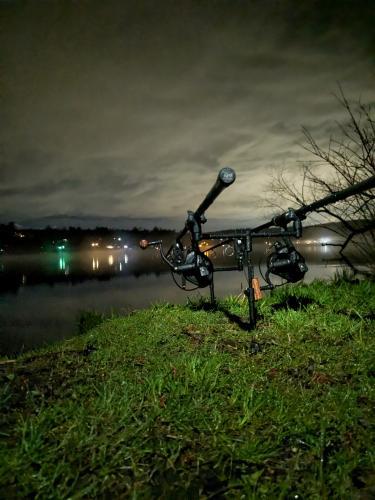
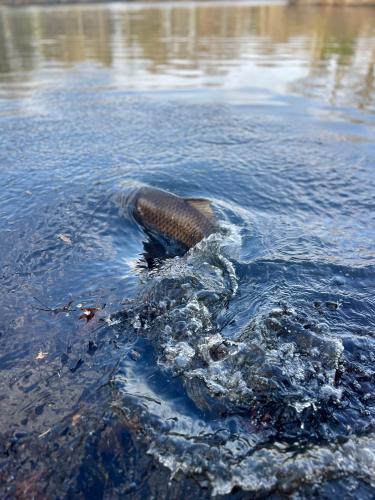
may 2025 Winners
3rd Place
Daphne Forster
1st Place
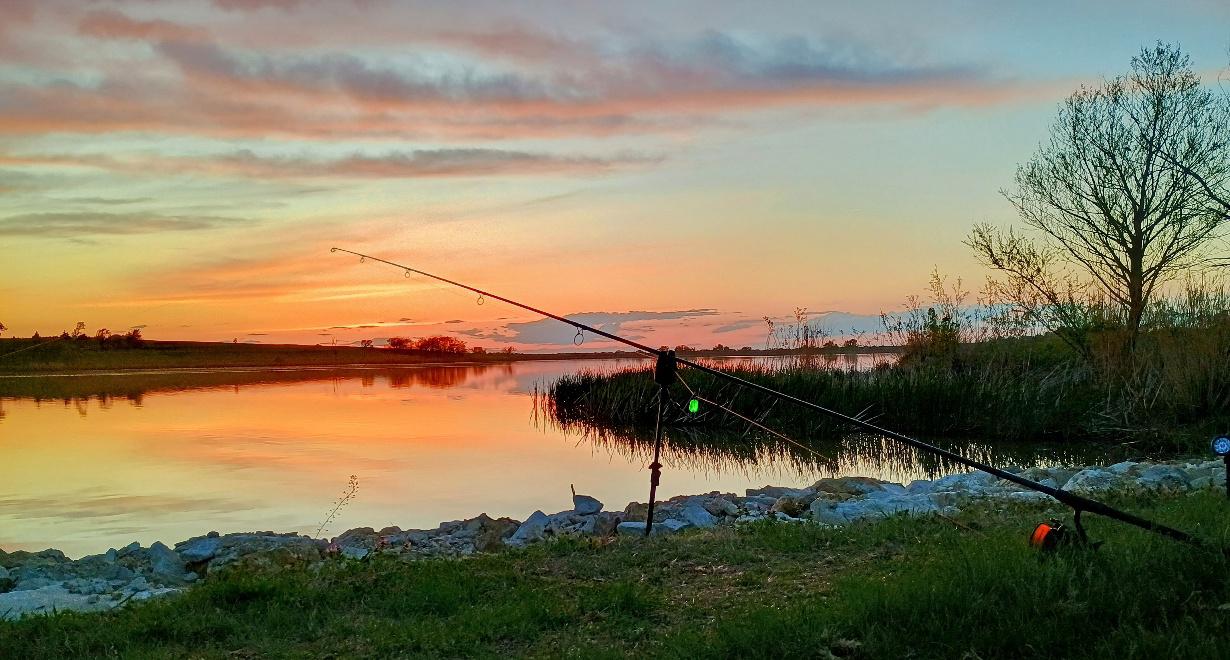
Kevin Zirjacks
2nd Place
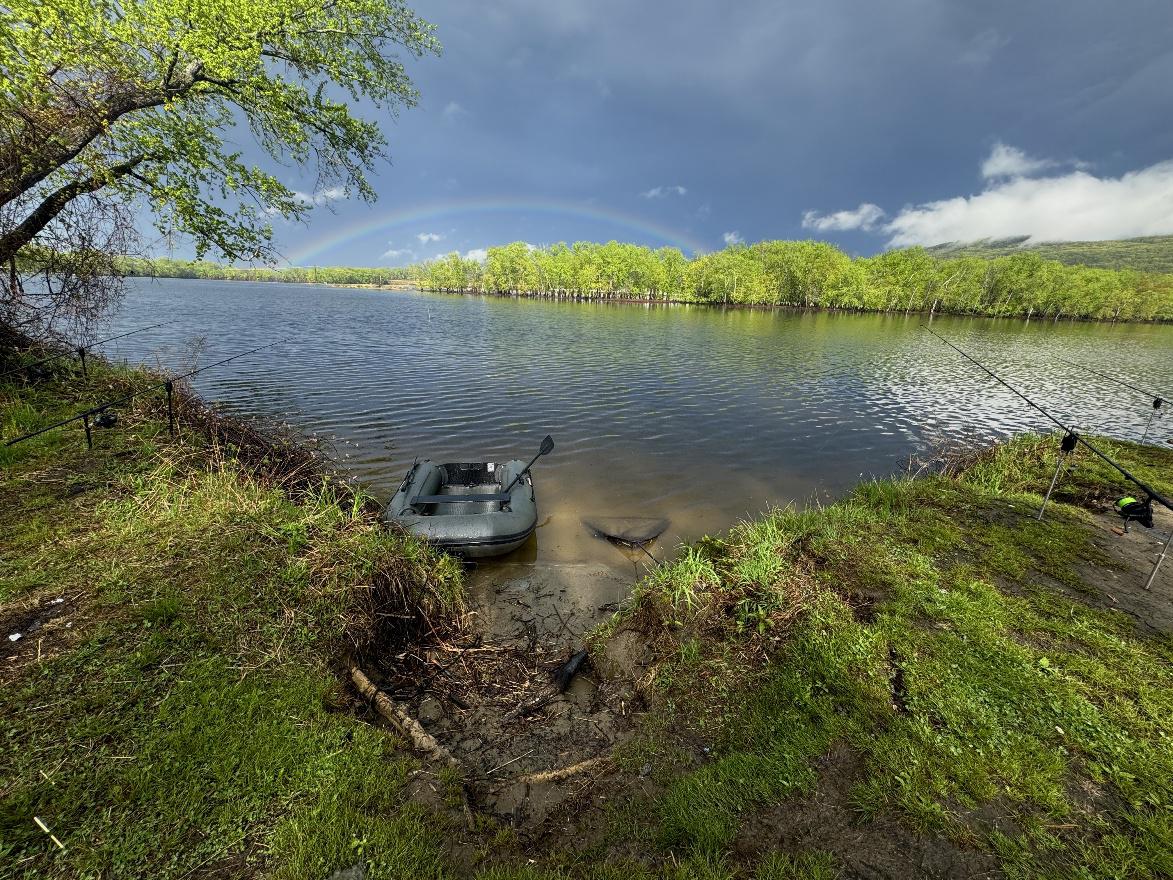
3rd Place
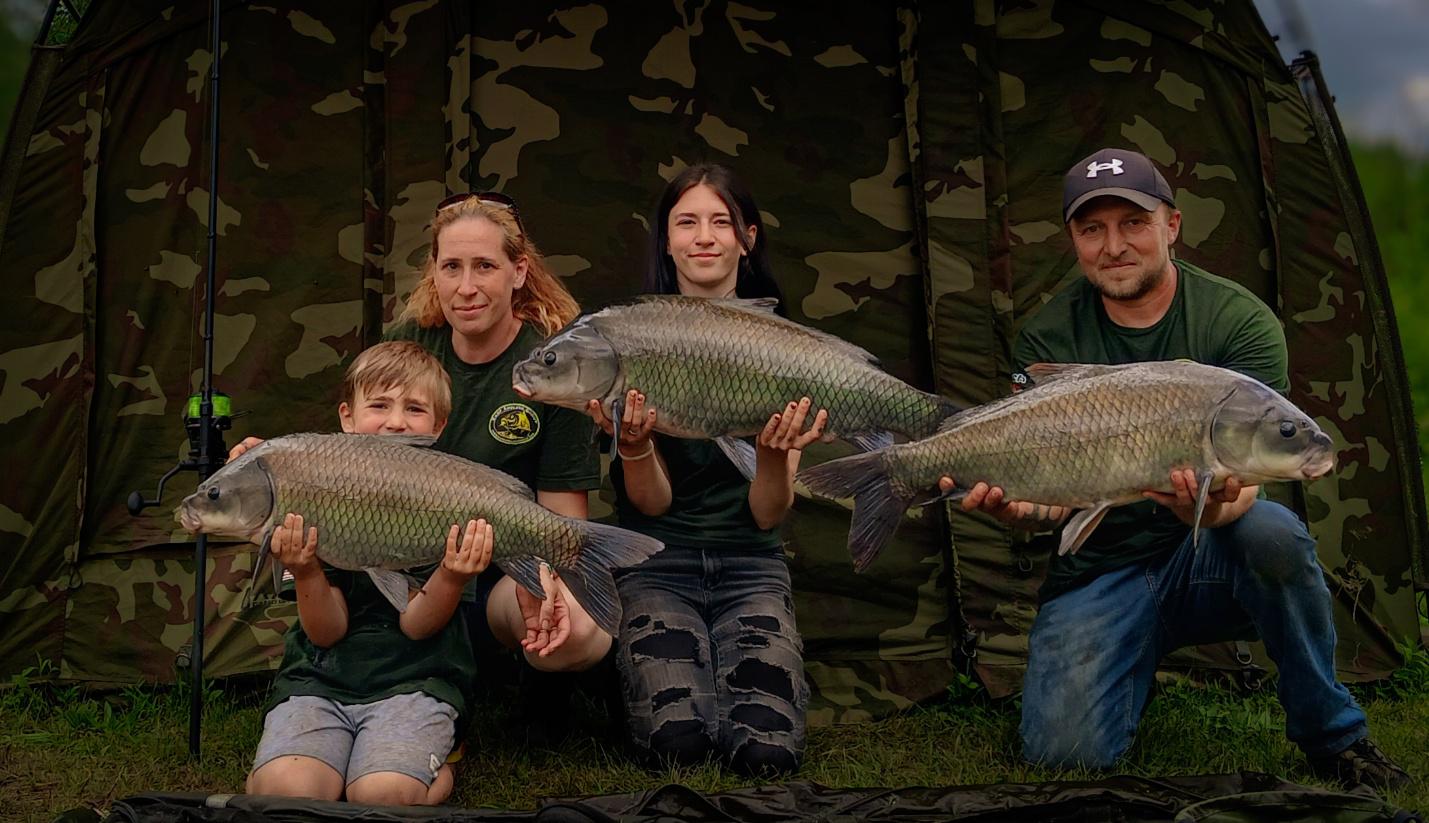
Sam Hernandez
Joshua Jones
june 2025 Winners
1st Place
Frederick Hiller

2nd Place

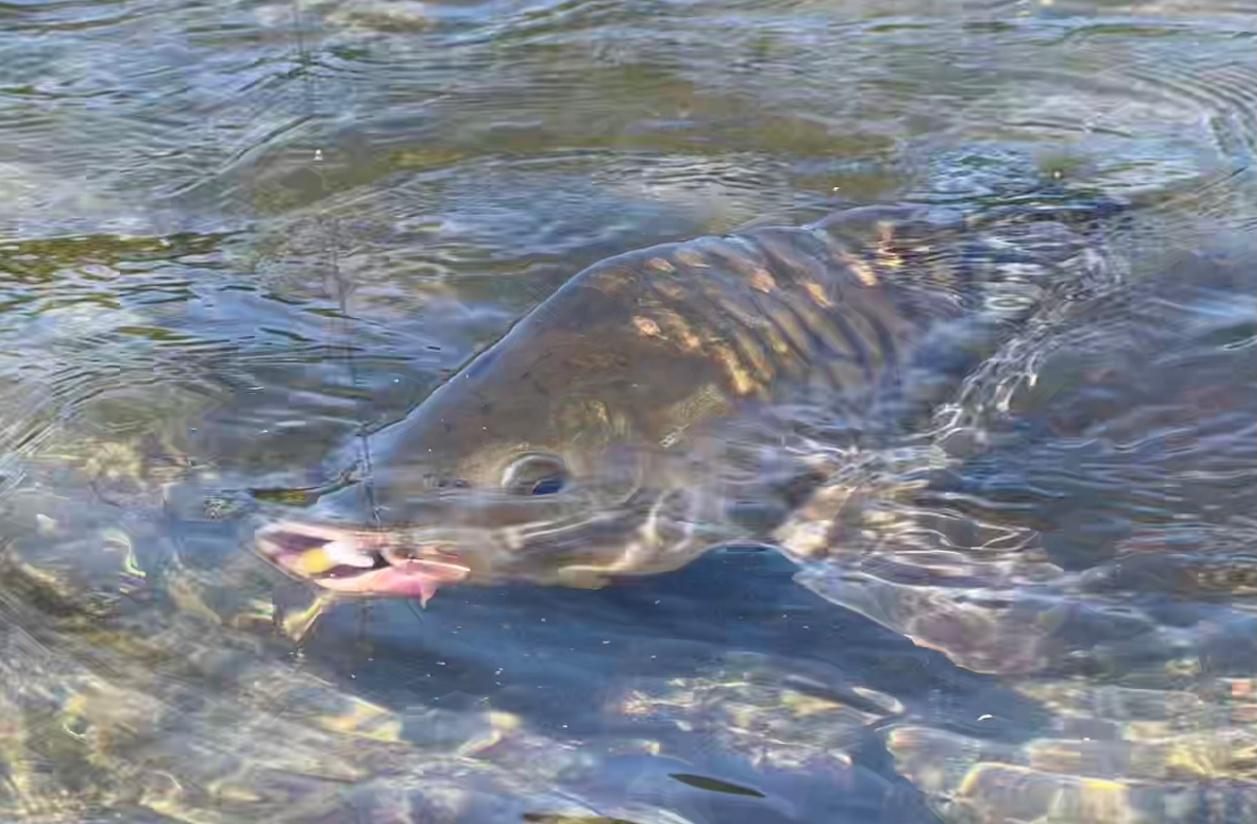
3rd Place
Evan Aziz
Dave Pickering

Chicago Carp Classic - September 20th 2025
The “Chicago Carp Classic” was first held in downtown Chicago in October 1994 and has been running ever since! This friendly but competitive one day tournament is open to Carp Anglers Group members who compete to catch the four biggest fish. The winner gets to see their name added to the coveted trophy as North American Champion. The trophy has been won by some well-known names over the years including Bernie Haines, Nigel Griffin and even Max Cottis from the UK.
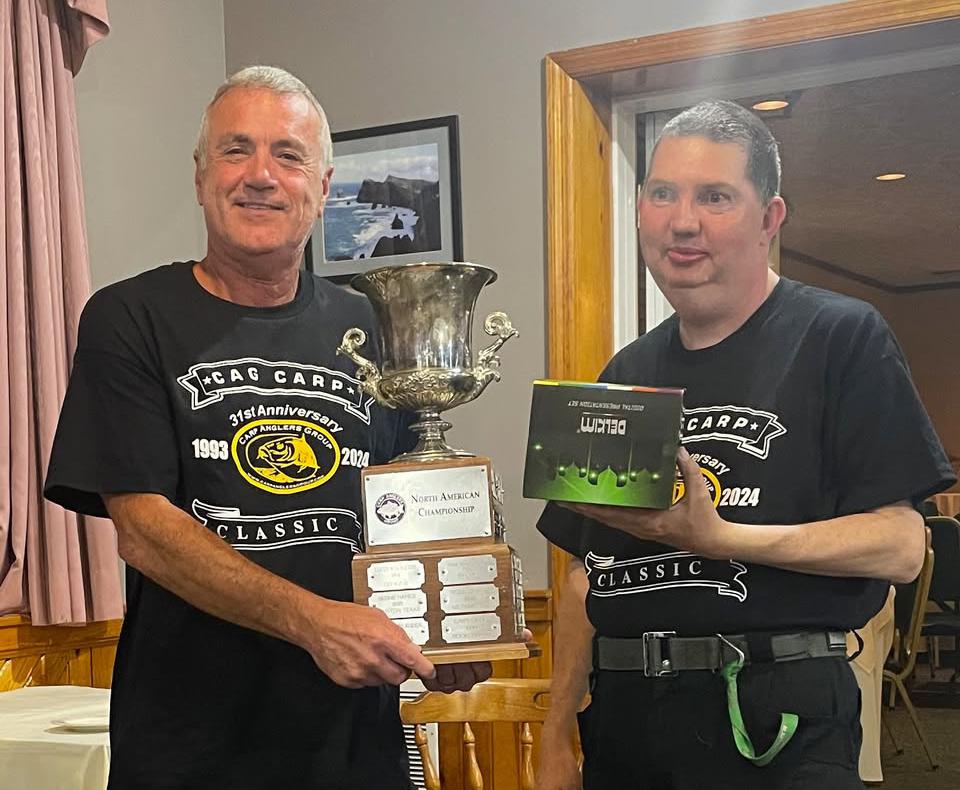
In 2024 Steve Clow was crowned North American Champion

A few years ago the CCC was renamed the “CAG Carp Classic” and has been held in different locations including the St Lawrence River, Lake Michigan in Wisconsin and the DesPlaines River in Joliet IL. but more recently on the Hudson River around Coxsackie, NY. The CCC has attracted anglers from all over the USA and even Europe! For 2025 the CCC returns to the Hudson River around Coxsackie, NY For more details and registration: https://www.carpanglersgroup.com/forum/index.php?/topic/72004-cag-carp-classic-ccc-2025-save-the-date/
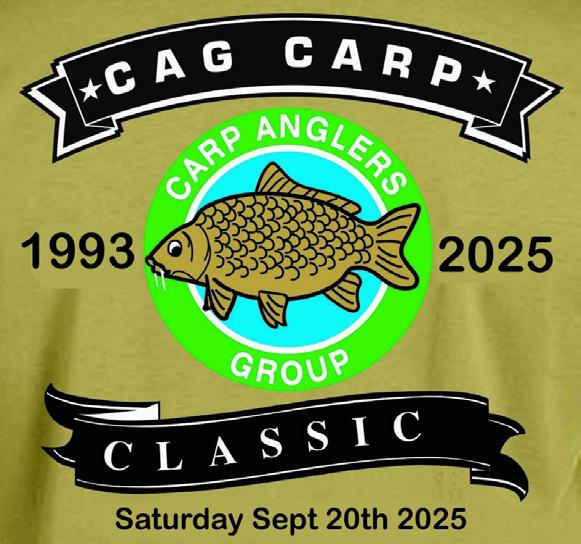
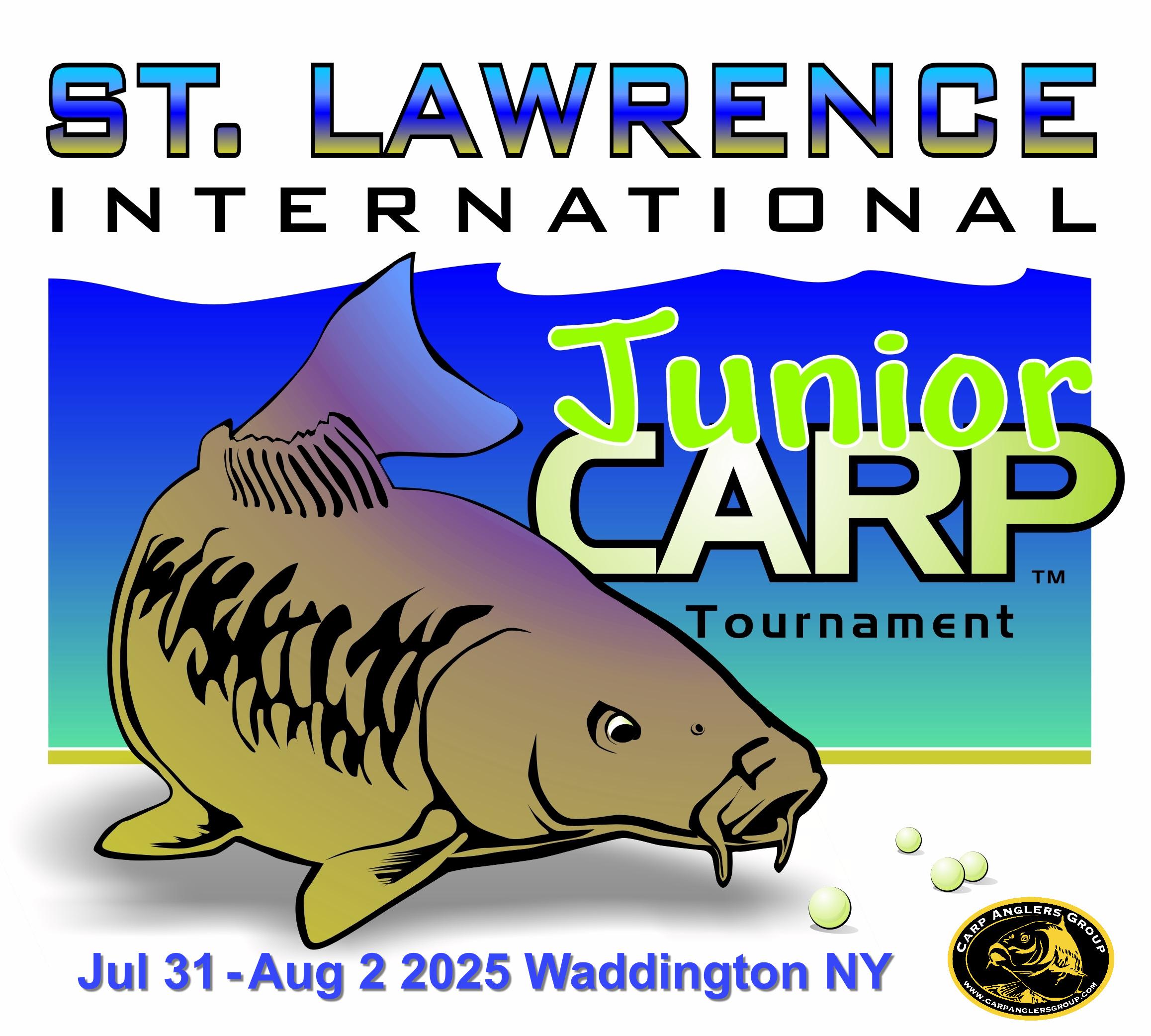
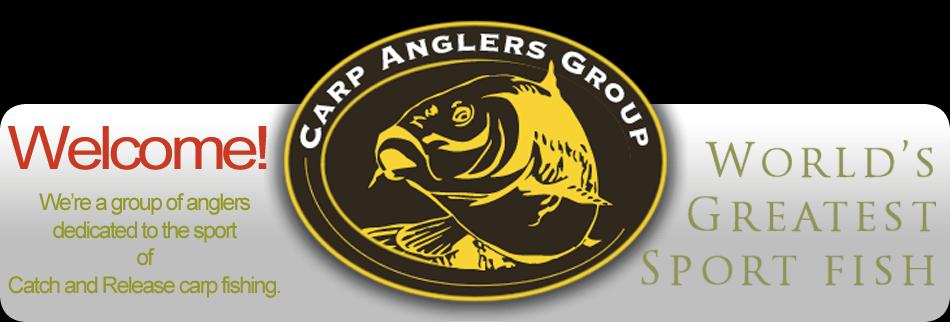
North America’s Longest Running Carp Organisation with a Dedicated Mission:
• To gain acceptance of the carp as an exciting and challenging sport-fish.
• To become better carp anglers, assist others and encourage them to join us.
• To treat the carp with respect, promote the release of trophy-size carp & encourage others to do the same.
• Most of all: Go fishing, Share with others, and have Fun.
As a member you will also be adding your voice & support to help CAG continue its efforts to work with State & other organizations to increase the recognition for carp as a sport fish to benefit the angling community
Member Benefits Include:
• Full CAG Forum Community Access









